Brooklands on TV

New series puts Museum in spotlight



MARCH-APRIL 2021
brooklands bulletin
Brake components

Clutch & Gearbox
Cooling & Fuelling
Electrical


Engine & Mechanical

Steering & Suspension
Moss began supplying sports car parts in 1948, now benefitting from decades of experience, we are one of the world’s oldest and largest sports car parts and accessories specialists.
Today, our mission is to keep the great marques alive and well by supplying parts and accessories of the highest standard. We offer friendly, professional and knowledgeable service and hold a vast number of parts in stock, available from our branches or online backed by fast, reliable delivery worldwide.
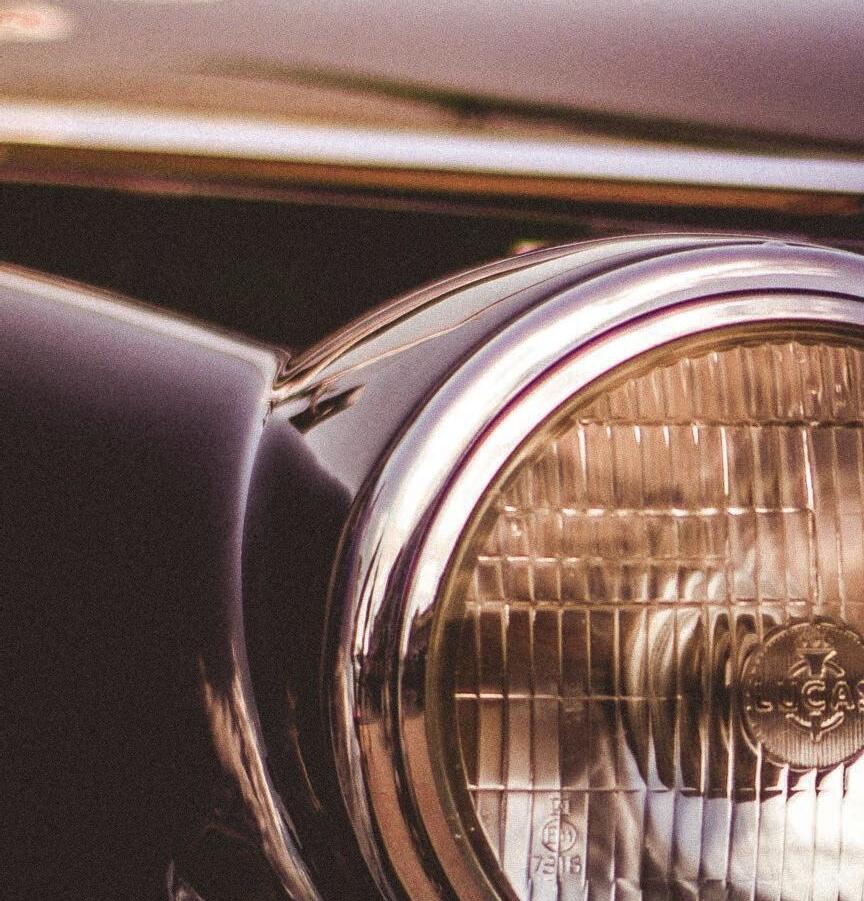
Specialising in Austin-Healey, Classic Mini, Jaguar, Mazda MX-5, MG, Morris and Triumph.
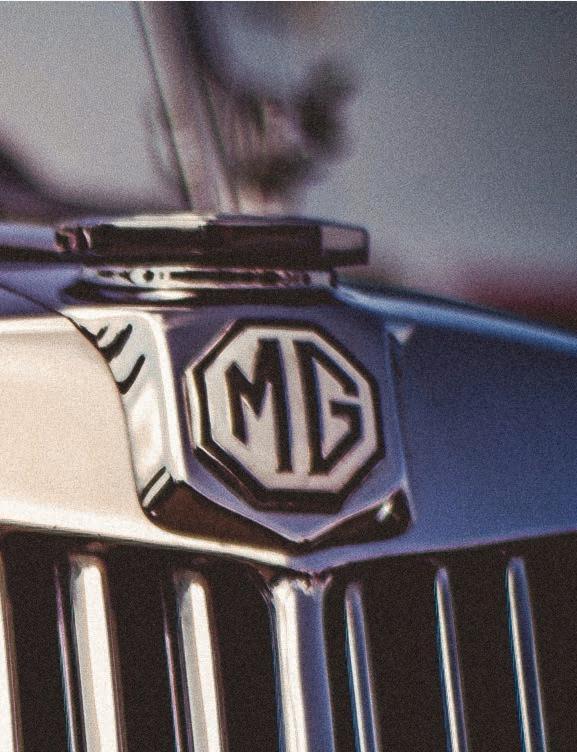

moss-europe.co.uK
MX-5 JAGUAR London +44 (0)20 8867 2020 Bradford +44 (0)1274 539 999 Bristol +44 (0)117 923 2523 Manchester +44 (0)161 480 6402 Paris +33 (0)1 30 80 20 30
SPECIALISING IN CLASSIC MINI,
PARTS ACCESSORIES TOOLS
JAGUAR, MAZDA MX-5, MG, MORRIS, TRIUMPH AND
UNIVERSAL COMPONENTS.
Welcome
I’d like to start this issue by saying congratulations to everyone at Brooklands for winning Best Museum in the Essential Surrey Awards. It is testament to the hard work of all the staff, Volunteers and Members that Brooklands won the award for the second year in a row when 2020 threw up so many challenges. Regardless of that, work continued whenever possible and new exhibits were added to ensure there’s always something new to see.
This year marks the 30th anniversary of the Museum opening its doors to the public and that’s another landmark worth celebrating. We have the original Director, Morag Barton, telling us how she came to be involved with Brooklands and the creation of the Museum. As you read Morag’s words, it quickly becomes clear she loves Brooklands now as much as she did three decades and more ago. She also shares a determination to make it a place that looks forward just as clearly as it embraces the past.
This idea was the driving force behind the new television series Secrets of the Transport Museum that is soon to air on the Yesterday Channel. It’s very exciting to anticipate seeing so many people involved with Brooklands on television and finding out how their work helps the Museum to continue even in these challenging times and evolve. I know I will be tuning in to watch every episode and I’m sure you will be too.
Alisdair Suttie Editor Brooklands Bulletin



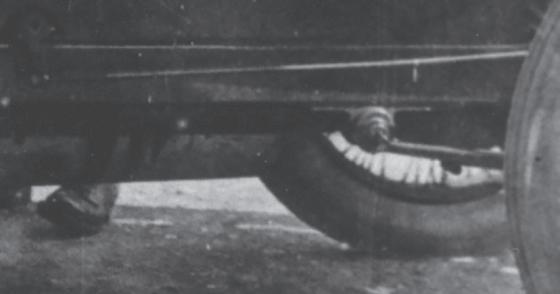



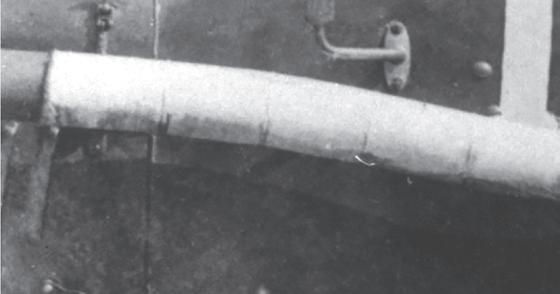


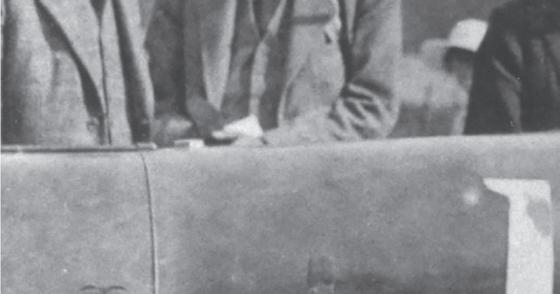

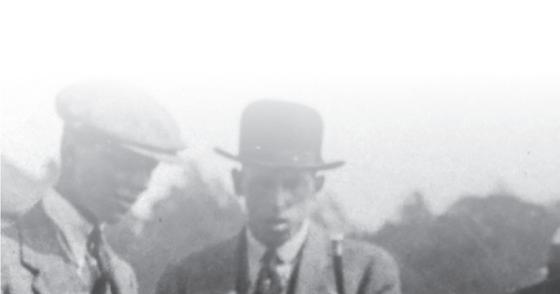
Become a Member
Brooklands Members is the official support organisation for Brooklands Museum and is dedicated to raising funds for the preservation of the historic Brooklands site.

Members receive the Bulletin six times per year and enjoy free admission to the Museum, except when major events are taking place, in which case additional charges may apply. Club Level Members have access to the Clubhouse Bar on Thursday, Friday and Sunday lunchtimes.

For full details of membership benefits, contact the Members Administrator, Sarah Dover 01932 857381 ext 226; or wwwbrooklandsmembers.co.uk where you can find the latest news on Brooklands.

MARCH - APRIL 2021 | BROOKLANDS BULLETIN 3 brooklands bulletin The Journal of Brooklands Members contents REGULARS News 4 Museum Updates 7 Letters 11 Forthcoming Events 13 Members’ Matters .............. 43 Reviews 49 Around the Collection 50 FEATURES A man of firsts .................... 14 In the beginning 20 Cracking the ton ................. 26 Darkest hour remembered 32 Apprentice for life 36 14 20 32 36 26
Front Cover photo: Mike Venables
Brooklands on the small screen

The television series Secrets of the Transport Museum will begin on Tuesday 30 March at 8pm on the Yesterday channel. There are 10 60-minute episodes in the series that go behind the scenes of Brooklands Museum to show how the Volunteers, Members and staff work to restore and preserve the collection.
Secrets of the Transport Museum was commissioned by UKTV from Middlechild Productions. UKTV’s Senior Commissioning Editor Helen Nightingale said: ‘It’s a real privilege to take viewers behind the scenes at the historic Brooklands Museum. The commitment and vast knowledge of the Volunteers is amazing, and to be able to get under the bonnet some of the most
2021 events dates
iconic vehicles in British transport history is going to be a real treat.’
Andrew Eastel, Executive Producer for Middlechild Productions, said: ‘From the moment you arrive, you realise Brooklands is a very special place. We are so lucky to have been granted such unique access, to be allowed this close to the inner workings of some of the most important vehicles of the 20th Century. The staff and Volunteers inject so much life into every car, bike, plane and bus with their unparalleled knowledge.’
Yesterday’s Gerald Casey added: ‘Keeping the engineering endeavours and monuments to speed alive at Brooklands is extremely impressive when you see it is largely done by a team of dedicated
A calendar of exciting events for 2021 has been announced by Brooklands. One of the highlights will be the tribute to Sir Stirling Moss that is now scheduled to take place on Sunday 12 September. It will include a unique line-up of cars from Sir Stirling’s racing career, as well as guest appearances from those who knew him.
Other dates to put in your diary are the weekend of 19-20 June when Brooklands will host a Summer Festival of Motorsport and Double 12 event. Following on from that is Motorcycle Day on 4 July, Italian Car Day on 18 July, and on 24 July we will have the Vintage Aviation Festival.

August is another busy month with the Members Retrojumble and Classic Car Show slated for 1 August. It’s followed by Brooklands Relived with a celebration of the 95th anniversary of the first British Grand Prix at the track on 7 August. The 22 August sees the Summer Classic Gathering that replaces the cancelled New Year’s Day Gathering. American Day is on 5 September and Emergency Services Day is on 26 September.
It’s shaping up to be a brilliantly busy year at Brooklands, but please check the website for updates. All events are subject to Covid restrictions that may be in place at the time and the schedule may need to change. Some events may have limited capacity and tickets will need to be pre-booked.
Volunteers. I’m really pleased Yesterday viewers will be able to see this, both those who have never visited the Museum in person before and those who have been unable to of late.’
Brooklands wins Essential Surrey Award

Brooklands Museum has won the Best Museum in the Essential Surrey Awards 2020. This makes it two years in a row that Brooklands has lifted this prestigious prize.
Alongside Brooklands Museum, other well-known venues across the county competed for Best Museum award, including The Lightbox in Woking, Rural Life Centre at Farnham, Ewells’ Bourne Hall Museum, and the Kempton Great Engines Trust in Sunbury-onThames.


The Essential Surrey Awards are voted for by the public and are now in their second year. Brooklands Museum takes the crown for Best Museum in 2020 after winning in the 2019 inaugural awards against Watts Gallery, Haslemere Museum, The Sunbury Embroidery Gallery and New Ashgate Gallery.
Katharine Allen
LGBT History marked
February marked LGBT History Month. To commemorate this, we will be posting LGBT stories relating to Brooklands’ history on our social media channels. These stories have been identified through work with Racing Pride, a movement promoting LGBTQ+ inclusivity in the motorsport industry.
Anna Jackson
Brooklands Legacy
March 2021 is Free Wills Month and anyone aged 55 or more can write or update their will free of charge. You can also choose to leave a gift to Brooklands if you have been captivated by our stories, events, and commitment to inspiring the next generation of innovators. By leaving a Legacy, you will help us preserve our site and collections for future generations. You can use a participating solicitor for Free Wills Month in England, Scotland and Wales. Or, for information on how to leave a gift in your will, please visit our website or contact Tamalie Newbery at: tnewbery@ brooklandsmuseum.com
Anna Jackson
BROOKLANDS BULLETIN | MARCH - APRIL 2021 4 news
Dame Margaret Weston 1926-2021
We are saddened to announce that former Brooklands Museum Trustee, Dame Margaret Weston, recently passed away.
Dame Margaret was a Founding Trustee of the Museum from 1987 to November 2001. She was the first woman to be appointed Director of the Science Museum and was a pioneering leader.
As a Founding Trustee, Dame Margaret (on the left in the picture) was a great support and inspiration in the early years when the Museum was being built. She was an advocate of females in senior positions, and the opportunity to support Brooklands Museum’s first female director, Morag Barton, attracted her to the role.

Ann Watson, who worked with Dame Margaret, said: ‘She was a wonderful lady. I remember her arriving for meetings at the Museum, and she would bustle in. She was quite a short lady but always smartly dressed. She definitely made an impact here.’
Margaret became a Dame Commander of the Order of the British Empire in 1979. She was made a Fellow of the Museums Association in 1984 and in 2018 became a Fellow of the Science Museum.
Message from Members’ Chairman
Let me start by wishing you all a Happy New Year. Since the last Bulletin, we have entered a third national lockdown, and the Museum has had to close again. However, with the vaccine roll-out proceeding well, there is now some light at the end of the tunnel and we can hopefully look forward to better times in the spring and summer.
Virtually everything I have written in last year’s Bulletins has been overtaken by events by the time it reached you, so it is better that you check the Forthcoming Events page for the latest changes to Museum events. You will see here in the news pages the Stirling Moss tribute has been rescheduled. In respect of our Annual Dinner, we are not able to make any decisions until we know about social distancing, attendance limits, and catering arrangements, so it is simply a case of ‘watch this space’.

Your Committee meets bi-monthly via Zoom and continues to work closely with Tamalie and the Trustees in a positive and constructive way, planning for the post-pandemic future. The membership has been the lifeblood of the Museum during this period, a fact that is genuinely recognised and appreciated. The ‘new normal’ that everyone is predicting will mean managing social distancing and capacity limits for some time, but we are determined to make the experiences for Members enjoyable and rewarding. We have had a lot more direct contact via email or telephone with Members over the past year, and are responsive to suggestions put forward. The feedback is that, given the circumstances, we are maintaining the special bond we share.
Several members have raised the issue of the reception lobby refurbishment project, which includes the long overdue provision of a passenger lift in the Clubhouse. Although, like all capital projects, this on hold until the future funding position is clearer, there is good news as Elmbridge Council (the major contributor to
HSA gets tooled up
The Heritage Skills Academy’s (HSA) second teaching site at Brooklands has now been equipped with bespoke toolboxes from King Dick Tools. This new educational partnership will deliver apprenticeships in heritage engineering and is based in the Flight Shed Workshop.
The new British-made tools give the apprentices the best equipment for the job and the HSA’s John Pitchforth said: ‘It’s a pleasure to deal with Griff Roberts and his team at King Dick Tools. The quality is second to none and helps our apprentices appreciate that quality is for life. The Brooklands facility is superb and all of the electrical work is now complete, and we are finishing off the welding bay installation. This is a fabulous place for the apprentices to learn and experience heritage engineering.’
Reshma on The Chase
Brooklands Volunteer Reshma Vora appeared on ITV’s The Chase and took the opportunity to promote the Museum. Reshma said: ‘It was great talking to host Bradley Walsh about Brooklands. He was genuinely interested in what we do and continued the conversations off camera. I hope my words encourage him and viewers of the programme to come to the Museum. It would almost feel like a win from the show!’
 Sarah Levine
Sarah Levine
the project) has confirmed they understand the reasons the project is currently on hold and the deadline for using their funding can be extended if necessary. The Members Committee, Museum management and Trustees have made this a priority and are committed to delivering this project as soon as circumstances allow.
Your vital subscriptions and renewals are being processed by Sarah Dover, who has done a sterling job, and both her practical approach coupled with a ‘can do’ attitude have been first class. How lucky we are to have her, and the Committee unanimously passed a vote of thanks to her at our last meeting.
During the past year, we have discovered that many of you have changed your email address since you joined and are not receiving communications from us, such as the Newsletter. We are going to request that you confirm your email address upon renewal, but if this mention gives you a Eureka moment, get in touch and we will update them for you.
I have been in touch with a small group of Members, who were involved with Brooklands in the period immediately before Bill Boddy formally established the Brooklands Society. From these conversations, it is clear there are a lot of interesting tales to be told. This group is dwindling as age inevitably takes its toll, but I have invited them to the Clubhouse for lunch when conditions permit and Mark Jarman has kindly volunteered to video their reminiscences. If there are any Members who were involved in that period, or were Members of the Brooklands Association, please let me know so you can be included in the invitation.

I look forward to seeing you at Brooklands again, hopefully in the spring. In the meantime, stay safe.
Neil Bailey
MARCH - APRIL 2021 | BROOKLANDS BULLETIN 5 news
Photo: Science Museum/Science & Society Picture
Unit 6, Studley Court, Guildford Road, Chobham, Surrey GU24 8EB
Unit 6, Studley Court, Guildford Road, Chobham, Surrey GU24 8EB
Tel: 01483 722 923
• web: www.dclass.co.uk

Tel: 01483 722 923 • web: www.dclass.co.uk
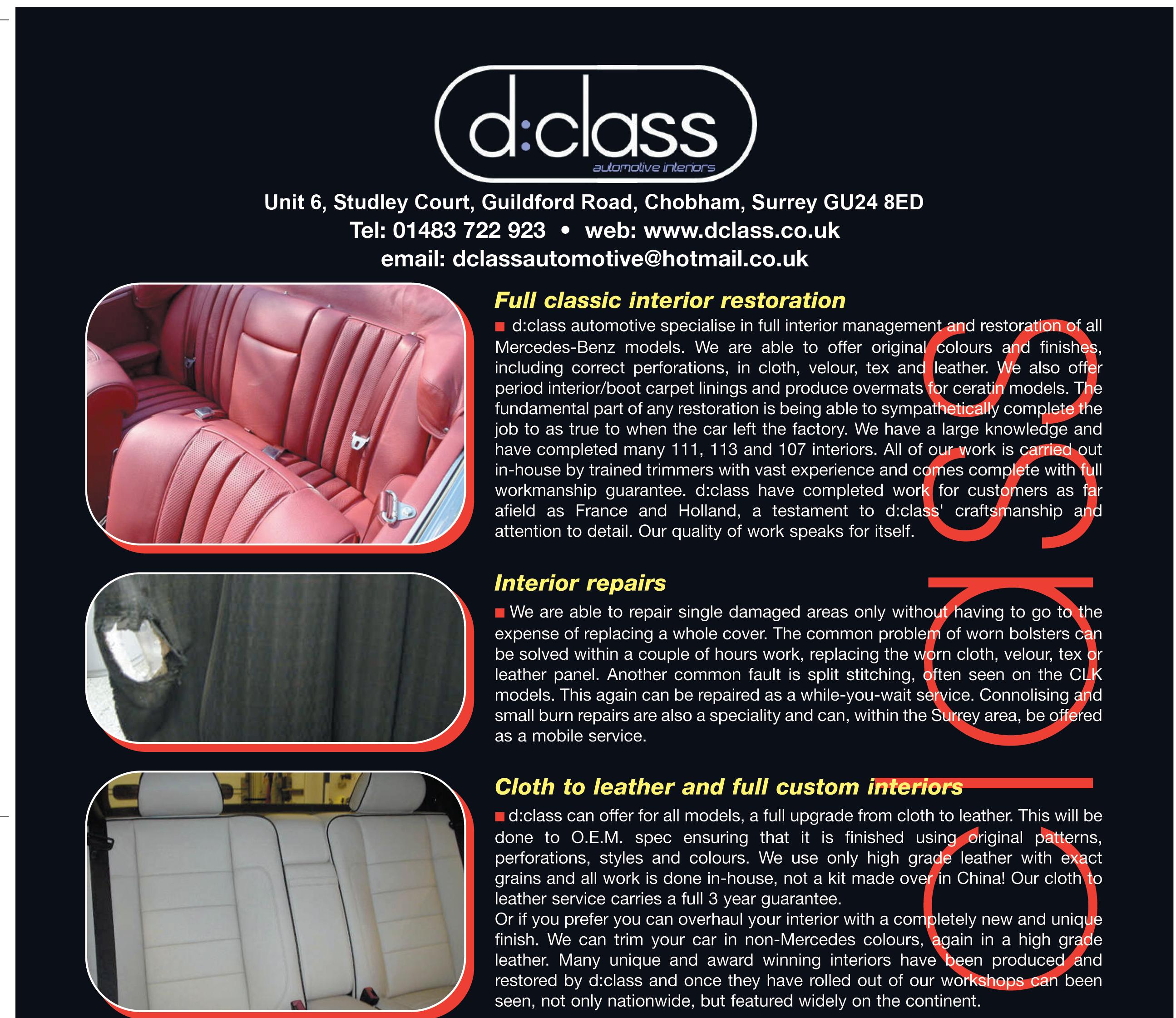
email: dclassautomotive@hotmail.co.uk
email: info@dclass.co.uk
D:class automotive @dclassauto @dclassauto
Full classic interior restorations
d:class automotive specialise in full interior management and restoration of all classic cars. Our knowledge is second to none in supplying period correct carpets, leather or vinyl.

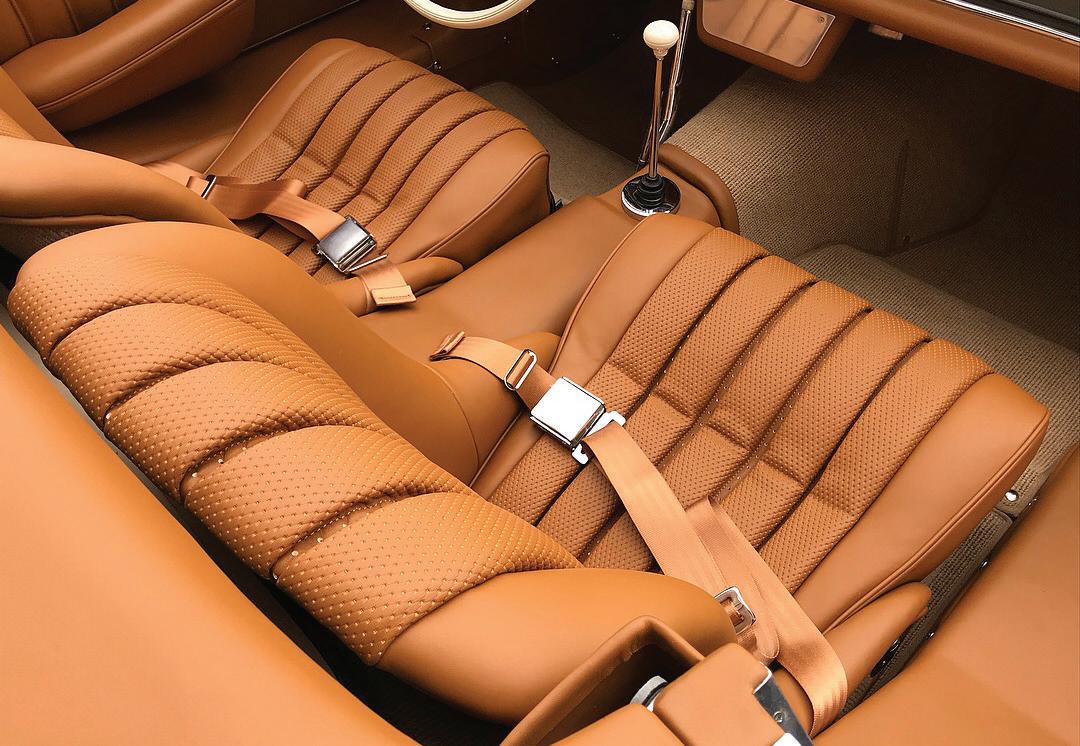

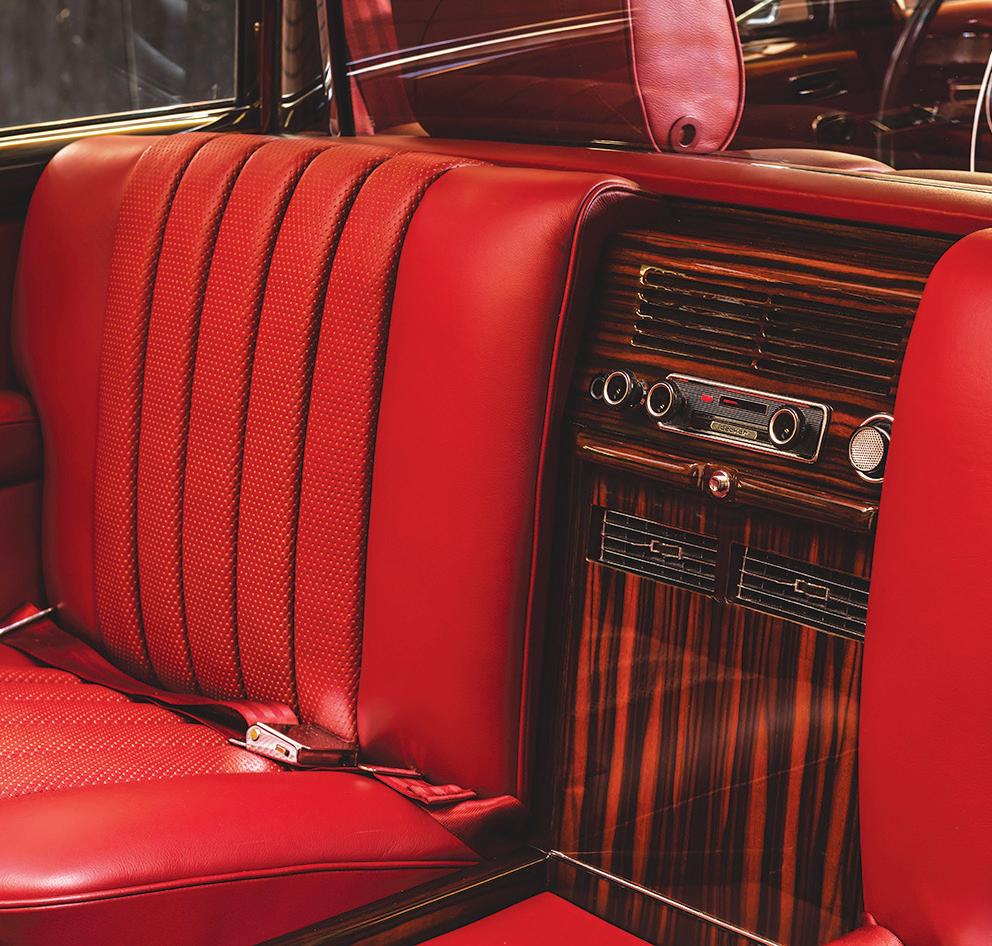
We are very well known and respected in our field of expertise for such marques as Mercedes Benz, BMW, Ferrari, Rolls Royce and Porsche.
All our work is carried out in-house by trained trimmers with vast years of experience and all works come complete with our full workmanship guarantee. d:class have carried out work for customers worldwide and we are happy to work with any possible logistics required for shipping of parts or cars and this is a true testament to the craftmanship and attention to detail that we put into our work. Our quality of work speaks for itself.
Interior repairs
We can repair single damaged areas only without having to go to the expense of replacing a whole cover. The common problem of worn bolsters can be solved within a couple of hours work, replacing the worn cloth, velour, tex or leather panel. Another common fault is split stitching, often seen on the newer model of cars. This again can be repaired as a whilst you wait service. We specialise in warranty work for many manufacturers for the likes of McLaren, Lamborghini, Jaguar, BMW, Mercedes and Ferrari to name a few.
Cloth to leather and full custom interiors
d:class can offer for all makes of car a full upgrade from cloth to leather. This will be done to OEM spec ensuring that it is finished using original patterns, perforations styles and colours. We use only high graded leather with exact grains to match factory finishes and all work is carried out in house. We do not use off the shelf kits and all our work carries a 3-year guarantee.
Alternatively, if you prefer you can overhaul your interior with a completely new and unique finish. Using the brightest leathers on the market or designing your own custom bespoke design on our state-ofthe-art CNC stitch, embroidery and perforation machine. If you can think it, we can create it.
Many unique and award-winning interiors have been produced and restored by d:class and once they have rolled out of our workshops they can be seen nationally and internationally across, not only our own social media but many social media influencers and renown publications.
Hood fitting and rear screen repairs
A full hood fitting service is available in house for a wide range of vehicle manufacturers, we specialise in classic Mercedes hoods. All our hoods come with a 1-year guarantee and are available in a wide range of colours to suit. We can supply and fit OEM where available or aftermarket hoods.
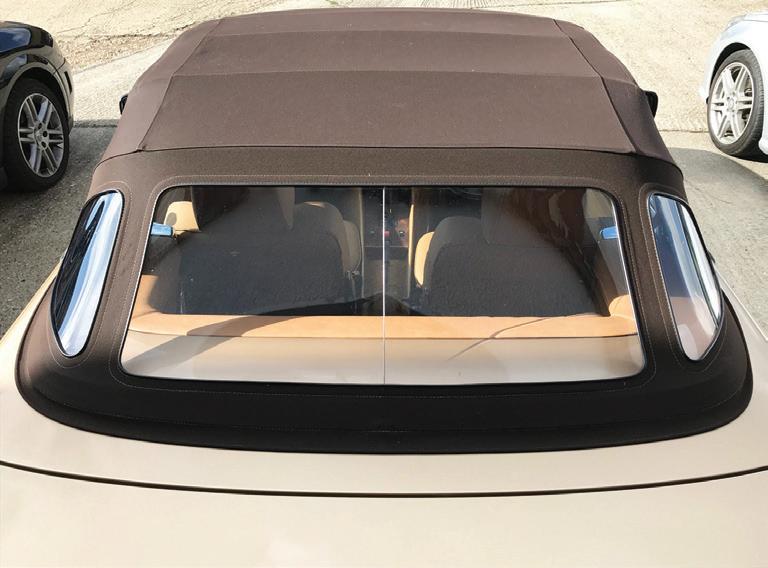
d:class
Many convertible owners experience the common issue of the deterioration, discolouration and eventual cracking of the perspex rear screens, within the workshop we can carry out a replacement service of this issue to most vehicles with the exact thickness perspex required.
We are located in Surrey, 15 minutes from junction 10 or 11 of the M25 and from the A3. Collection can be arranged of your vehicle depending on distance.
Director’s Message

Although it hasn’t been the start to the year that we hoped for, we are busy planning for when things get better. We have published dates for a full programme of events and activities at Brooklands Museum this year in the anticipation of larger gatherings being possible this summer.
All of our most loved event days will be back, whether you prefer aviation, motorsport, classic cars or being immersed in our vintage festival. A highlight will be the celebration of the life of Sir Stirling Moss on 12 September, organised by Brooklands Members, as a tribute to the great man who was Brooklands Members’ first president.
Sadly, the Museum was closed on New Year’s Day, so it was not possible to host our normal Classic Gathering, nor the vehicle parade which we had organised as an alternative. However, we don’t want everyone to miss out on the opportunity to bring their pride and joy to Brooklands, so we have set an alternative date for a Summer Classic Gathering on Sunday 22 August. Put the date in your diary now!
As well as planning for the year ahead, we are also thinking about the Museum’s longer-term future. Our architects, Purcell, have been analysing the Museum site, its opportunities and constraints in preparation for thinking about a masterplan of how the site should develop over the next 20 years.

We want visitors to easily understand the Brooklands story, and appreciate the unique and important heritage that we care for. Preserving, even enhancing, the site’s historic character and features is of great importance. Many of the buildings and the Race Track need conservation and there will need to be some new buildings to look after the Collection and create new exhibitions. The stories we tell will show the connection between the types of people who broke new ground in their fields at Brooklands in the past and the innovation,
Austin 7 Knight

Following extensive reinstatement work on the engine, the Austin 7 was finally coaxed back into life by adding fuel directly into the carburettor bowl. Unfortunately, once this fuel was exhausted the engine stopped. Further investigation showed there was plenty of fuel in the tank and, following checks to ensure there was no blockage to the fuel pipes, the problem was diagnosed as being a defective mechanical fuel pump. This particular type of pump is driven by the engine camshaft. A lobe on the camshaft operates a lever that actuates the pump with the engine running. These days, it’s quite common to see these mechanical pumps replaced with electric pumps, although this detracts from the originality of the vehicle.Removing the pump on this Austin is not a straight forward operation as it’s located underneath the four-branch exhaust and
entrepreneurialism, engineering expertise and great human endeavour that the world needs today to meet this century’s challenges.
In the meantime, we are all full of anticipation for the airing of Secrets of the Transport Museum. The first episode is expected to be broadcast on the Yesterday channel on 30 March. We hope you will really enjoy the series and seeing some of the behind-thescenes activity at the Museum. The television series has its own social media pages, so please follow them for all the latest news and let us know what you think of it.
Tamalie Newbery
redesigned carburettor fuel inlet system. Finally removing the pump and recovering the dropped nuts and washers from underneath, it was discovered the main diaphragm and top filter cover gasket had started to perish, so fuel was not being drawn from the fuel tank and pumped to the carburettor.
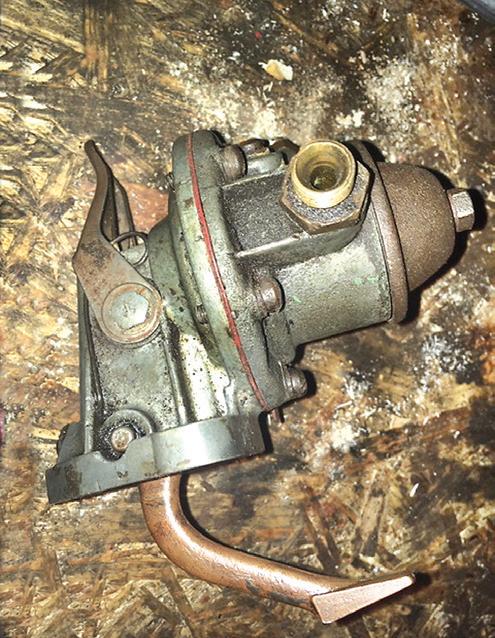
The deterioration of the diaphragm material and top gasket could be attributed to modern fuels where original factory-fitted materials are still in use. Modern fuels in a lot of older cars causes damage and premature deterioration to some materials. Sourcing new parts for Austin 7s is relatively easy and a new diaphragm was purchased. However, the filter cover gaskets are not available, so we manufactured one from a sheet of petrol resistant gasket cork.

Giving the pump a good clean, we rebuilt the unit, fitted a new gasket between the pump body and engine block, and it was refitted, which was just as difficult as removing it. To give the starting process a helping hand, we topped up the carburettor bowl, switched on, and the engine burst into life without issue.
Malcolm Day
MARCH - APRIL 2021 | BROOKLANDS BULLETIN 7 updates
The MG PA is privately owned and was only returned to running order in early 2020. You would expect that after charging the battery, draining the old fuel and refilling with fresh that she’d be off. No such luck. After running through the usual routine of cleaning the carburettors, replacing the spark plugs, and checking the HT leads,
Delahaye 135S
the MG still wouldn’t start. Obviously, something more was troubling the old car. This needed a fresh look at the entire electrical system, in particular the prewar distributor and its connections. This was removed from the car, the internal wiring checked and cleaned, and soldered connections made where necessary.
However, it was apparent the rotor arm was incorrect as it was too long and scraping the side of the cap. A replacement was fitted, along with new points and capacitor, before the complete unit was returned to the car. Once the ignition timing had been set, which is not straightforward, the car started without issue.
Unfortunately, during this process, frass (woodworm poo!) was found in the footwell. On closer inspection, both seat bases were infested. Fortunately, this had not spread to the rest of the car, so they were removed and the disintegrating panels disposed of. The seats were placed in the onsite freezer for a week to kill off any remaining woodworm. Both have been treated with the Museum-recommended insecticide, new bases made, and the seats rebuilt.
John Philips
All of us at Brooklands were delighted when the ex-Rob Walker Delahaye 135S was loaned to the Museum for display. The car has a long and glorious competition history, including many pre-war races at Brooklands with famous drivers such as Prince Bira, Hector Dobbs and Arthur Dobson. By 1939, it was owned by Rob Walker, of the Johnnie Walker whisky family, who went on to run successful Grand Prix teams after the war.

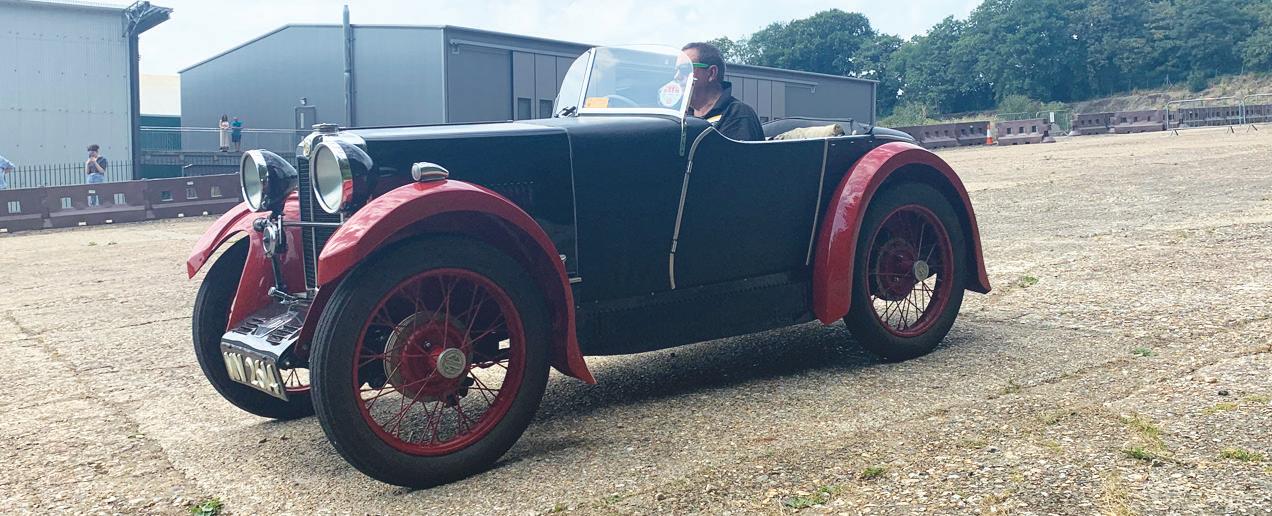
Walker first entered Dobson and the Delahaye in the Brooklands’ Whitsun Meeting of 1939, which is when it beat all-comers in aggregate races over the Campbell and Mountain layouts to determine Britain’s fastest road sports car. Three weeks later, Rob Walker and co-driver Ian Connell entered the 24 Hours of Le Mans. Despite problems with burnt feet from a leaking exhaust, the Delahaye managed a creditable eighth overall and third in class. Quite a result for a ‘Gentleman’s Team’ and, for much of the race, Rob Walker wore a pinstripe suit.
A chance conversation with the Delahaye’s current custodian Robbie, Rob Walker’s son, led to the arrival of the car at the Museum. Shortly after, Robbie asked if we could find the fault it had developed at a demonstration at Goodwood a few years earlier. I gladly accepted the task, considering it a privilege to be asked. A quick inspection found the magneto was defunct. The car had been running but would cut out once warm, a typical symptom of a magneto breaking down. So, it was despatched for a rebuild.

As the car hadn’t run for nearly four years, we had to take care that the engine was still in good condition. An oil sample was taken, despatched to Classic Oils at Bicester for testing and given a clean bill of health. The compression ratios were checked and oil pressure was present when spun over on the starter. The petrol tank and
carburettors were drained of old fuel, and the spark plugs checked, along with the battery and general wiring and connections. The bores and engine internals were visually checked with an endoscope.
All that was left was to replace was the magneto. The timing markings on the front pulley were checked for accuracy, the firing order confirmed and the plug leads refitted to the magneto cap. All of this took a little research and checking because the plug lead markings were obviously awry as were the plug leads. It took a complete remark of the firing order, the markings on the magneto cap and plug leads before all was declared correct. Once assembled, the ignition timing was set statically using the age-old technique with a ‘fag paper’ and the magneto clamp tightened.
Finally, we put a couple of gallons of fresh petrol in the car, pumped up pressure and bled the carburettors. Then it was rolled outside, ignition retard switched on and spun over. Much to our delight, it fired almost immediately and, once warm, settled to a nice steady tick-over. The brakes seemed fine and the clutch had some bite, but we wanted to save the first test drive for the owner, so we wheeled the car back into the shed.
The following morning, Robbie Walker and his wife Penny arrived to find his car working. Despite an amount of rain on the Finishing Straight, the Delahaye fired first time and, after letting the engine warm, Robbie climbed aboard and checked out the car with gusto. It ran beautifully and, after a few laps, a very happy if slightly splattered Robbie pulled in and declared it ‘running well’. Robbie then very kindly asked if I’d like to try it, so I also got a little wet but what a delight to be able to have a go. The car handles and drives very well, though it needs a little more testing and a proper run when we have better weather. In the meantime, yet another of the Brooklands exhibits is most definitely up and running.
Julian Grimwade
BROOKLANDS BULLETIN | MARCH - APRIL 2021 8 museum updates
MG PA
cla ssic car insurance
PBIS specialises in classic car insurance, as well as insurance for other collectable classic vehicles. We have been arranging insurance for your classics for over 30 years, so we know what is important to you.
Most of our classic policies include free agreed valuations, roadside assistance and recovery within UK/EU, limited mileage options and discounts for multiple car ownership.
ask us today about our classic car and bike insurance cover.

If you are interested in selling your car or motorcycle and are looking for a prompt, hassle-free cash buyer! I am always very keen to add to my current stock, so please feel free to contact me for a no obligation discussion about your vehicle.
I am particularly interested in purchasing prestige, sports, classic, vintage, racing and competition cars and motorcycles, as well as any interesting or unusual models. Complete collections purchased and all conditions considered, from barn-finds to concours. I will travel any distance for the right vehicle/s and discretion is always assured. I am a cash buyer not an agent.
If you are looking for a specific vehicle then please also get in contact as I may have or could source what you are looking for?
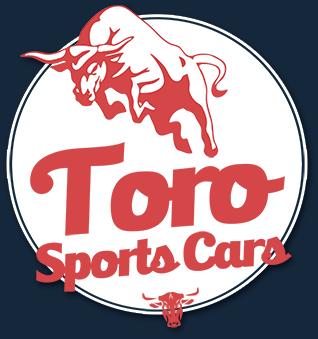
VINTAGE, CLASSIC, SPORTS
DIRECT ON: 07787 528131 WANTED visit: www.classiccarinsurance.co.uk email: info@classiccarinsurance.co.uk 01376 574000
now for an
ALL
AND MODERN CARS AND MOTORCYCLES CALL
call
instant quote
Authorised and Regulated by the Financial Conduct Authority. Registration No. 307045 | Registered in England No. 2210270 C M Y CM MY CY CMY K PeterBest_BrooklandsBulletin_Advert_130x180mm.pdf 1 19/08/2019 10:23 MARCH - APRIL 2021 | BROOKLANDS BULLETIN 9
Peter Best Insurance Services Ltd


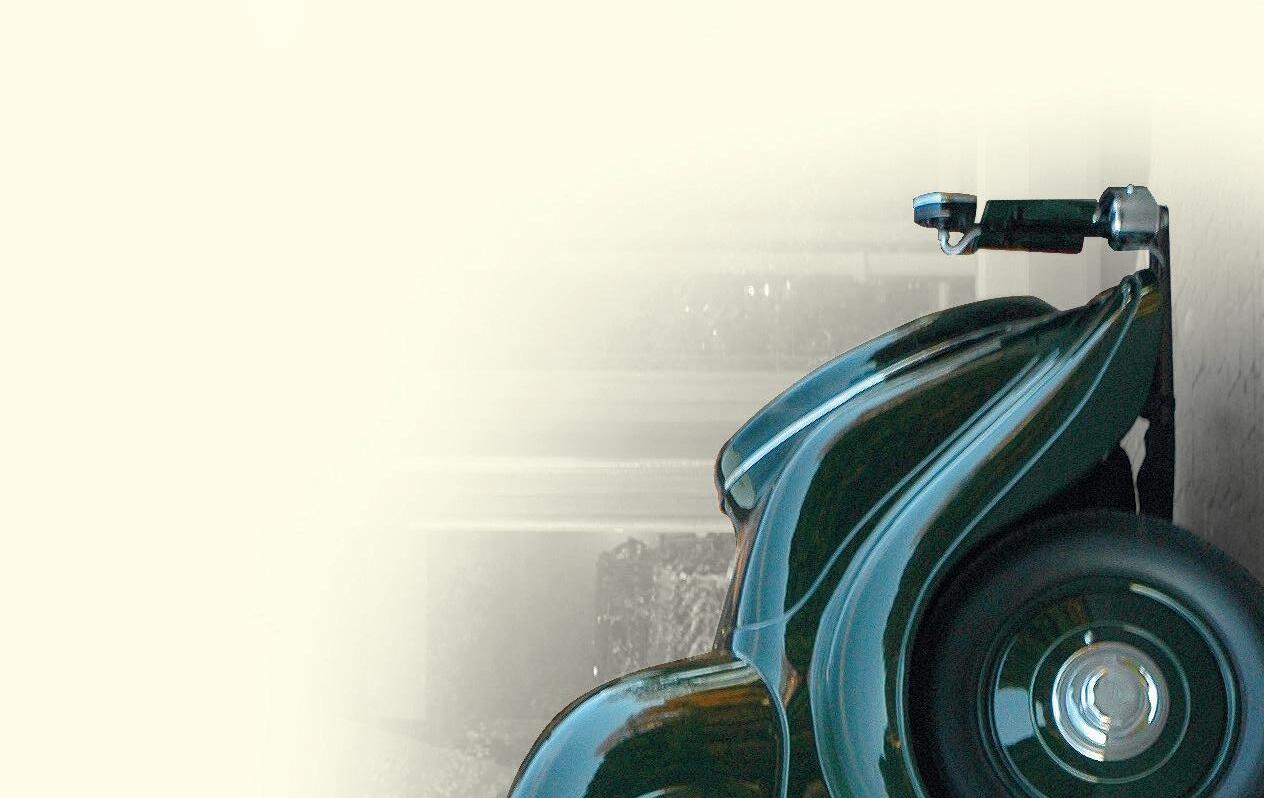





Excellent condition with good history of concours successes. Maintained by P & A Wood for many years. Very rare and attractive. B ENTLEY 4 ¼ L ITR E 1937 G URNEY N UTTING P ILLARLESS C OUPÉ Great Easton, Dunmow, Essex CM6 2HD, England Telephone: 01371 870848 Fax: 01371 870810 E-mail: enquiries@pa-wood.co.uk www.pa-wood.co.uk R OLLS -R OYCE AND B ENTLEY H ERITAGE D EALERS “ Attention to Detail”
RAF Pageant photos
Dear Sir,
Are these photos of a Vickers Vimy, Hadley Page and someone parachuting from an aircraft in 1920 at an RAF Pageant, of interest? They were taken by my father, who was demobbed from the Royal Flying Corps in 1919, but I have no idea where the Pageant was.
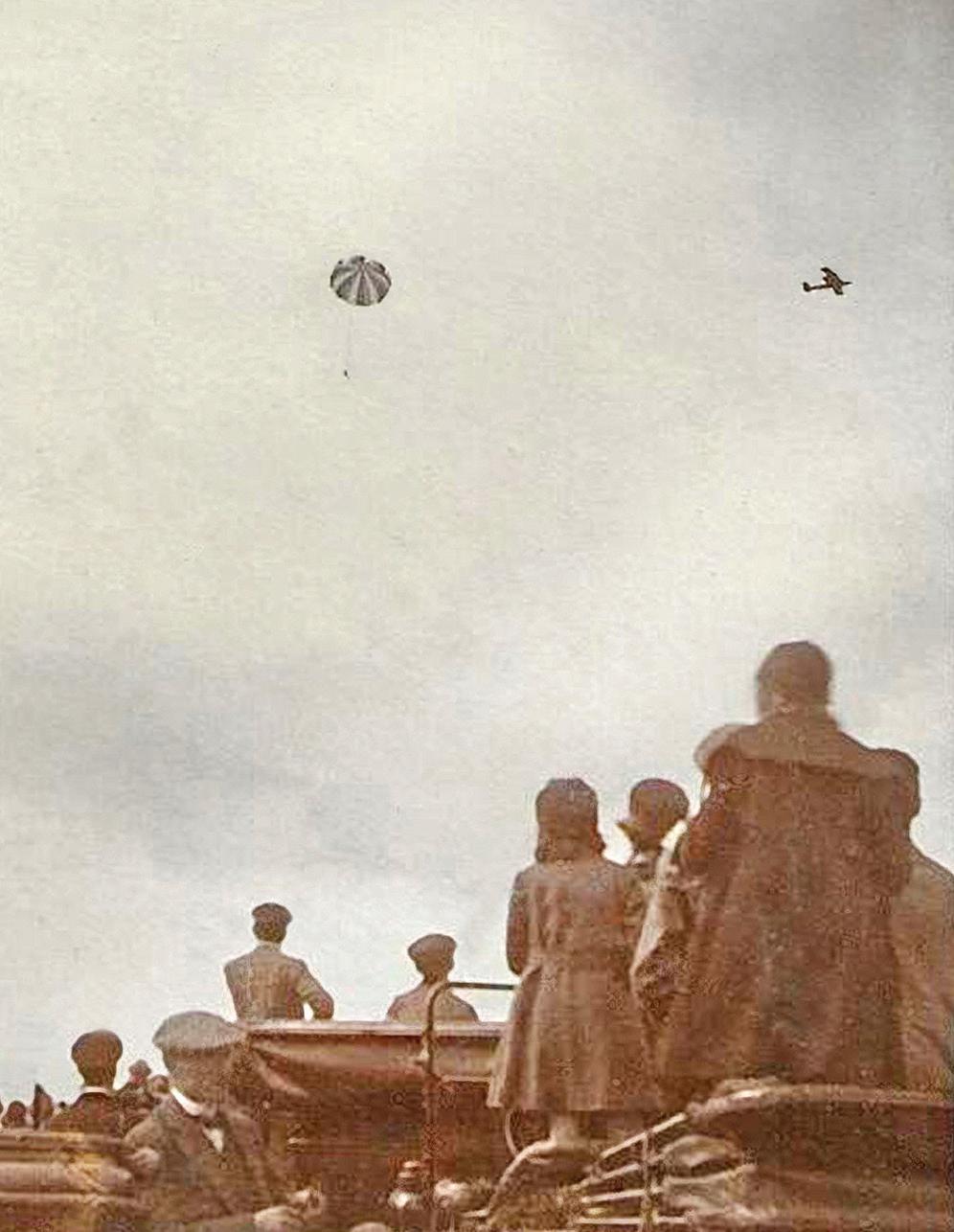


I would assume as he was home by then, it would have been somewhere like Hendon or a local RAF station close to Kingston upon Thames where he lived. He was stationed at Waddington, Lincolnshire from 1916 to 1919.
Kinds regards,
John Burch
McOstrich information sought
Dear Sir,
I was intrigued by Anna Jackson’s mention that her work now involves researching ‘at least 80 women who raced around Brooklands.’ I have intermittently tried to fi nd details on the life of Patricia ‘Poppy’ McOstrich who raced at Brooklands in the 1930s, and who appears as one of the caricatures in a cartoon in the Barbara Cartland room.
I have looked into Poppy McOstrich’s career as part of my research into the lives of the revue stars Gwen Farrar and Norah Blaney, the former having lived in my village of Effi ngham. I am simply wondering whether Anna Jackson has ever researched Poppy, or if I could contribute what I’ve learnt. I’m not looking to publish anything, this is merely a hobby.
I have worked with Brooklands before, as an organiser of the Effi ngham exhibition on the life of Barnes Wallis held in 2019, and I continue to be the Vice Chairman of Effi ngham Local History Group.
Best wishes, Jeremy Palmer
A good read
Dear Sir,
I am writing to say thank you for the Reviews page in the Bulletin. It has proved a great inspiration over the past year, which as we all know has meant more time at home that we’d necessarily like. With time on my hands, it has been a chance to catch up on reading and widen my knowledge of Brooklands even if I have not been able to visit as much as I normally would.
Several of the reviews have inspired me to buy the book being written about, and I have not been disappointed by any of them. The review of Louis Coatalen – Engineering Impresario of Humber, Sunbeam, Talbot and Darracq is a fine example of a book that might receive only limited coverage in other publications, yet it is full of detail and a wonderful read.
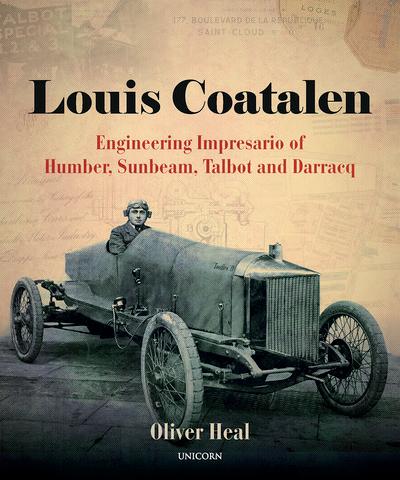
Among the other books that I have enjoyed recently is Two Wheels to War. It’s another involving story about the people as much as the machinery, and it vividly brought to life what these motorcycle riders went through.
The Bulletin’s reviewers are to be commended for consistently unearthing such illuminating titles. Their recommendations have made the past year a far more productive one than I could ever have thought possible. Thank you.
Yours sincerely, Andrew Inglis
Further plinth spotting
Dear Sir, I have been reading with interest the mystery of the circular footing at the end of the Finishing Straight and its use. While watching some
old footage on YouTube of a Brooklands compilation found on the British Movietone channel, I spotted this. At a time stamp of 10 mins 10 secs, I noticed our subject sporting what seems to be a 3ft timber fence during the camouflaging of the track in the Second World War. I have included a screenshot. I greatly look forward to hearing Members’ opinions on this mystery.

Yours in anticipation, Jed
Wootten
letters Please send letters to the Bulletin on any topic connected with Brooklands to Alisdair Suttie on: brooklandsbulletineditor@gmail.com MARCH - APRIL 2021 | BROOKLANDS BULLETIN 11

Wellington in context
Dear Sir,
One of the few benefits of a lockdown is that an opportunity arises to undertake those tasks which have been outstanding for too long. When my wife and I moved into our house over 40 years ago, we found the concrete ground floors were covered by an early form of sheet carpet underlay. On lifting the material prior to laying new carpet and underlay, we discovered the floor was covered with old newspapers dating from March and April 1938, plus a Bulletin of Bargains for Motorists printed by Gamages, whose store was in Holborn. I had a quick flick through, but as time was short I folded them up and put them in a carrier bag on the basis that I would read them when I had a suitable opportunity. Needless to say, that opportunity has never arisen and the package has been stored in my garage.
I have now made that study and, as you would expect, they provide a fascinating insight into the political and social life of the time. Having recently read the Bulletin article about the Brooklands’ Wellington, I thought other readers might be interested in the following brief item submitted by the Daily Express Air Reporter which appeared on page 13 in General News in the paper on Tuesday, 26 April, 1938 headlined ‘R.A.F.’S New Bomber’.
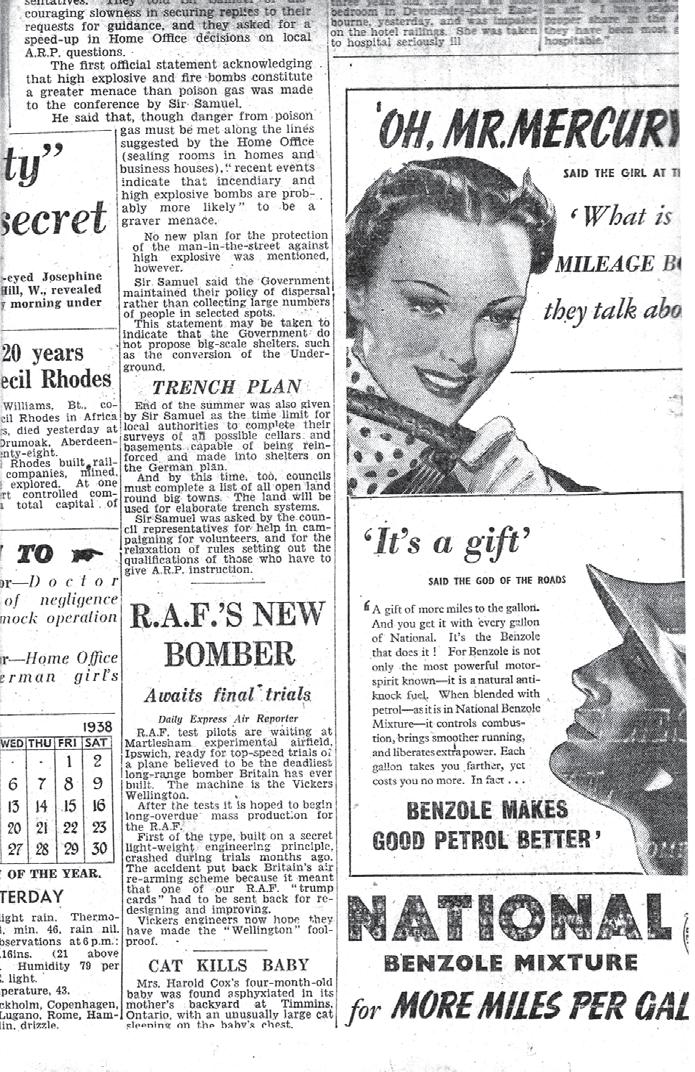
It continues: ‘R.A.F. test pilots are waiting at Martlesham experimental airfield, Ipswich, ready for top-speed trials of a plane believed to be the deadliest long-range bomber Britain has ever built. The machine is the Vickers Wellington.
‘After the tests it is hoped to begin long-overdue mass production for the R.A.F.
‘First of the type, built on a secret lightweight engineering principle, crashed during trials months ago. The accident put back Britain’s air re-arming scheme because it meant that one of our R.A.F. “trump cards” had to be sent back for re-designing and improving.
‘Vickers engineers now hope they have made the “Wellington” foolproof.’
I hope you will agree this brief article usefully puts the development of the Wellington into context.
Kindest regards, Richard Cartwright
forthcoming events
2021 Members’ Events
The Events List is subject to change, so please check the website: www. brooklandsmuseum.com. Email angelahume@brooklandsmembers.co.uk or telephone the Museum on: 01932 857381 for information. Test Hill, car rides and engine runs are subject to operational conditions.
Due to the Coronavirus situation, please check the website for the most up-to-date information on events. Thank you for all of your support.
April 22-25 Llanerchindda Weekend. Superb
driving roads in the scenic Brecon Beacons and Cambrian mountains provide the backdrop to this popular weekend centred on excellent accommodation at Llanerchindda. This weekend is currently fully booked, but contact Angela Hume to confirm.
June
3-7 Jersey International Motoring Festival. Ticketholders will have been contacted for this new event to replace the cancelled 2020 one. There are now some vacancies for this scenic tour.
September
4-5 Bournemouth Air Festival and SS Shieldhall. Rescheduled from
2020, everyone should have an email confirming their new booking or refund.
5 Shere Hill Climb. Booking opens on 1 March. Please let Angela Hume know if you want to be included in the Brooklands Paddock.
28 Shelsley Walsh. Visit the oldest continuous motorsport venue in the world and drive up this famous hillclimb. Excellent local food and accommodation included. Check website for more details.
30-3 Oct Llanerchindda Weekend. This ever-popular weekend in the heart of Wales takes in the Brecon Beacons and Cambrian mountains for some excellent driving roads. This is a second chance for those who missed the previous event.
Brooklands Members Talks: update
Due to restrictions on public gatherings, the Talks team has moved Members’ Talks presentations online through BM.tv and recorded many Zoom-based conversations with such notaries as Richard Noble, David Tremayne, and Maurice Hamilton. We also have Steve Clarke in conversation with Michael Kliebenstein about his book Superfinds. Coming up soon are Talks with artist Michael Turner about his new book The Michael Turner Collection, and another with Iain Murray of the Barnes Wallis Foundation called Highball - the other bouncing bomb
They can all be viewed on our BM.tv channel. You can find a link on the BM.tv section of the Museum website under the heading of ZoomCasts. In March, there’s a Zoom chat with Michael Napier, the author of Korean Air War: Sabres, MiGs and Meteors 1950-53 On 25 March, Harry Sherrard hosts a live Zoomcast on the history of the Goodwood Estate with a Q&A session after.

We are aware that this form of technology is not to everyone’s taste, but during these challenging times it does provide us with a platform to keep the Talks alive and Members entertained and informed. As we come out the current restrictions with the likelihood of smaller audiences in a venue, we will be able to stream to hundreds, not just 20 people in a room!
Steve Clarke and The Talks Team
MARCH - APRIL 2021 | BROOKLANDS BULLETIN 13 LETTERS
A MAN OF FIRSTS





The first man past 200mph and the first Briton to win a Grand Prix, Sir Henry Segrave was one of the leading motor sports stars of the 1920s.


125 years since his birth, this first part of his story looks at his early life and racing career.
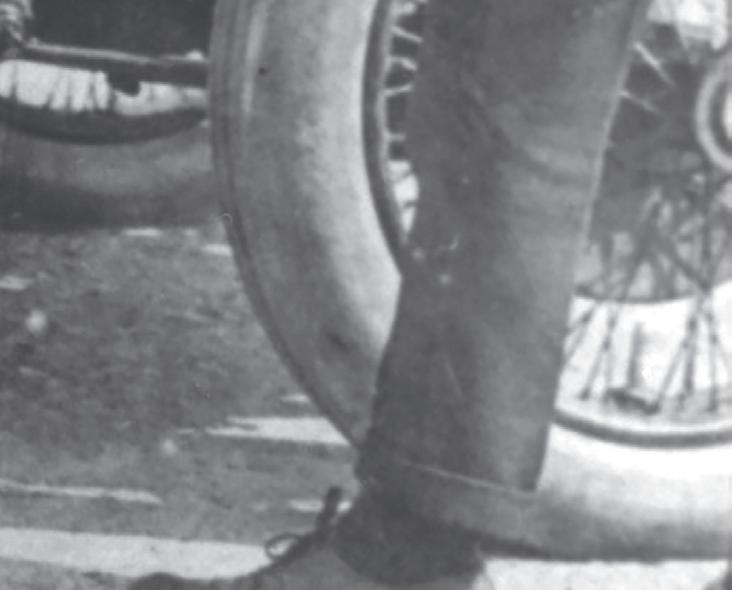
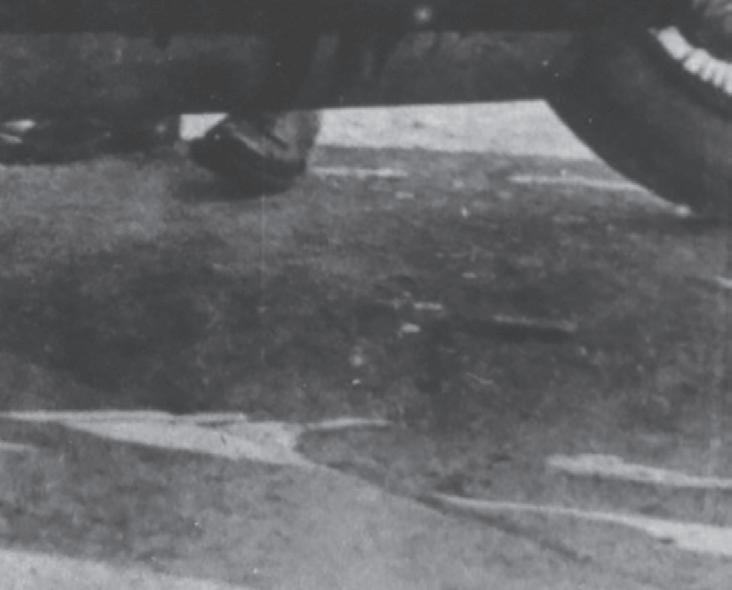






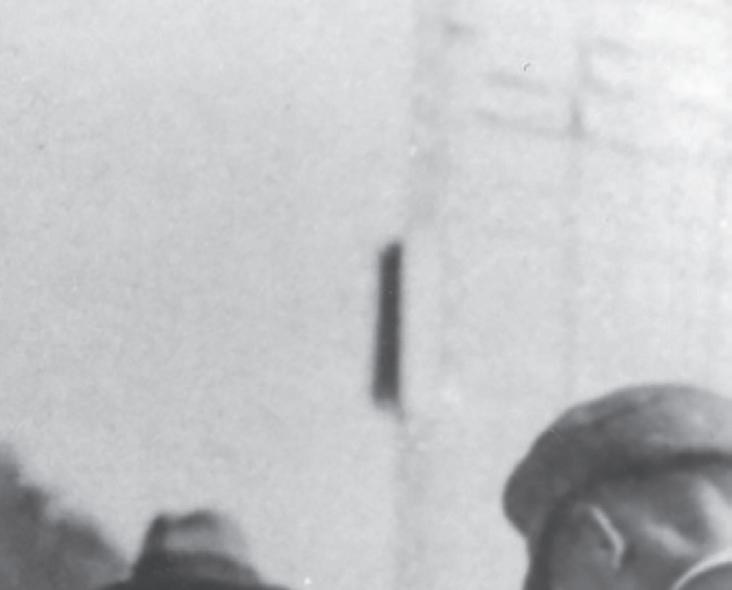



BROOKLANDS BULLETIN | MARCH - APRIL 2021
Words: Gareth Tarr Photos: Brooklands Museum Collection, Gareth Tarr
Segrave’s flying career ended when he was shot down. He then served in the War Office before going into the motor trade with Captain Alistair G Miller, who owned two 1914 Grand Prix Opels. Segrave is seen at the wheel of an Opel at the BARC meeting on 24 May, 1920.
Henry O’Neal de Hane Segrave was born in Baltimore, USA on 22 September, 1896. He was always called de Hane rather than Henry, a reference to a grandmother of Huguenot descent. A Segrave family predecessor was recorded in The Domesday Book and de Hane’s branch of the family had been in Ireland since 1320. His American mother, Mary Lucy, died when he was two and his father Charles returned to Ireland, remarried and settled in Portumna on Lough Derg. In 1910, young Segrave started at Eton College, his housemaster describing him as ‘a spirited fellow’.
Segrave started officer training at Sandhurst in August 1914 and by February 1915 was posted to the front line near Armentieres. He said of the British 60 pounders ‘I have never known such a terrible sound.’ At the battle of NeuveChapelle, a bullet passed through his left shoulder and he was hospitalised in London before returning home to Ireland. At this time, he bought his first car, a Singer, and then joined the Royal Flying Corps school at Upavon, receiving his wings and promotion to First Lieutenant on 1 January, 1916. In the spring, he started action in the Ypres area. Segrave shot down an Aviatik but was then shot down himself, suffering a complex fracture of his left ankle. It ended his active service and he started work in the War Office.
In December 1916, he was introduced to actress Doris Stocker and they married the following October. In 1918, the RAF was formed and the now Major HOD Segrave and his wife went to the United
States as part of an Aviation Mission. Crossing the Atlantic was hazardous and the vessel alongside the Segrave’s was torpedoed and sank. During his time in Washington, Segrave managed to get a private run in his Apperson car at Sheepshead race circuit, achieving an average lap of 82mph for which he received a certificate.
Back in Britain, de Hane became involved in a Knightsbridge motor business run by Captain Alistair G Miller, who owned two 1914 Grand Prix Opels. Segrave also met Louis Hervé Coatalen, manager of the Sunbeam team and asked for a drive. Coatalen was understandably dismissive, advising Segrave he needed to win races first. Unperturbed, de Hane made the same request throughout the 1920 season whenever he met Coatalen.
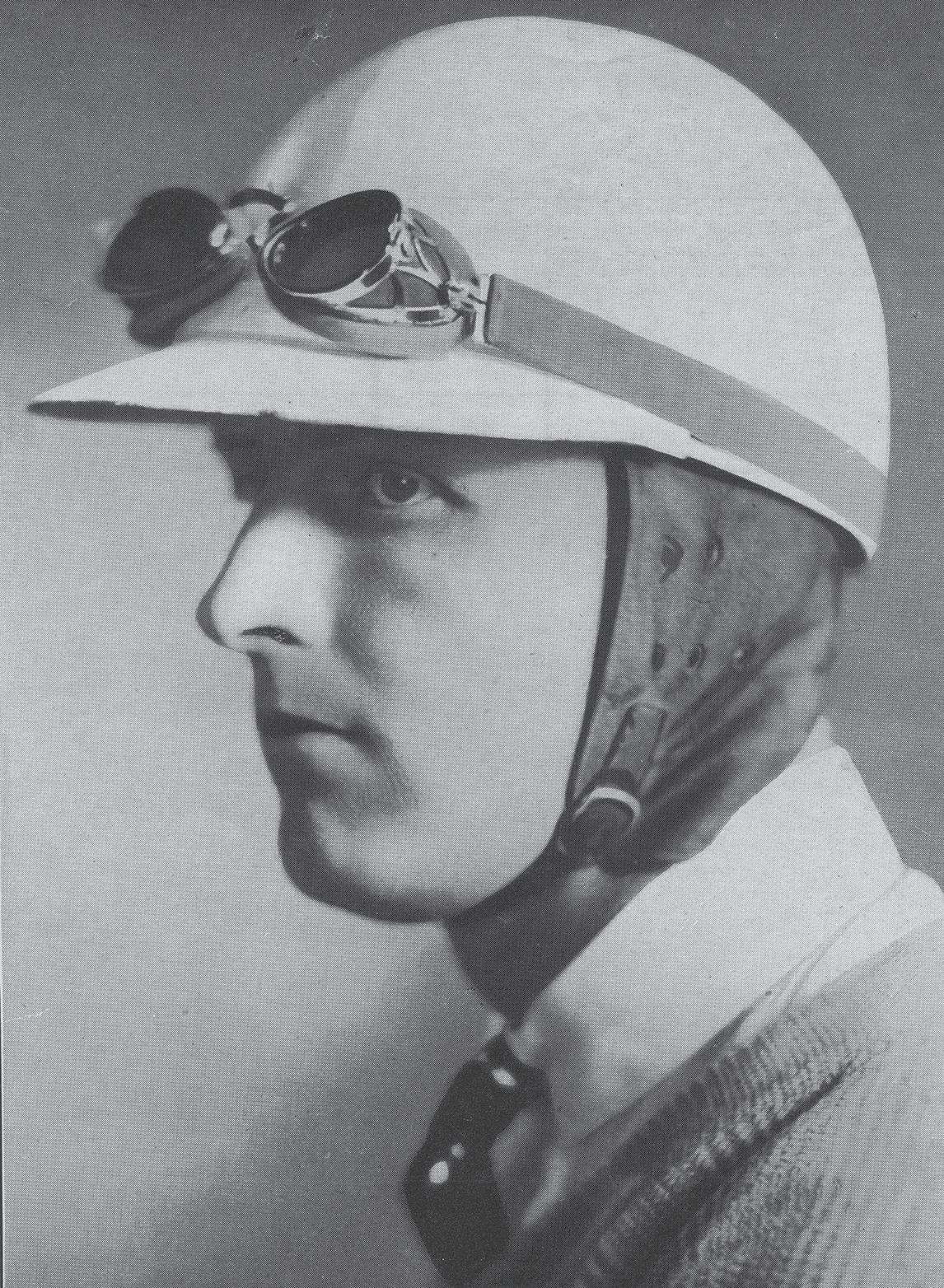
Racing start
In spring 1920, Segrave tested the Opel at Brooklands and made his debut at the Whitsun meeting on 24 May. He showed great skill in the first race controlling the car when a tyre burst. The Times reported: ‘Major Segrave supplied the big thrill of the afternoon.’ He won his second race, beating the likes of Tim Birkin in a DFP and Woolf Barnato in a Calthorpe, both also making their Brooklands debuts. Segrave also made the acquaintance of Sunbeam driver Kenelm Lee Guinness, known to his friends as ‘Bill’, who invented the KLG spark plug. He was back at Brooklands for the August Bank Holiday meeting with the Opel and won two races. With further successes that autumn, he ended his inaugural season with three firsts, two seconds and three thirds, all at Brooklands.
Sunbeam was by now partnered with Talbot and Darracq and the S-T-D team announced in October they would participate in the 1921 French Grand Prix, the only GP of the season. Finally, Segrave persuaded Coatalen to give him an entry. S-T-D would pay the entrance fee but Segrave had to pay his expenses and any damages. De Hane now joined KLG as competitions manager. One evening at a dinner, de Hane asked Guinness: ‘Do you think I’ll ever win the Grand Prix, Bill?’ Guinness replied: ‘Good God man, don’t be a fool. No British driver has even finished in the Grand Prix.”. After Bill had left, de Hane told his wife: ‘I shall win the Grand Prix one day, you see.’
The 1921 Brooklands season opener saw de Hane drive the new 3.0-litre straight-eight Sunbeam GP car for the first time, winning a scratch race. At the Whitsun meeting, driving a 5.0-litre car, he earned a third and fifth place. In June, he drove a 1914 TT Sunbeam to second place at the Holme Moss hill climb.
The French Grand Prix, the first held after the war, was run at Le Mans and S-T-D planned seven entries. The new Fiats weren’t ready and withdrew. Then S-T-D made a similar announcement, but Segrave and Guinness persuaded the directors to enter a four-car team, with René Thomas and André Boillot also entered. Duesenberg was a late entry from America. On Monday 25 June, 13 cars lined up and started in pairs at 30-second intervals, Segrave starting alongside Jimmy Murphy’s Duesenberg.
When the flag dropped, Murphy sped off and dominated the race. In contrast,

MARCH - APRIL 2021 | BROOKLANDS BULLETIN 15
Sir Henry Segrave was born Henry O’Neal de Hane Segrave in Baltimore, USA. He was better known to family and friends as de Hane.
The Junior Car Club 200 Mile race in 1921 was the first of three wins in this race for Segrave. He’s seen here with Masotti, on the right, in the pits.
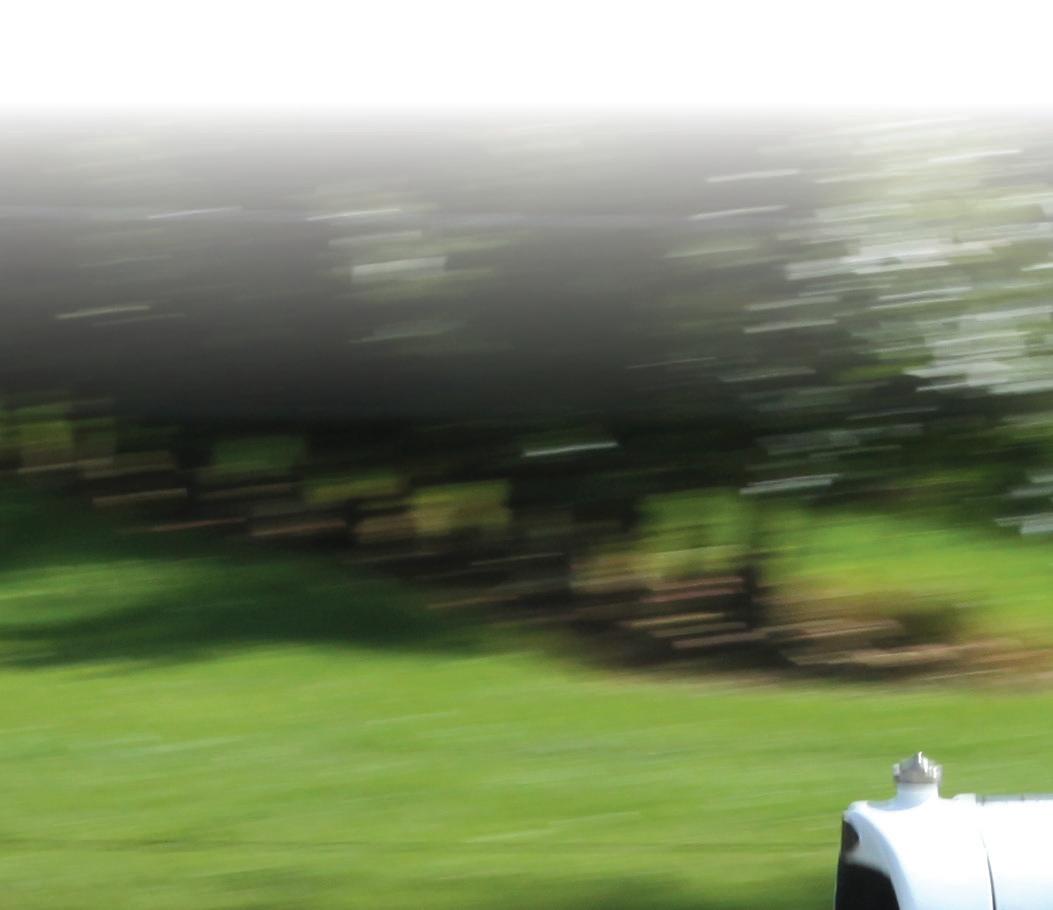


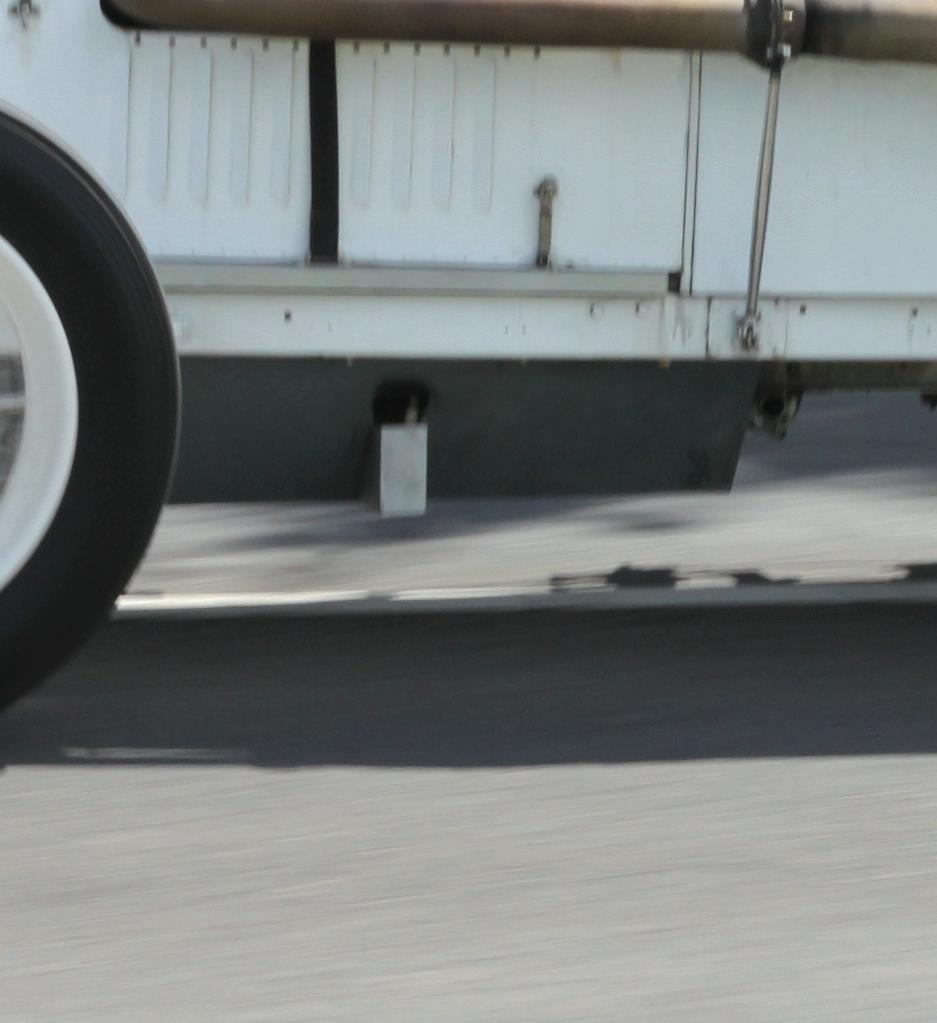



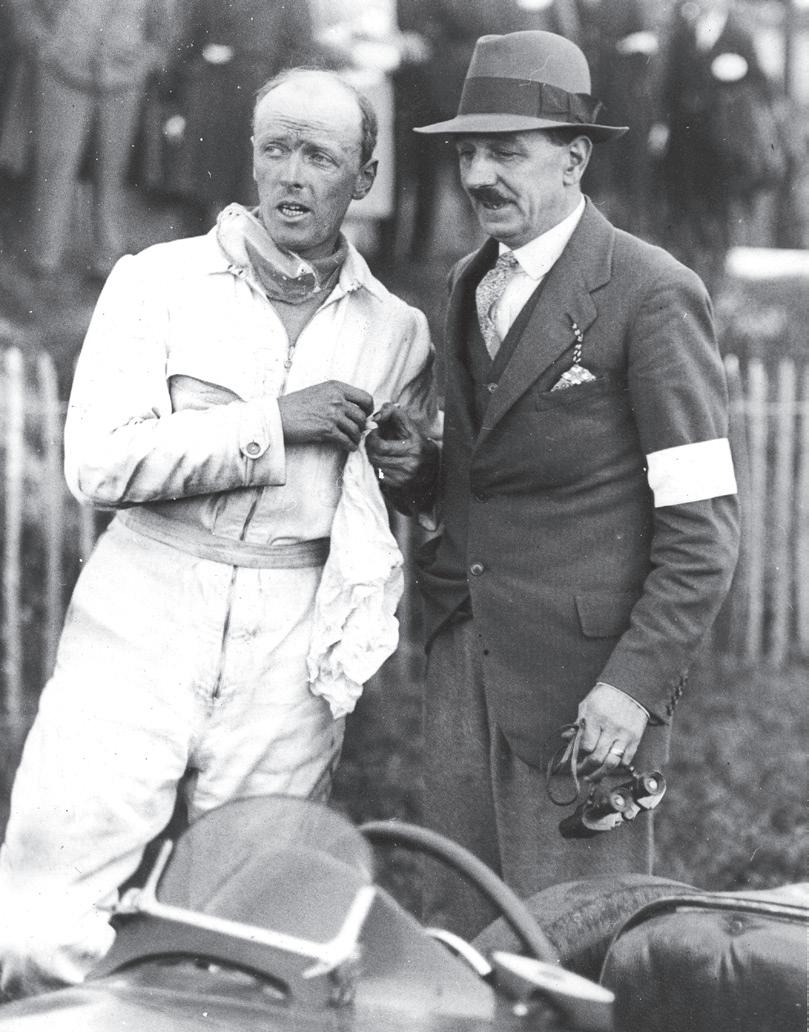
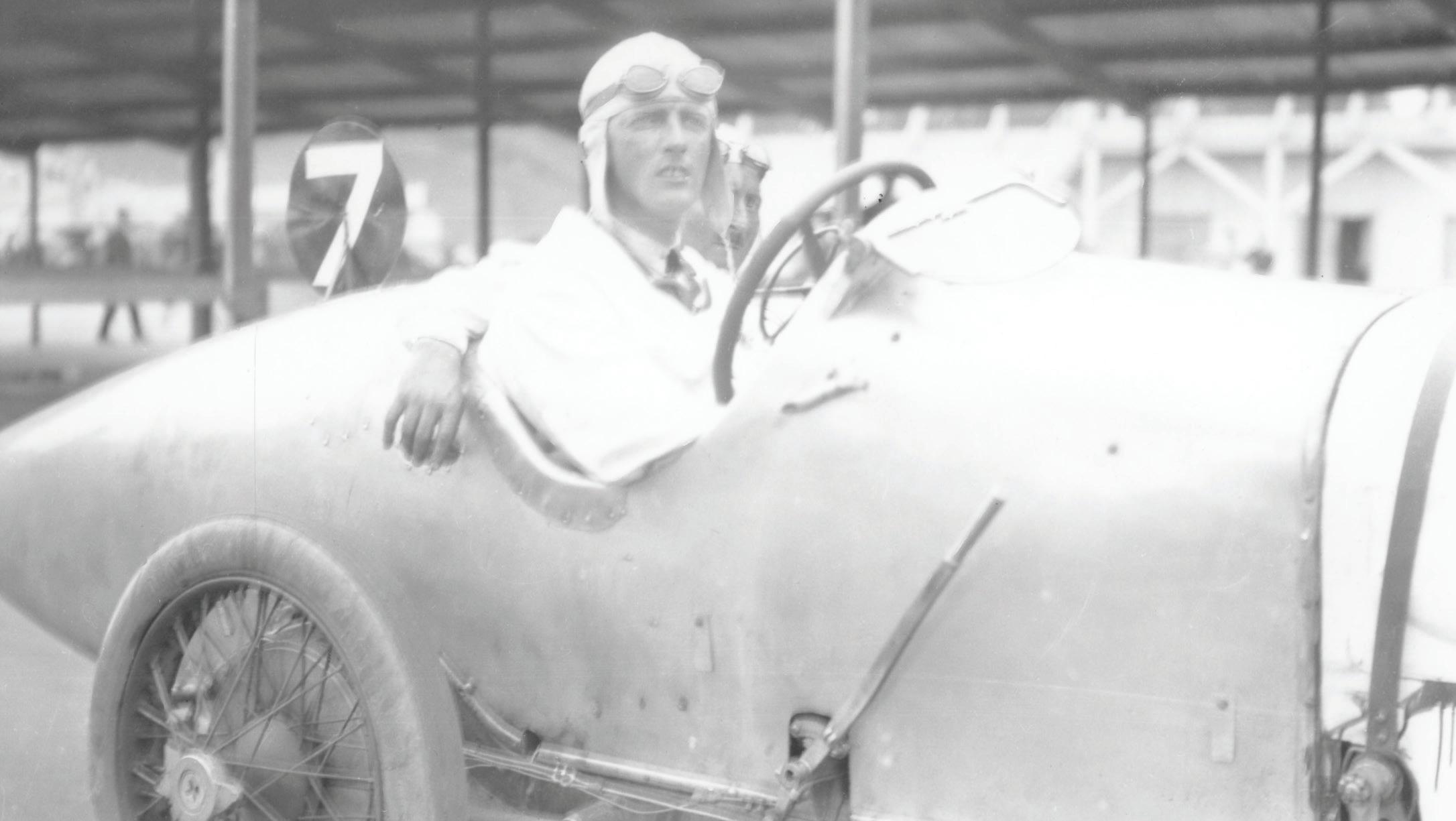
MARCH - APRIL 2021
A win in the 200-mile race for Light Cars under 1½-litres in a Talbot Special showed Segrave’s ability. Here, he chats to George Reynolds after his victory.
In the Talbot-Darracq, Segrave was part of the team that claimed a 1-2-3 finish at the Grand Prix des Voiturettes for 1½-litre cars at Le Mans in September, 1921.
the S-T-D cars suffered a series of maladies, particularly with tyres on the loose stones of the course. De Hane pressed on, thinking of Rene de Knyff’s famous remark ‘Always finish.’ He ended up ninth and last, delayed by a holed oil tank, his riding mechanic Jules Moriceau being knocked out by a loose stone, and 14 tyres changes. Autocar said of Segrave ‘He may have passed the labours of Hercules. He deserves better fortune next time.’
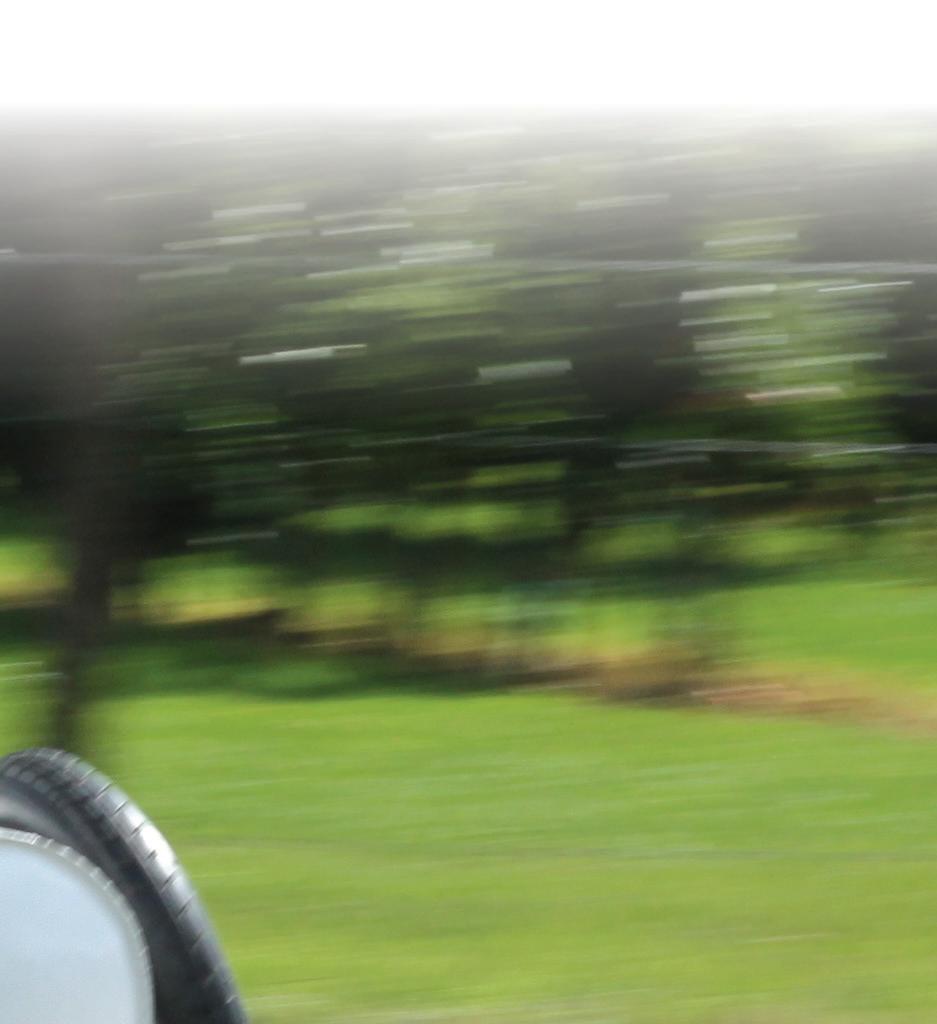
The S-T-D team returned to Le Mans in September for the Grand Prix des Voiturettes for 1½-litre cars. Entered as Talbot-Darracqs, the S-T-D cars achieved a 1-2-3 finish, de Hane coming third behind Thomas and Guinness. On 22 October, a crowd of more than 6000 witnessed the Talbot-Darracqs gain an easy 1-2-3 finish
in the Brooklands 200 Mile race, Segrave winning from Guinness and Campbell. This was the first of a hat-trick of 200 wins for de Hane, the others in 1925 and 1926.


Throughout the 1922 season, Segrave and Sunbeam regularly raced at Brooklands. A new 5.0-litre was driven by de Hane at the Easter meeting, lapping at 114.75mph and he netted a second and third place. HRH The Duke of York (later King George VI) was present at the 20 May meeting and Segrave scored a first and two second places. He finished third in the 200 Miles Race won by KLG. At the September Brooklands Speed Championships, he won two races driving 2.0-litre and 5.0-litre cars. Elsewhere, Segrave endured a frustrating 1922. The RAC Tourist Trophy was run for the first time since 1914 over

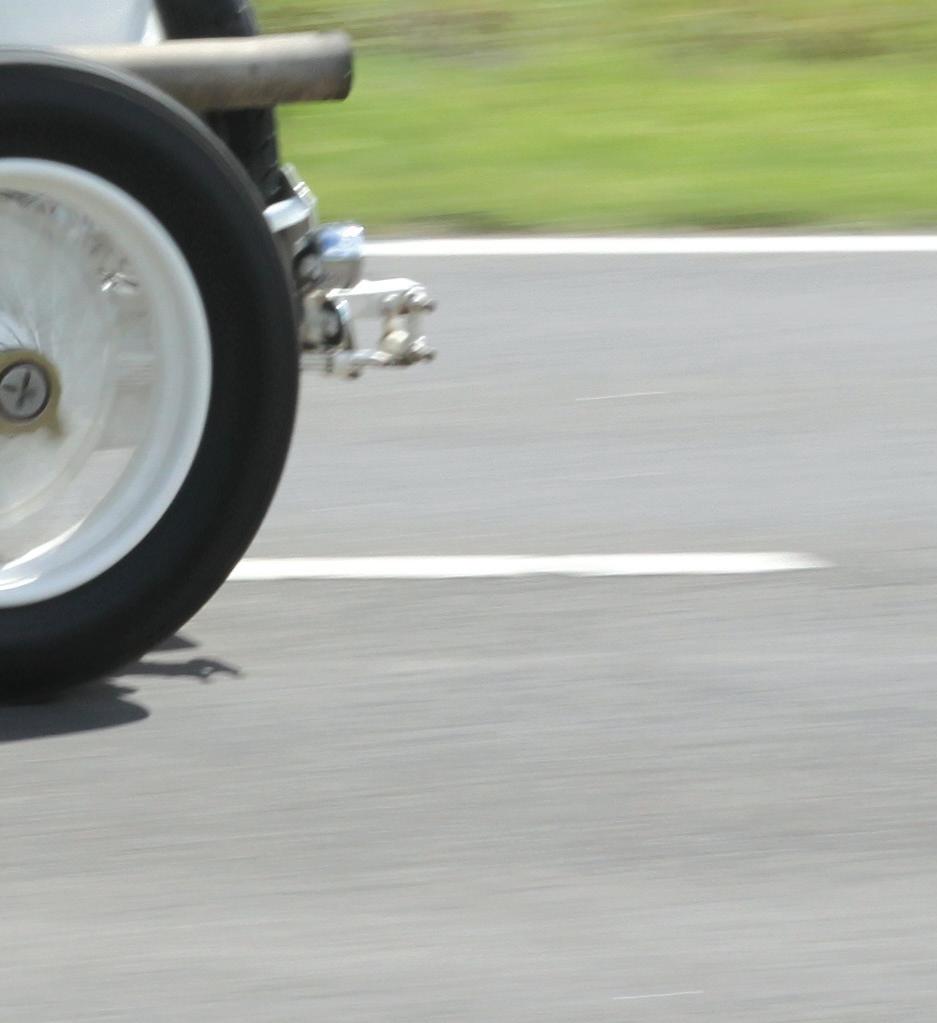
the Isle of Man TT course. S-T-D entered three of their 1921 Grand Prix cars. De Hane had his share of mishaps in practice, but as he often argued ‘That is what practice is for, we just mustn’t do it in the race.’ In the race, de Hane retired on lap five with a broken magneto, while Jean Chassagne took victory for Sunbeam.
The Grand Prix at Strasbourg in July was run to 2.0-litre regulations and the new Sunbeams were extensively tested at Brooklands before heading to France. The Fiats proved vastly superior in practice, forcing Sunbeam to lower their cars’ gearing, which was a disastrous decision. Guinness and Chassagne lasted only five laps, while Segrave ran third at one stage but on lap 29 he retired with valve trouble. Felice Nazzaro won for Fiat, his victory


| BROOKLANDS BULLETIN
One of the Opels owned by AG Miller and driven by Segrave being used on the Schloss Dyck Classic Days event in 2011. The car’s size can be judged from this photo.
tempered by news that his nephew Biaggio had suffered a fatal accident.
In September, Segrave was back at Le Mans driving a Talbot-Darracq in the voiturettes race, finishing third behind team mates Guinness and Albert Divo. The S-T-D team finished the season with a two-race adventure to Spain and Sicily, travelling to the Mediterranean in Guinness’ motor
yacht Ocean Rover, a converted trawler. At the voiturette Penya Rhin GP on the Vilafranca del Penedes circuit, de Hane’s car broke a valve and caught fire three times but he still managed fourth place. In Sicily, Segrave and Chassagne drove 4.9-litre Sunbeams in the Coppa Florio, de Hane suffering several dramas but finishing second behind the Peugeot of Boillot.
A successful year
Segrave only raced twice in 1923, but both were successful and included the crowning achievement of his racing career. All efforts of the S-T-D team went into winning the 1923 Grand Prix to be held at Tours on 2 July. Sunbeam recruited Fiat engineer Vincenzo Bertarione to design a new six cylinder 2.0-litre car, similar to the 1922 GP winner, and they were driven by Guinness, Segrave and Divo. Entries included RollandPilain, a V12 Delage, the Bugatti Type 32 ‘Tanks’ and strange looking Voisins. In practice, the Sunbeam was fastest until the Fiats finally turned up four days late. The now eight-cylinder Italian cars emitted a strange whining note from a supercharger and were very fast.
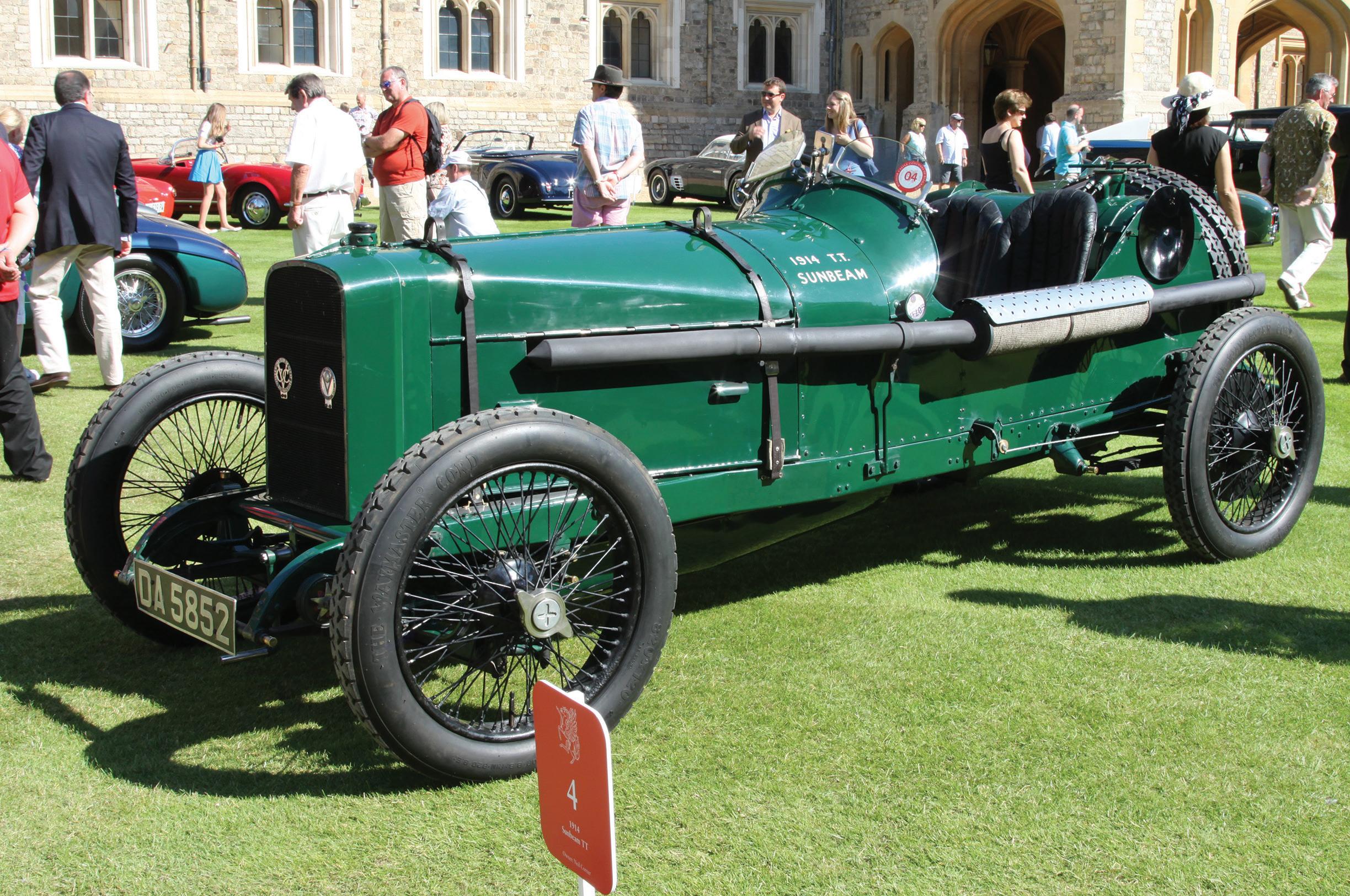
At the start, Bordino led for Fiat but came to a halt on the eighth lap, small stones damaging the supercharger. Segrave was in sixth with a slipping clutch and when Guinness pitted the two remaining Fiats of Giaccone and Salamano went to the front. Then Giaccone’s car failed and Salamano took the lead. A large crack from within the cockpit of Segrave’s Sunbeam suddenly solved the clutch troubles, so he and codriver Dutoit set out after the leaders. The remaining Fiat now came to a halt. The team had tested on the smooth Monza circuit but the rough conditions at Tours meant the

BROOKLANDS BULLETIN | MARCH - APRIL 2021 18
The 2012 Sunbeam Grand Prix car enjoys an outing on Test Hill at Brooklands in 2012. Segrave went on to become the first British driver to win a GP at the 1923 French Grand Prix.
As Segrave’s career grew, he was given the 1914 TT Sunbeam to drive at the Holme Moss hillclimb in June 1921. That car is seen here at the 2012 Concours of Elegance in Windsor.
Torinese machines bit the dust. Passing the stricken Italian with two laps to go, Dutoit shouted in his driver’s ear ‘Nous sommes en tete.’ Divo and Guinness finished second and fourth, split by Fredrich’s Bugatti. After 6 hours 35 minutes 19.6 seconds, Segrave and Dutoit crossed the line as the first British driver and first British car to win a Grand Prix. Two days later, de Hane drove the car home to London and later attended a special luncheon at the RAC Club. His other appearance of the season was at the Boulogne Week, winning the Grand Prix for voiturettes.
For 1924, Sunbeam fitted superchargers, increasing power by a third. Segrave’s first competitive event was the French Grand Prix on 3 August at Lyon with team-mates Guinness and Dario Resta. Competition included the debut of the legendary Bugatti Type 35, the V12 Delage and P2 Alfa Romeo. At the start, de Hane took the lead but on the third lap hit trouble, believed to be plugs, and both Resta and Guinness suffered similar issues. Segrave eventually finished fifth, behind Campari’s winning Alfa. The following day, Segrave’s Sunbeam misfire was traced to the magneto, changed before the race at the insistence of Bosch.
The San Sebastian Grand Prix was run on the Lasarte circuit, but Alfa Romeo and Fiat were not present. Race day was rainy and the circuit slippery. Early on, Segrave was in seventh, unable to hold anything above third gear, but then he started to move through the field. On the 11th lap, Guinness
lost control on the rutted road and in the resulting accident he suffered injuries which ended his career and sadly his mechanic was killed. Eventually, de Hane took a lead he was not to lose and a Bilbao newspaper described him as ‘El Maestro Completo.’
At the end of 1924, Segrave left KLG to join Sunbeam. As works driver, he was given a full schedule for 1925, often in France. He won the Grand Prix de Provence on the new Circuit de Miramas and was third at Montlhéry. In June, he competed in his only Le Mans 24 Hours, sharing a Sunbeam 3.0-litre with George Duller. They led at the end of the first hour but retired shortly after 9pm. The Grand Prix was in July at Montlhéry and for the first time there would be no riding mechanics. De Hane retired in a race remembered for Alberto Ascari’s fatal accident.
The first British Grand Prix was held at Brooklands over 110 laps on 7 August, 1926. The new Talbot 1½-litre straighteights were mounted in a distinctive low chassis which proved troublesome but quick. Segrave took the lead on the seventh lap, but a series of issues saw him retire. Three weeks later, he drove the 4.0-litre V12 Sunbeam in the Boulogne Speed Trial, one timed lap of a narrow, rutted course, and he won with an average speed of 140.6mph. Segrave himself admitted this was on the edge of folly and his wife was terrified, though he said: ‘Don’t worry, “D”, I shall never be killed in a car.’
In spring 1927, Segrave announced his intention to retire from motor racing,


declaring: ‘I’ve had a good innings.’ He only had one more race, the Essex MC Six Hours Race at Brooklands on 7 May, from which he was disqualified in dubious circumstances. It was an unsatisfactory end to an illustrious career, but his interest now lay elsewhere.
Read Part 2 of Sir Henry Segrave’s story in the next issue of the Bulletin.
MARCH - APRIL 2021 | BROOKLANDS BULLETIN 19
Segrave joined the Sunbeam team as a works driver for the 1925 season and had a full schedule of events. Many races were in France and Segrave won the Grand Prix de Provence.
In 1927, Segrave announced that he was retiring from motor racing, but it was far from the end of his career in high-speed cars.
IN THE BEGINNING
As Brooklands Museum celebrates 30 years, the first Director Morag Barton reflects on her involvement in the early days.


Words: Morag Barton Photos: Brooklands Museum Collection

When I moved to Weybridge in 1968, I used to chat to my next-door neighbour, Mrs Beatrice Hooper, over tea and seed cake, about her life at Brooklands. She and her late husband had worked all their lives for the Locke Kings and had lived in both the Lodge to Brooklands House and Caenshill Cottage in Brooklands Road, and many of their friends were fellow Locke King estate workers. She used to show me snaps from her photograph album and tell stories about families like the Boxalls.
John Boxall had been a gamekeeper for Hugh and Ethel Locke King and became Estate Foreman when the building of the track started in 1906. I interviewed his son, Frank, who had clear memories of the opening procession, for which he
took the afternoon off school, and of the early days of racing. Mrs Hooper also had photographs of house guests of Dame Ethel such as Lorna Harvey, daughter of Stewart Gore-Browne, Dame Ethel’s nephew. She lived in her father’s mansion in northern Rhodesia, now Zimbabwe. She used to visit Caenshill with Henry, their butler. I was fascinated by Mrs Hooper’s stories and began to feel I knew all these Brooklands people. Dame Ethel had given Mrs Hooper some of her personal belongings as keepsakes, including an ostrich feather fan and horse brasses. These were passed on to me along with many photographs which are now in the Brooklands Museum Collection.
Little did I know in those early days that I was about to spend the best part of the next 33 years of my life helping to create a Museum at Brooklands. I had obviously caught the Brooklands’ bug, however, because in the early 1970s, when I was a Curator in the Weybridge Museum, much of my time was spent researching further information on Brooklands and collecting memorabilia. In 1977, we mounted a very

BROOKLANDS BULLETIN | MARCH - APRIL 2021 20
Brooklands Museum’s first Director Morag Barton, here with Bob Gerrard, left, and John Pulford as they stand next to SF Edge’s Napier.
Morag’s interest in Brooklands started with her neighbour, Mrs Beatrice Hooper, who worked for the Locke King family and told Morag stories about life on the estate.
successful exhibition in Weybridge called ‘Wings Over Brooklands’ telling the history of the newly-formed British Aerospace Company at Weybridge.
After the exhibition, Lord Beswick, Chairman of British Aerospace, along
with the local authority, offered to help find a permanent home for a Brooklands Museum. For a time, we considered the 1932 Brooklands Aero Clubhouse, which with its adjacent buildings was a possibility, and feasibility studies were produced.
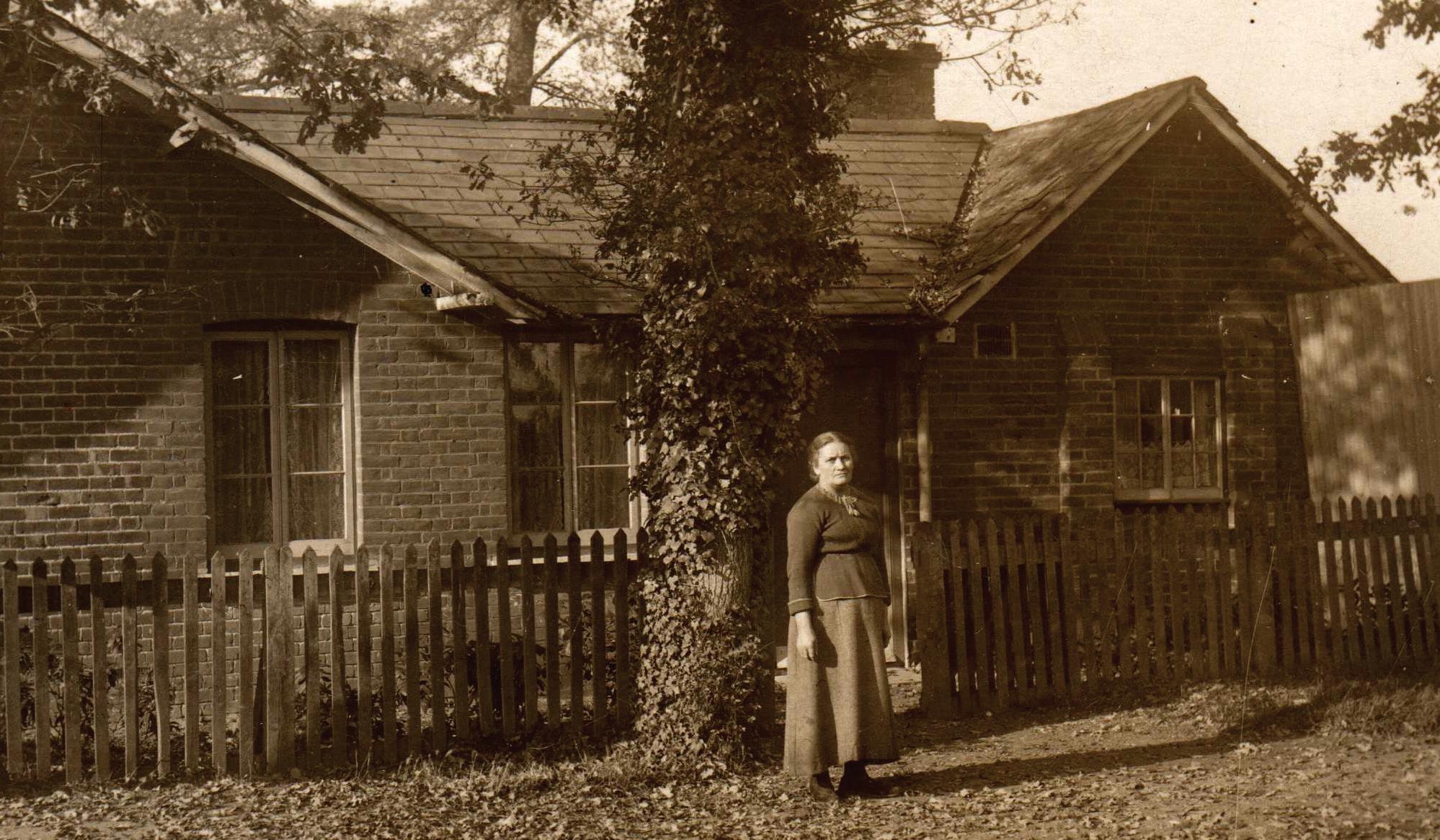
Because of the development potential of the land, however, it proved unlikely this would ever be a long-term solution, but in 1983 British Aerospace sold the northern end of its Brooklands site to Gallaher for its head office. They, in turn, with the encouragement of the Council agreed to lease 30 acres back for the purposes of setting up a Brooklands Museum and we felt we were on our way at last.
Initially, I worked with an enthusiastic team of volunteers mainly to advise Gallaher on the refurbishment of the Clubhouse and help clear the site of years of neglect and make it safe for public access. Almost our first Museum exhibit, and certainly the first major exhibit, was the Wellington aircraft ‘R’ for Robert, and it had to be retrieved from Loch Ness in 1985 before it could be brought to Brooklands for restoration by a stalwart team of volunteers.

When the Trust was formed in 1987 under the Chairmanship of Sir Peter Masefield, I was appointed Director of the Museum, ably supported by John Pulford, Julian Temple and Ann Watson, who have supported the Museum enormously. When British Aerospace’s closure took effect in 1987, it was a major blow to everyone, but the Museum benefitted by receiving a new influx of volunteers from the factory and even a new member of staff, Celia Rhodes, who had worked alongside Norman Barfield at British Aerospace. The Museum also acquired important new archives and exhibits from their factory.
His Royal Highness Prince Michael of Kent soon became a most enthusiastic and hard-working Patron of Brooklands Museum and he was to witness a great deal of achievement over the next decade, formally opening at least one building or exhibition every year. Sir George Edwards, OM, former Chairman of the British Aircraft Corporation, also became a Patron and great supporter over the years.
From 1987, the Trust replaced the Members’ Bridge and a section of the Members’ Banking, and started fitting out the Clubhouse for Museum visitors and corporate use. Buildings in the Paddock and Motoring Village were then restored and ultimately, with the help of a grant from the National Lottery Fund, we were able to restore all the Motoring Sheds and fit them out with displays. Although floods damaged most of them, it didn’t take long before they were brought back to their original glory.
Against the backdrop of building restoration, the Wellington bomber was being painstakingly restored and the Museum collection grew rapidly to 30
MARCH - APRIL 2021 | BROOKLANDS BULLETIN 21
The Boxall family worked on the Locke King estate and son Frank remembered taking the afternoon off school to watch the opening procession of the Brooklands Motor Course in 1907.
Mrs Boxall at ‘Boxall’s Lodge’ on Byfleet Road, Weybridge. John Boxall had been a gamekeeper and became Estate Foreman in 1906 to oversee the building of the track.
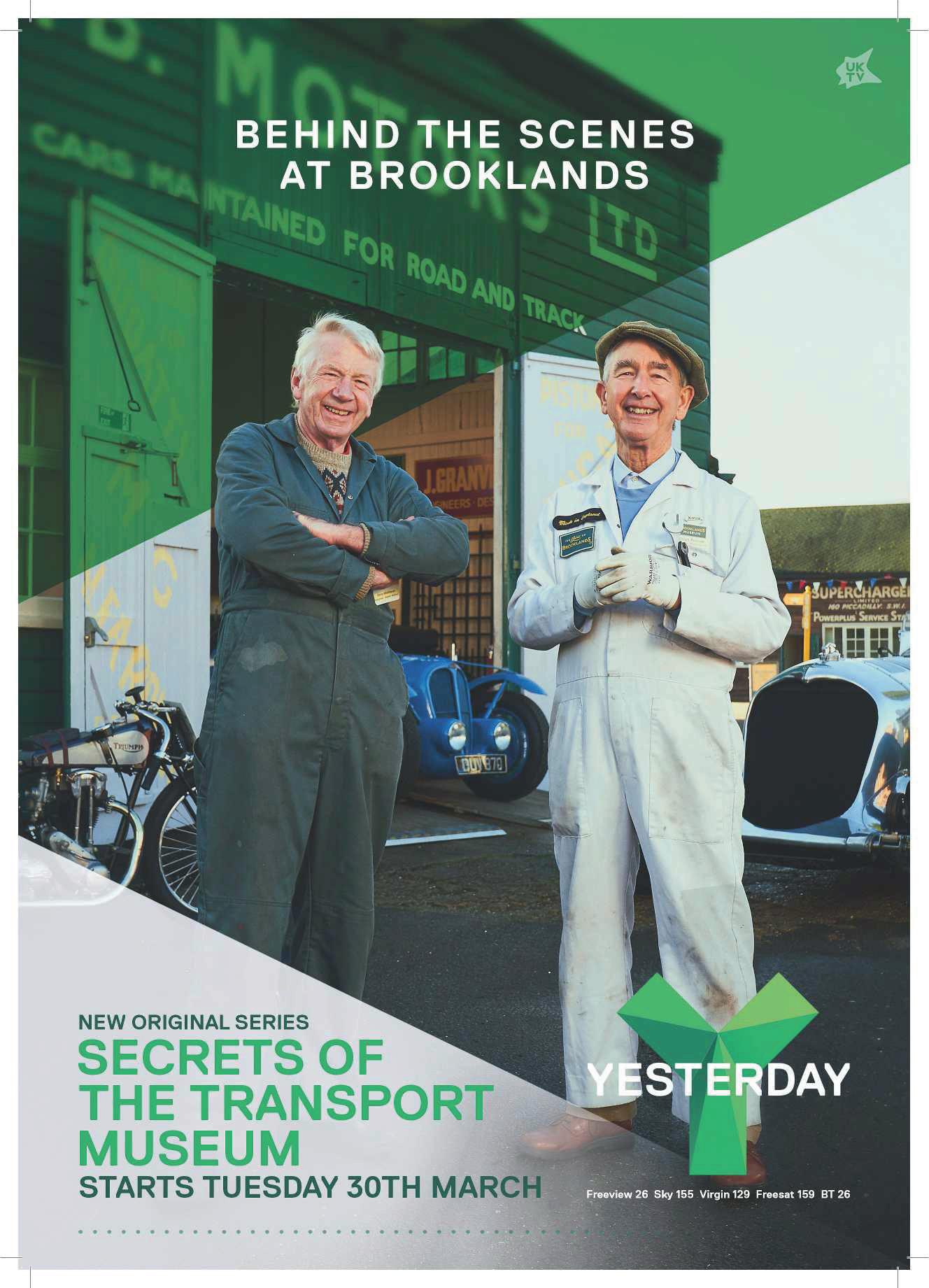
aircraft, 30 cars, including the famous Napier-Railton, motorbikes, bicycles and memorabilia. Plans for the refurbishment of the Wellington Hangar were submitted to the Heritage Lottery Fund and passed the first phase of selection, which helped start work on this major project.
Since the Trust began, it has formed a substantial library and photographic and research archives, and produced authoritative videos and publications on both the motoring and aviation histories of Brooklands. We couldn’t have developed the Museum as we have without the


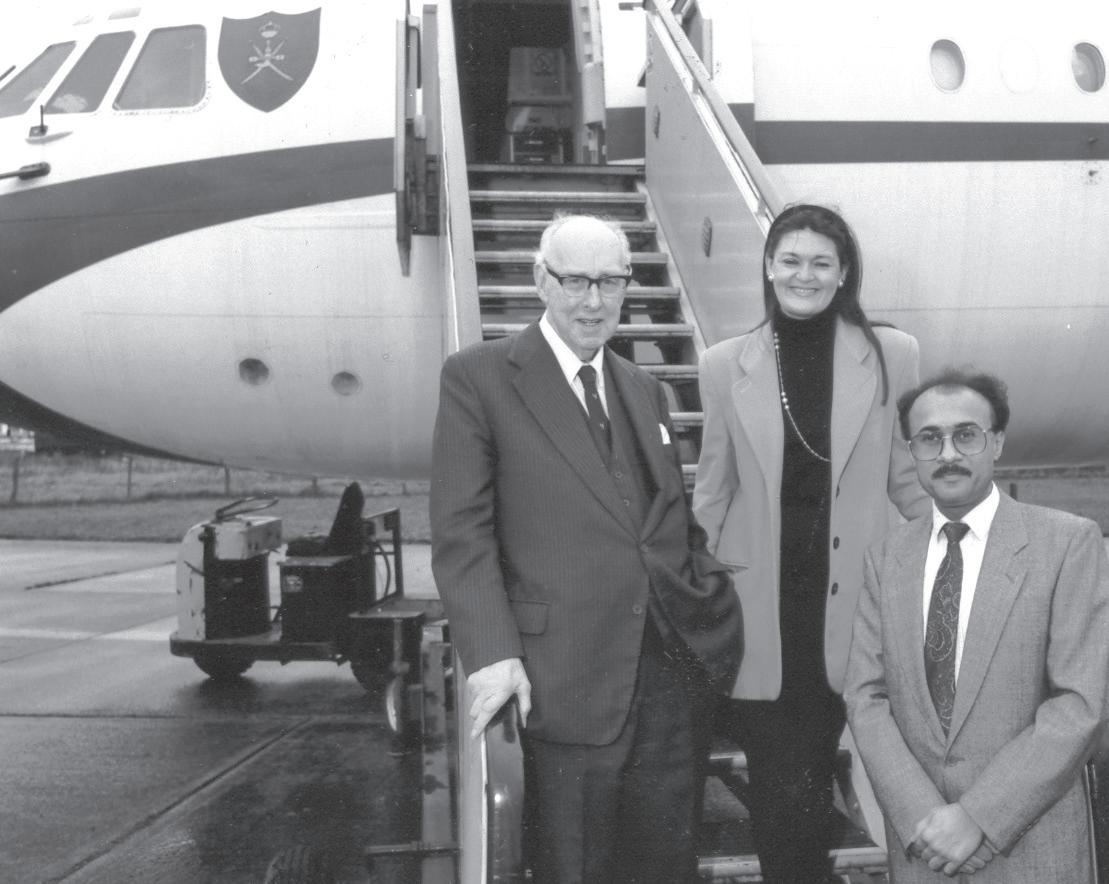

support of many of our volunteers, who numbered 350 in 1992 and are now more than 800-strong. Thirty years ago, we also had 5000 Friends of Brooklands Museum, Club Members and a thriving Club facility in the Members’ Bar. A major conferencing and catering business was run by Aramark then, which produced much-needed revenue, along with the Museum shop.
The recreation of a 1920s and ’30s ambience at Brooklands Museum has attracted not only the patronage of car clubs, but the use of Brooklands as a media venue for films, television documentaries and promotional photography. Poirot,
MARCH - APRIL 2021 | BROOKLANDS BULLETIN 23
Following the success of the earlier Wings Over Brooklands exhibition, the first major exhibit on the site was the Wellington ‘R’ for Robert that was salvaged from Loch Ness in 1985.
Sir Peter Masefield, left, was Chairman of the Brooklands Trust that appointed Morag as Director in 1987. They are with the Omani Ambassador as the Sultan of Oman’s Vickers VC10 is delivered.
Morag is seen here inside the Sultan of Oman’s VC10 to mark the arrival of the aircraft as a Brooklands exhibit, which remains a very popular attraction at the Museum.

Morag’s main moments
1977 Wings over Brooklands exhibition.
1979 1932 Brooklands Aero Clubhouse listed.
1984 Restoration of Clubhouse.
1985 Members’ Banking reinstated; Loch Ness Wellington raised; 99-year lease signed.
1986 British Aerospace Weybridge factory closure announced.
1987 Brooklands Museum Trust formed with Sir Peter Masefield as Chairman. HRH The Sultan of Oman’s personal VC10 flies in; October hurricane.
1988 Sir Thomas Sopwith Centenary Celebration Lunch and flypast; reopening of restored Test Hill; Avro Shed reinstated; Members’ Bridge reinstated; closure of British Aerospace factory.
1989 HRH Prince Michael of Kent becomes Royal Patron of Museum; Brooklands designated a Conservation Area.
1990 Arrival of Vickers Viscount; first school visit; official opening of the Blue Bird Room and Barbara Cartland Room.
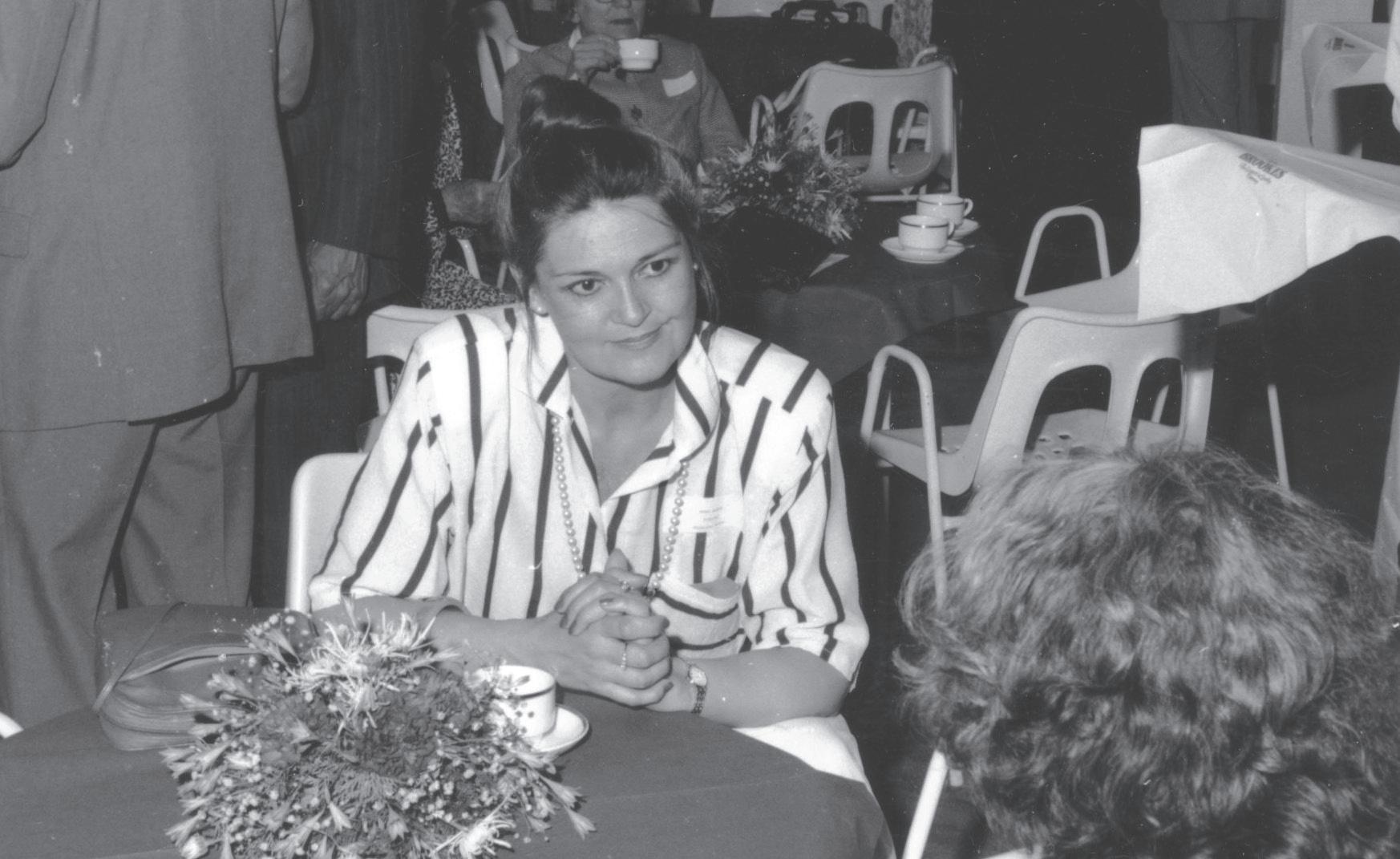
1991 Official opening by HRH Prince Michael of Kent of the Ron Gerard Visitor Centre, shop, Clerk of the Course’s office, and Members’ Bar; Vickers Viking delivered; Museum fully opens to the public.
1992 Weighbridge area and Clerk of Course office completed; Brooklands and Le Mans Museums twinning ceremony held in France; MG Owners Club ‘Biggest MG Picnic in the World’ fundraiser.
1993 Vehicle displays moved to Campbell Shed; Sunbeam Tearoom, Shell Pagoda and Press Hut open; Birkin plaque returned to Brooklands by BRDC and unveiled by Innes Ireland.
1994 BAC One-Eleven flies in; restoration of ERA Shed; Paddock Car Bays finished; Peter McMillan’s Vickers Vimy replica flies into Brooklands before its flight to Australia.
1995 Major application submitted to the Heritage Lottery Fund; first Brooklands Aviation Festival; opening of Speed Record Exhibition
1996 Coachmakers Art Gallery and Garden of Memories open.
1997 Purchase of Hawker Hurricane from Russia.
1998 Napier-Railton purchased; Motoring Village restoration begins.
1999 Vimy replica flies to South Africa.
2000 Raleigh Cycling Exhibition opens; Great November Flood; Grand Prix Exhibition completed.
The House of Eliott, Heroes and Villains, Jonathan Creek and even ‘Mr Blobby’ have all been filmed here, while recently The Crown and Secrets of the Transport Museum have added to Brooklands’ filming credits.
Brooklands has also built up a reputation as a venue for motoring and aviation events, and there is now an event here almost every weekend (Covid restrictions permitting). Last, but certainly not least, we now attract thousands of school children on educational visits every year and one of the high priorities was to build a new Education Centre to promote Brooklands Museum as a centre for engineering excellence.
The time came for me to hand over the responsibility of the Museum and its future development to a new Director, Michael Phillips. However, I didn’t move from the area and have always offered my support while also enjoying some leisure and travel.
What will I remember most about Brooklands Museum? Most definitely the people. I was privileged to work for many years with a small group of talented and dedicated staff, and loyal and enthusiastic Volunteers. I have fond memories of the team and of the Chairmen, Trustees, racing drivers, pilots, engineers, enthusiasts, educationalists, journalists, and unique personalities who made rebuilding Brooklands such a pleasure.
The original version of this story first appeared in the Spirit.
MARCH - APRIL 2021 | BROOKLANDS BULLETIN 25
Morag Barton was a tireless campaigner and fundraiser for Brooklands as its Director and she remains passionate about the Museum through to the present day.
CRACKING THE TON

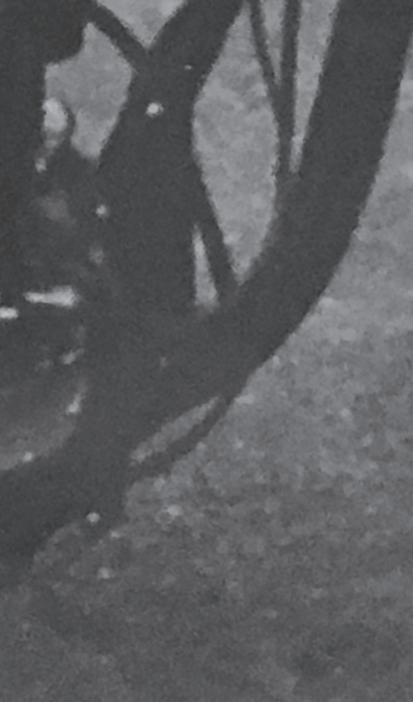
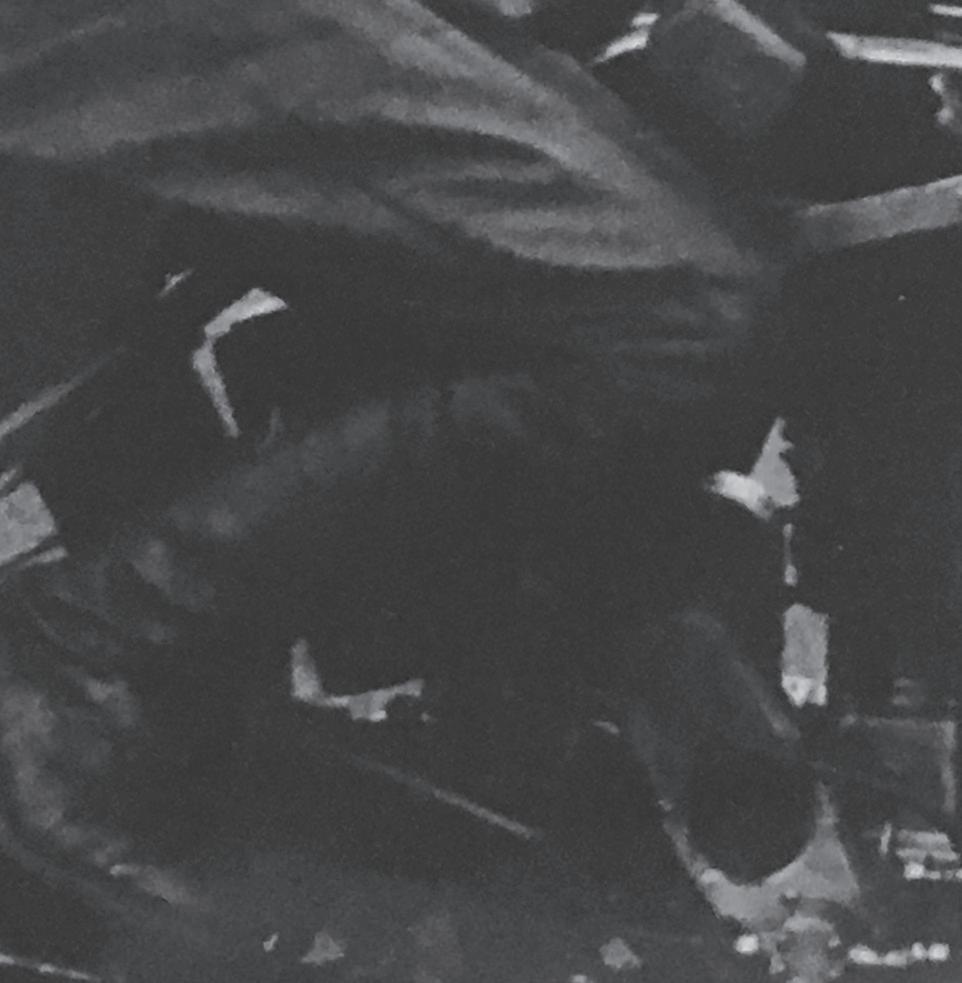


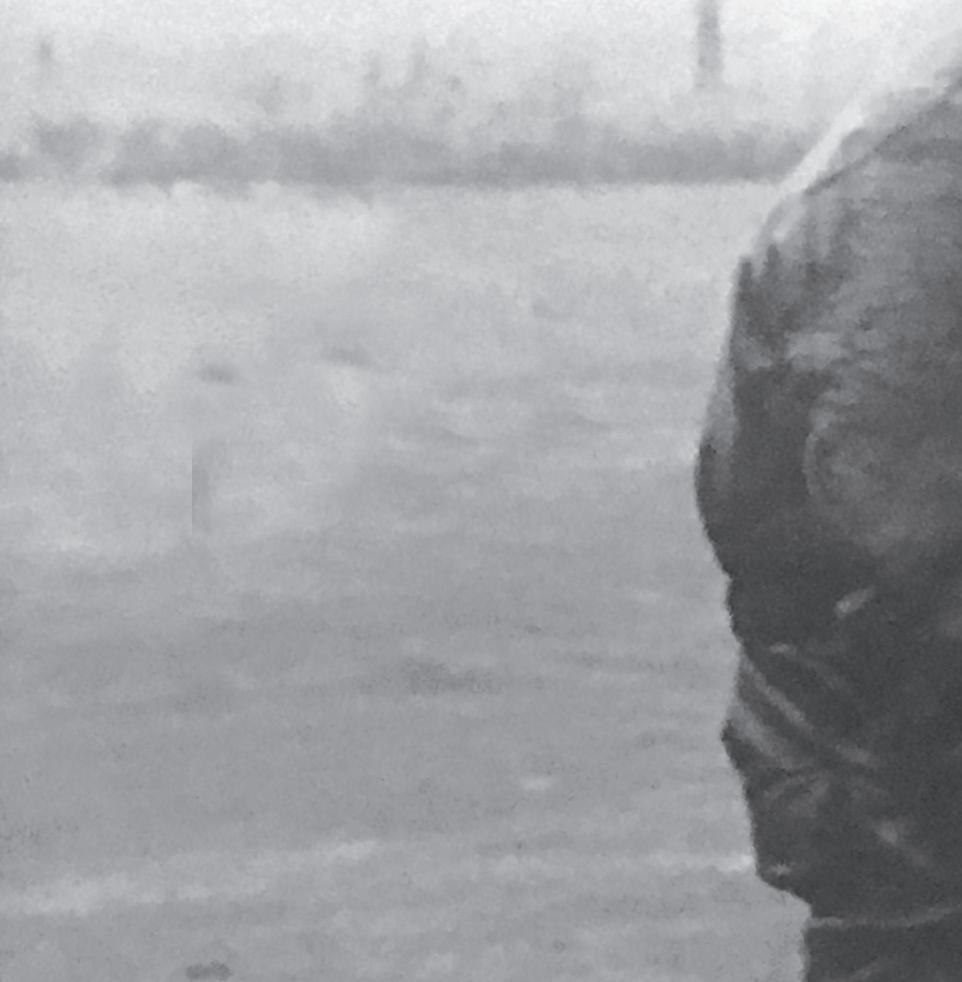



BROOKLANDS BULLETIN | MARCH - APRIL 2021 26
A young Gordon Cobbold on a Sunbeam motorcycle. Close examination of the image suggests the brake pedal operates both rear and front brakes.
Martin Gegg takes a look at the life

of Brooklands motorcycle
racer and Gold Star holder Gordon Cobbold.


Gordon Chevallier Cobbold was born in London in 1903. Records show he was at school in Folkestone before moving to Westminster School. Gordon said that he was a bit of a dunce at school, although he did find success on the shooting range. He won the public schools cadet trophy in style, gaining a bullseye in the last round to clinch the title with team-mate DR Knight.
Fast forward to 1923 and Cobbold was competing in his first race at Brooklands. This was reputedly a grudge match to prove the worth of his newly acquired Sunbeam Longstroke motorcycle. Cobbold, who features in a mural in the Sunbeam Café and a collection of trophies at the Museum, won the match. The victory was attributed to a WEX Carburettor developed by Harry Weslake, who later became his race tuner. Weslake had developed expertise in the science of gas-flow. John Marston Ltd that built Sunbeam motorcycles was content to send the best test bench engines for competition use and use the ordinary engines for road bikes, while Westlake helped them and others, including Bentley, Brough Superior and Jaguar, understand how all engines could be developed to deliver their maximum performance.
Gordon had to buy his first competition bike, but Marstons soon supplied Sunbeam engines which would be developed by Weslake and Cobbold, bringing one Gold Star for lapping at 100mph and 16 world records set at Brooklands between 1927 and 1929. Full credit goes to Weslake for tuning, but a closer look at the picture in the Sunbeam Café reveals other clues to an attention to detail and understanding that to win at anything you must exploit every possible component. One observant member of the Marston Sunbeam Club has pointed out this picture shows the brake pedal operates both the back and front brakes, something that is only now finding its way onto modern bikes.
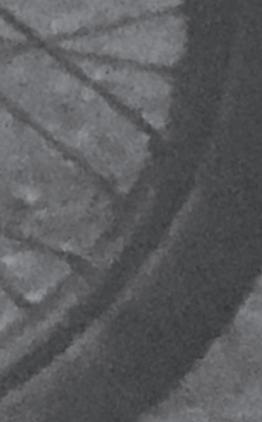

Other items were removed to save weight, and modifications
expertise could have
race and another in this article
held in freezing temperatures the




































Other items were removed to save weight, and modifications were made to the lubrication system. Although there is no evidence, it is also suggested that Weslake’s gas-flow expertise could have exploited the Brookland’s Can (Silencer) to its maximum performance while remaining within the strict design rules. Another photograph taken on 20 March, 1926 after Cobbold won the 350-1000cc handicap race and another in this article show the front brake removed completely. This was a race held in freezing temperatures at which Dougal Marchant badly gashed his chin caused by the notoriously lumpy track, while another rider escaped with bruises when the bumpy Railway Straight caused his handlebars to become detached at 90mph.
During Gordon’s Belgium Grand Prix race of the same year, he also suffered a dramatic non-finish when a leaking petrol tank caused a twowheeled inferno. He rolled down a bank to smother the flames, then returned to the bike to beat out the fire with his body belt. Perhaps fire
non-finish when a leaking tank caused


MARCH - APRIL 2021 | BROOKLANDS BULLETIN 27
Words: Martin Gegg
Photos: The Cobbold Family, Brooklands Museum Collection, Martin Gegg
The Cobbold family can be traced back to Robert Cobbold, born in 1529. Gordon’s middle name Chevallier comes from his Great-Great Grandmother Harriet Chevallier born in 1775.
Remember Brooklands in your Will
Since 1907 extraordinary people have been making their mark at Brooklands in the fields of Motorsport, Aviation and Engineering, leaving legacies that still resonate today.


Brooklands Museum depends solely upon income from our visitors and the generosity of our supporters and sponsors to fund the restoration and interpretation of our objects and site.


If you have been inspired by the pioneers of Brooklands, please help us ensure the enjoyment of future generations at the museum by including a gift to Brooklands Museum in your Will.
If you would like to receive further information about making a charitable gift in your Will or other ways you can help support Brooklands Museum, please contact the Chief Executive’s Office: email tnewbery@brooklandsmuseum.com, call 01932 857381, or visit our website www.brooklandsmuseum.com

BROOKLANDS BULLETIN | MARCH - APRIL 2021 28 The Perfect Solution for: • Working From Home • Meeting Space • Dining Space • Summer House • Extra bedroom Solid Oak Cabins delivered to your home from just £6,795* Measuring 11.1m2 (3.7m x 3m) with sliding doors, our Solid Oak Cabins are ideal for those that need just a little extra space. No foundations needed. All enquiries, please telephone 07860 906032 quoting Brooklands Bulletin *Prices correct as at 1.12.20
marshals were yet to be invented, but he did go on to win the French GP in 1927.
Riders could earn good money from manufacturers and other sponsors when breaking records during this golden age. These runs were often made during weekdays at special record sessions or ad-hoc appearances. While record events were often picked up by the specialist press and featured in manufacturer’s advertising, sadly records were not kept by Brooklands.

Speedway and brandy
In the late 1920s, John Marston Ltd, or more likely its Sunbeam Agent, withdrew
support and Gordon went on to ride at speedway meetings, earning £5 a night and sometimes appearing five or six times a week at White City and Harringay. At the time, this would have been an exceptionally good wage. He seems to have supplemented his earnings with an occasional flutter. He once explained how he won £90 at Crystal Palace and then blew the lot on a party.
During this period, he spent six months in France setting up and running a Dirt Track (speedway) in Paris. He and a friend would ship old Douglas speedway bikes to France and hire them to riders. After the local lads caught the bug, Gordon would sell them the
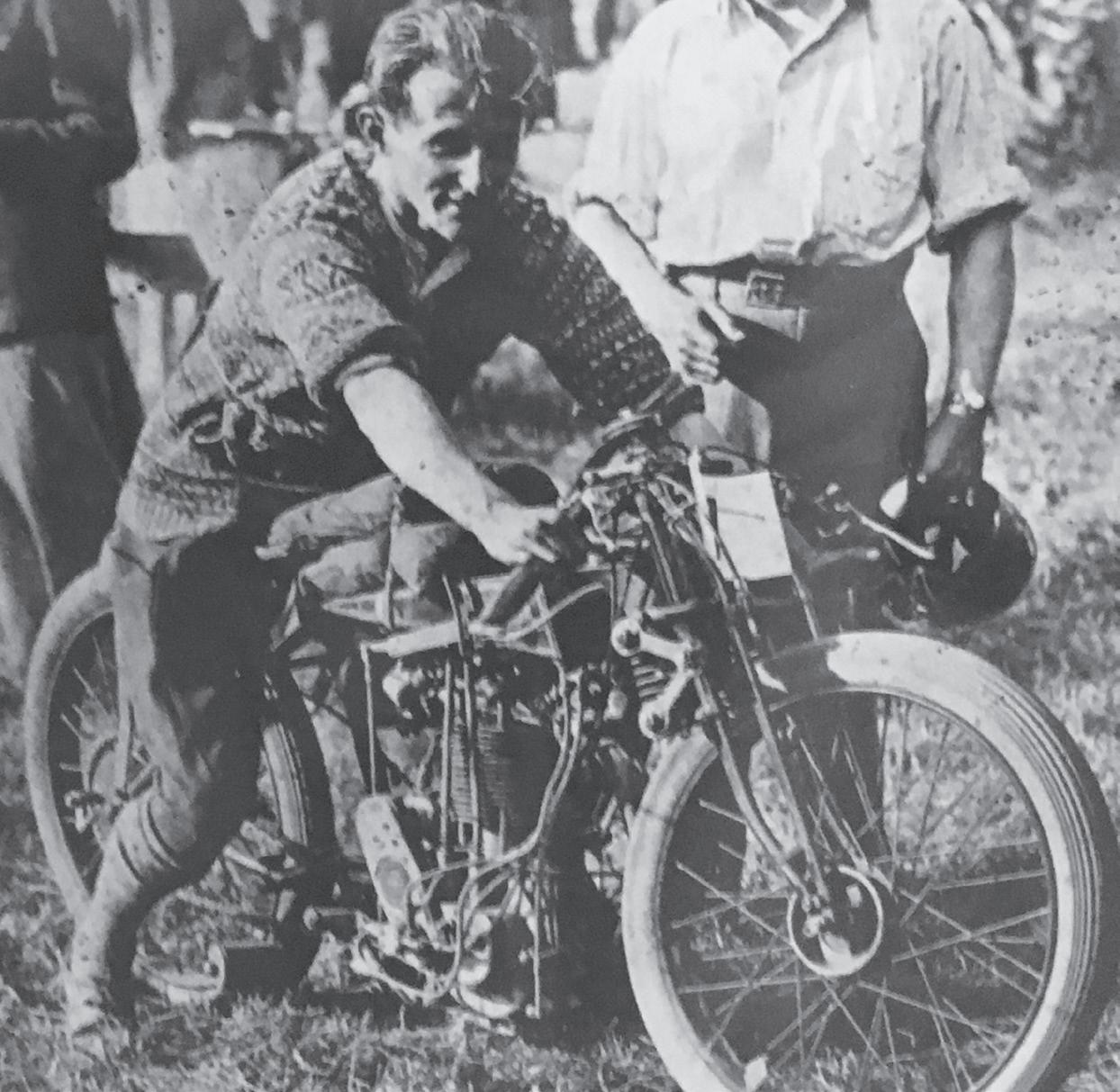

bike. According to Gillian, his daughter, the Dirt Track enterprise was very successful and she went on to explain how one night Gordon and friends went to Paris’ famous Folies Bergère where he was dared to go up on stage to perform with the dancers. Fuelled by alcohol, he duly attempted to leap onto the stage only to be grabbed by security guards and thrown into a water feature. The next day, he returned to the venue clutching a bottle of brandy to give to the manager by way of an apology for his behaviour. He was then invited by the manager to share the bottle.
Some years ago, Gordon explained to good friend Dave Stewart of the British Motorcycle Racing Club (BEMSEE) how, while in France in 1930, he organised a Speedway Festival. This was effectively a world championship speedway meeting with top riders invited from places as far afield as America, South Africa and Australia. By all accounts, this was managed on a ‘wing and a prayer’. The story goes that Gordon said they even had a lorry parked out the back for a quick getaway if needed. However, at the end of the day when everybody was paid, they still had a suitcase full of francs left. They then went to the south of France for a holiday. His daughter explained that he went on
MARCH - APRIL 2021 | BROOKLANDS BULLETIN 29
John Marston Ltd, which produced Sunbeam motorcycles, made the most of Gordon’s recordbreaking feats on its bikes with advertising like this one from 1925.
Gordon remained an active and enthusiastic member of the BEMSEE, having helped to reform the club after the Second World War.
Switching to speedway riding in the late 1920s, Gordon earned good money and also set up a track in Paris, France.His dancing at the Folies Bergère was less successful and ended with Gordon in a water feature.
Japan Tobacco International
(JTI)

is a member of the Japan Tobacco Group of Companies, a leading international tobacco manufacturer.

As the UK’s number 1 tobacco company1 we are recognised by our globally renowned brands.
Behind our success is a company whose own corporate brand is lived everyday through the actions and behaviours of our employees. Our UK head office is based in Weybridge, Surrey.
jti.com/uk 1. IRi Market Place, Volume Share, Total Tobacco Category, Total UK, FY 2020.
to stay at The Westminster Hotel on the seafront at Nice and spent the lot in three weeks. Legend has it he returned to the UK with £15 in his pocket saying: ‘Well, it was the roaring Twenties.’

Later life





In 1933, Gordon married Margaret (Rita) who gave birth to their daughter Gillian in 1936. Gordon bought and ran a garage in Putney, London up until the Second World War when the garage was requisitioned and he went to work for General Motors. After the war, he went back to the motor trade but never lost his passion

for motorcycle racing. In 1947, he was involved in the reformation of BEMSEE and remained a committed member and official, going on to become Life President.





Gordon remained very active and on his 91st birthday informed a friend, in motorcycling parlance, that he would ‘crack the ton’ to live to 100-years old. In September 2003, at the age of 99 and just few months before his death, he was taken to Brands Hatch where he rode round the track in a golf cart. He did get his telegram from the Queen but died peacefully just three days after his 100th birthday. BEMSEE provided an



escort of motorcycles for the funeral and all were able to attend the wake at Brooklands Museum. The family remain very grateful for the support of BEMSEE and to the collection of items compiled by John Pulford representing Gordon’s achievements.
In a book on the Cobbold history it says: ‘That Gordon should live to be one hundred was particularly fitting because during the heyday of motorcycle racing at the steeply banked Brooklands circuit near Weybridge, an average speed of one hundred miles per hour was the measure that marked out the great from the good.’
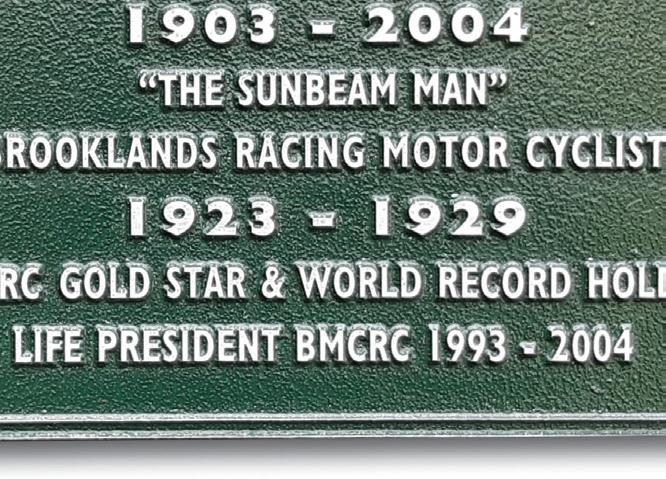

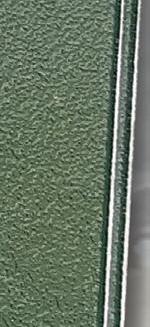





Thanks go to Gordon’s daughter, Gillian, The Cobbold Family History Trust and BEMSEE for providing the information for this article. The Museum holds a collection of trophies and items associated with his racing career and one of his record-breaking motorcycles still survives in a private collection.
a private collection.
The Cobbold Memorial in Brooklands Museum’s Garden of Memories remembers some of Gordon’s major achievements throughout his long and eventful life.
Gordon and Rita married in 1933 and later moved to Owlsmoor, Berkshire. Here, the couple are celebrating their diamond wedding anniversary, where they gave younger family members a run for their money on the dance floor.
The 16 World Records set by Gordon demonstrate his skill and versatility on motorcycles of different sizes and over various durations.
MARCH - APRIL 2021 | BROOKLANDS BULLETIN 31
At the age of 99, Gordon was still enjoying the racing life with a trip around Brands Hatch in a golf buggy.
DARKEST HOUR REMEMBERED

The new Brooklands’ Darkest Hour exhibition remembers the 1940 air raid in a unique way inside a war-time shelter.
Words: Andrew Lewis, Alex Patterson Photos: Brooklands Museum Collection

BROOKLANDS BULLETIN | MARCH - APRIL 2021 32
The new Brooklands’ Darkest Hour exhibition helps visitors contemplate what workers at Brooklands would have felt during the 1940 air raids on the site.
September 2020 marked the 80th anniversary of the air raids on the Vickers and Hawker factories, a pivotal moment in the history of Brooklands which left almost 90 dead, 400 injured and changed the site forever. Despite the ongoing Covid restrictions, the Museum was able to commemorate the occasion with a remembrance service and the opening of a new exhibition in an air raid shelter, supported by BAE Systems.

The new Brooklands’ Darkest Hour exhibition is based in the air raid shelter on the Finishing Straight that was built to protect those working in the hangar close by, which is now the Brooklands Aircraft Factory exhibition. This was just one of a number of small shelters positioned around the factory site, another example being those set into the side of the Members’ Banking. At the time of the bombing, most of the workers were expected to use the huge Sandpits shelter complex built into the side of St Georges Hill across Brooklands Road from the Vickers factory. This network of tunnels served not only as a shelter, but also included a medical station to treat anyone injured during a raid. These tunnels still survive a short distance from the Museum next to the David Lloyd gym, but are now used to securely store vintage wine.
The centrepiece of the exhibition is a film that brings to life the memories of factory workers present on the fateful day, which have been recorded as part of the Museum’s Oral History Project called Voices of Brooklands at War. It was created in collaboration with production company Squeaky Pedal and uses animation from Future Bob Productions to bring to life the words of eight of those who bore witness to the day’s events. The experiences covered range from Ena White-Winchester who was a 14-year-old fabric worker caught up in the centre of events, to Norman ‘Spud’ Boorer who was an onlooker at the beginning of a long career with Vickers working closely Barnes Wallis and George Edwards. The video is available to watch both in the exhibition and on the Brooklands Museum social media pages.
The exhibition was opened at the remembrance service on the 4 September, 2020 exactly 80 years since the tragic event. We were honoured to welcome representatives from a number of families of those who were affected by the raid alongside dignitaries such as the Bishop of Guildford, the Mayor of Elmbridge, and the Lord-Lieutenant of Surrey. This poignant event served as a reminder that it was not just those flying the aircraft built at Brooklands who risked their lives during the Second World War.

MARCH - APRIL 2021 | BROOKLANDS BULLETIN 33
Air raid shelters built into the Sandpits in the side of St Georges Hill offered a safe haven and included a medical station to treat any injured workers.
The memorial to the 88 people who died in the 1940 raids on Brooklands was unveiled on 4 September, 2020 exactly 80 years on from the most devastating attack.
An immersive experience
To tell the story appropriately of the bombing raid and remember those who suffered during this awful attack, it was important for us to have the words and memories of those who experienced it first-hand. Over the last two years, the team has been undertaking an oral history project, capturing stories of former Vickers and BAC workers. We were incredibly lucky to be approached by a few individuals, or members of their family, who either witnessed the bombing from afar or survived. It was clear from listening to these recordings that the best way to mark this dreadful event was to hear accounts from those who witnessed it.
To develop an exhibition which was to be impactful to the visitor and appropriate to those who lost their lives, the location had to be right. Alongside the Finishing Straight and built into Test Hill are a series of air raid shelters. These unassuming structures were constructed as a result of the raid to save the lives of factory workers during future attacks. The selected shelter chosen to house the exhibition, located centrally on the Finishing Straight, was previously associated with the Bellman Hangar before it was relocated in 2016.

From the outset, it was not our intention to recreate a Second World War bombing experience, but rather use the voices and stories drawn from the oral history project. We commissioned a series of short animations from a film company that brought these words to life. They created five short films that interwove different stories together about the
raid, describing the impact on people’s lives, the shock and aftermath. This is supported by a series of graphic panels that have reproduced archive images of the site leading up to the raid and the aftermath.
The result is an immersive experience, walking through the shelter, entering it at one end to be plunged into a murky environment with limited light. As you move through the space, you begin to imagine what it must have been like,
tucked inside the concrete tunnel with colleagues escaping the threat of potential attack. The sounds of the short films echo with the words of those who witnessed the events of 4 September, 1940 as a reminder that while some survived, 88 people lost their lives. The result is a contemplative space, allowing visitors to reflect on the events of the raid, the impact it had on the community and to remember the sacrifices made by workers at Brooklands during the Second World War.

BROOKLANDS BULLETIN | MARCH - APRIL 2021 34
The scale of the aircraft factories at Brooklands is evident in this photo, which also shows the outline of planes on the track.
The Bishop of Guildford takes time to explore and reflect on the new Brooklands exhibition during its opening in 2020.
R.S.WILLIAMS LIMITED
The pursuit of perfection
DB2 Vantage LHD 1953

DB4 Series IV 1962
R.S.WILLIAMS Limited are Aston Martin specialists, offering in-house machining; manufacture; engine building (including our famous upgrades); worldwide parts distribution and workshops for service, repair, upgrade and preparation of your car to unparalleled standards. Offering award winning restorations and full race preparation and support - Making ownership a pleasure since 1968.
1965
Fabulous DB5 in original Dubonnet and black Connolly hide (as per build-sheet) with lovely patina. Complete ownership history from new (8 owners). Maintenance, service and restoration history from the past 30yrs. RS Williams maintained last 19yrs. Expenditure in excess of £180k including engine upgrade to 4.2ltr in August 2002 (approx 29,000 miles ago).
V8 Vantage 1987

One of only 118 LHD VB6B engined cars. 2016 and 2018 Mille Miglia finisher. 2017 and 2019 Tulpenrally (Tulip rally) finisher. RS Williams mechanical rebuild in 2014 for £42,000. Engine rebuild in 2016 for €49,000. Offered fully mechanically prepared by RS Williams for 2021 Mille Miglia or similar event. Perhaps the finest unrestored example available.
DB4 1961
A magnificent DB4 Series IV benefitting from a complete RS Williams body-off restoration costing in excess of £350,000. Two year restoration from October 2017 completed in October 2019 with only 600 miles covered since. California Sage with Fawn interior. Original SS engine upgrade to 4.7ltr. Superb in every way.



DB5 1965
Chichester Blue with Parchment hide piped dark blue. Full history and MOT certificates from new. RS Williams maintained last 20+ years. A beautiful X-Pack with fastidious history. The 30th car produced and 1 of only 84 manual RHD cars.
Stunning DB4 in dark blue with red Connolly hide. Maintenance, service and restoration history from the past 45yrs. RS Williams maintained last 15yrs. Expenditure in excess of £100k including engine upgrade to 4.7ltr in 2010 – under 5,000 miles covered since. Superb in every aspect and ready to be enjoyed.


V8 7.0ltr 1979
Silver Birch with red interior (as per build-sheet, 1 of only approx 124 or so DB5’s to be ‘true’ Silver Birch cars). Full bare metal re-spray and re-trim carried out in 2003. 4.2ltr RS Williams engine upgrade completed in 2008. RS Williams maintained last 15yrs. Invoices showing expenditure in excess of £155,000. Limited mileage over the last 4 years. Used by Aston Martin in promotional video.
DB7 Zagato 2004

A wonderful opportunity to purchase a V8 with several desirable upgrades. 7.0ltr engine upgrade in the late 90’s and refreshed in 2011 at 41,454 miles – current mileage 43,496. 16’ wheels, handling kit and Brembo brake conversion. Currently undergoing full chassis repair and bare-metal respray –colour choice optional at this stage.
Mercury Grey with Charcoal interior – 1 of only 4 RHD cars produced with this combination. One of only 99 cars produced in total. 14,300 miles from new. Full Aston Martin Heritage approved service history from new. 5.9 litre V12 delivering 435bhp capable of around 190 mph and 0-60 mph in comfortably under 5 seconds.
£295,000
Protech House, Copse Road, Cobham, Surrey, KT11 2TW View all our cars: www.rswilliams.co.uk | 01932 868377
RICHARD STEWART WILLIAMS LTD EST 1968 ASTON MARTIN
DB5
APPRENTICE FOR LIFE
John Burch started his career as an apprentice with Vickers Armstrongs. It set him up for a life in work and much more.

Words: John Burch Photos: John Burch, BAE, Hugh Llewelyn
Way back in 1950 when I was in my last year at school, my father asked ‘what job would you like to do?’ Having always taken my toys apart to see how they worked, it would have to be something in the mechanical line. So, he wrote to several firms to see if they would take me on as an apprentice engineer. The two that looked the best were Metal Box and Vickers Armstrongs
Limited. I chose Vickers as it was an easy journey from Surbiton Station to Weybridge Station. I still have the letter from Mr Ernie Duckett, Apprentice Supervisor, saying ‘Your son should report to me at 9am prompt on Monday 17 April, 1950 where he will be in attendance all day (lunch will be provided).’
In those days, the Apprentice Supervisor’s office was in the old Control Tower where we had to take an entrance
exam mainly on drawings of gear wheels. There might be as many as five gears on a page and it required you to decide, if the lead wheel was turned clockwise, which direction did the fifth wheel turn. I must have passed because on 5 May, 1950 my father received another letter from Mr Duckett stating that ‘he was prepared to recommend to the Management that I be accepted as a Turner and Skilled Machinist for a five-year Trade Apprenticeship.’
BROOKLANDS BULLETIN | MARCH - APRIL 2021 36
A day out of the office and factory for John Burch and friends for the annual Sports Day at Vickers Sports Ground.
Five years to the day from starting, John received his Certificate of Apprenticeship on 26 September,

My father then received a letter on the 11 May, 1950 from Mr Tommy Gammon, the Works Manager stating ‘We are prepared to accepted him as a Turner and Skilled Machinist Trade Apprentice. But as he is prepared to start on the 14 August, he could work as a Shop Boy until the 26 September.’
On receiving my Agreement of Apprenticeship, I noted that my weekly wages for the first year would be 19 shillings 4¾d, but I did get an extra 9 Shillings cost of living plus Vickers’ bonus system. The rate fixers would give you a time to do your operation, say two minutes to make a bolt, and during the day if you managed to do them in one minute you got a bonus, but Vickers only gave you half of it. I had to give my mum five shillings per week plus my return ticket to Weybridge every day and lunch. So, having spent the first few weeks as a shop boy in the Tool Room Gallery (an absolute mad house), where it was not unusual to find your tea mug with the tea in it screwed to the bench or, if you wore glasses, to find them coated with engineer’s blue.

Apprentice left begins
On the 26 September, I reported to the Machine Shop Manager’s Office. Unfortunately, I can’t remember his name but was taken to the Ward 2A Capstan section by a Mr Seaman, the Office Secretary, who introduced me to a Jack Mallett, who would be my section setter. He then took me up to a capstan, a machine I had never seen before and said this is your machine. The capstan section consisted of approximately 50 machines


MARCH - APRIL 2021 | BROOKLANDS BULLETIN 37
1955. on 26 September, 1955. It was signed by George Edwards and Thomas Gammon, and began a new chapter in John’s life.
John enjoying an evening out with colleagues from the Planning Drawing Office.
During his time as an apprentice, John was asked to drill holes in a metal tube for a ‘well-dressed gentleman.’ Little did he know the man was Barnes Wallis.


from the very small, that I was to start on, to huge ones where they turned and bored the undercarriage legs. After nine months on that section, I was moved up to the larger 3A capstans for two months and then on to the 7 capstans for four months.

The next move was to the C/Lathe section, again from small lathes to large for 13 months. Then on to the Horizontal Milling section where the undercarriage legs where milled to connect the hydraulic lifting jacks on to the aircraft. This was heavy work lifting the legs on to the jigs, with no overhead cranes on this section. Finally, I moved to the Universal Milling section and ended up on a Thiel mill. Archie Chandler was the section leader and one day he came across to my machine with a well-dressed gentleman. He asked if I would drill very small holes in some small steel tubes for him and would I mind if the gentleman stood by me while I drilled the holes? It took quite a long time as there were six tubes of different diameters from about half an inch down with four holes
at different angles in each tube. I got on well with the gentleman and he explained they were going to be for a hydraulic extending jack on which he was doing some development work. I finished the job and the gentleman went away happy. After he had gone, the Machine Shop Manager, George Ide, asked if the visitor was satisfied and I said he was. ‘Thank goodness for that,’ he said. ‘Because that was Mr Barnes Wallis and those jacks were for his model swing wing aircraft.’ I was flabbergasted that I had Barnes Wallis standing next to me all day and I didn’t know.
During my apprenticeship, we had one day each week at Brooklands Technical College. There were two courses, one a National Certificate and the other for City and Guilds. Trade Apprentices were put into the City and Guilds course, but in the 1952 exams I was the only one out of the class that passed and they couldn’t run a course for one person so I was put into the National Certificate course. Way above my head, calculus and all that. I was more

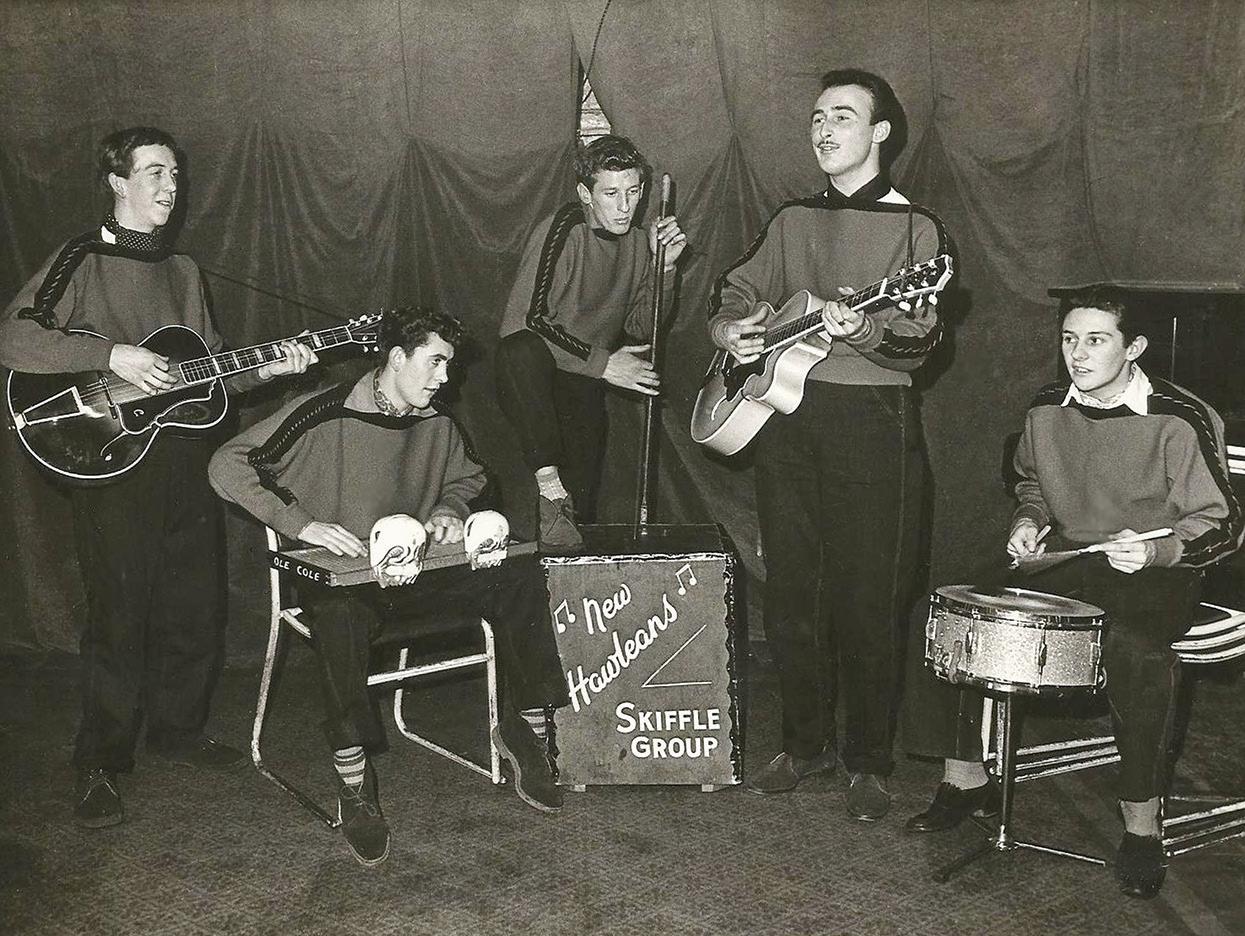

interested in scrambling motorbikes, so I bought a pre-war James 150cc with girder forks and raced that for a year or two until I was knocked off a friend’s motorbike and received compensation of £125. With that, I bought a brand new 1954 James Cotswold Scrambler and raced it with some success. Thank goodness for the welding department at Vickers who kept me going, welding up the frame and rear forks whenever they broke.
New challenges
By this time, I had finished my Apprenticeship and was a fully qualified Turner and Skilled Machinist working on the Thiel Universal Mill. I had noticed my hands were very red and itched constantly, so I went to the works surgery for tests and it confirmed I had bad dermatitis. The doctor wrote a letter to the management advising them to find me a job off the machines. I was offered two jobs: one with Barnes Wallis or another in the Machine Shop Rate Fixing and Planning Department. The Barnes Wallis job entailed some machining, so rate fixing and planning it was. A good opportunity for learning to price and plan jobs, as I could see the aircraft industry was not going to last forever at Brooklands.
One incident I do remember was a visit by His Royal Highness The Duke of Edinburgh in 1958. The management decided on a route that he should take through the offices and factory. This route was cleaned and painted and everybody working on that route was told to make sure there was no swarf on the floor and to wear clean overalls. Well, we all know the Duke of Edinburgh, so off he went demanding to go everywhere that wasn’t painted and speaking to all and sundry, clean overalls or not.
The rate fixing and planning engineers were well known to me as I had worked with most of them in the machine shop. On arriving at this hanger-sized office
MARCH - APRIL 2021 | BROOKLANDS BULLETIN 39
The Planning Office Christmas Party offered another opportunity to get away from the factory and enjoy some relaxation at the Newlands Corner Hotel, Guildford.
John ended up in charge of all the machining for the flaps on the VC10, as well as the Vanguard aircraft.
The New Hawleans Skiffle Group had three Vickers apprentices in the line-up, including John.
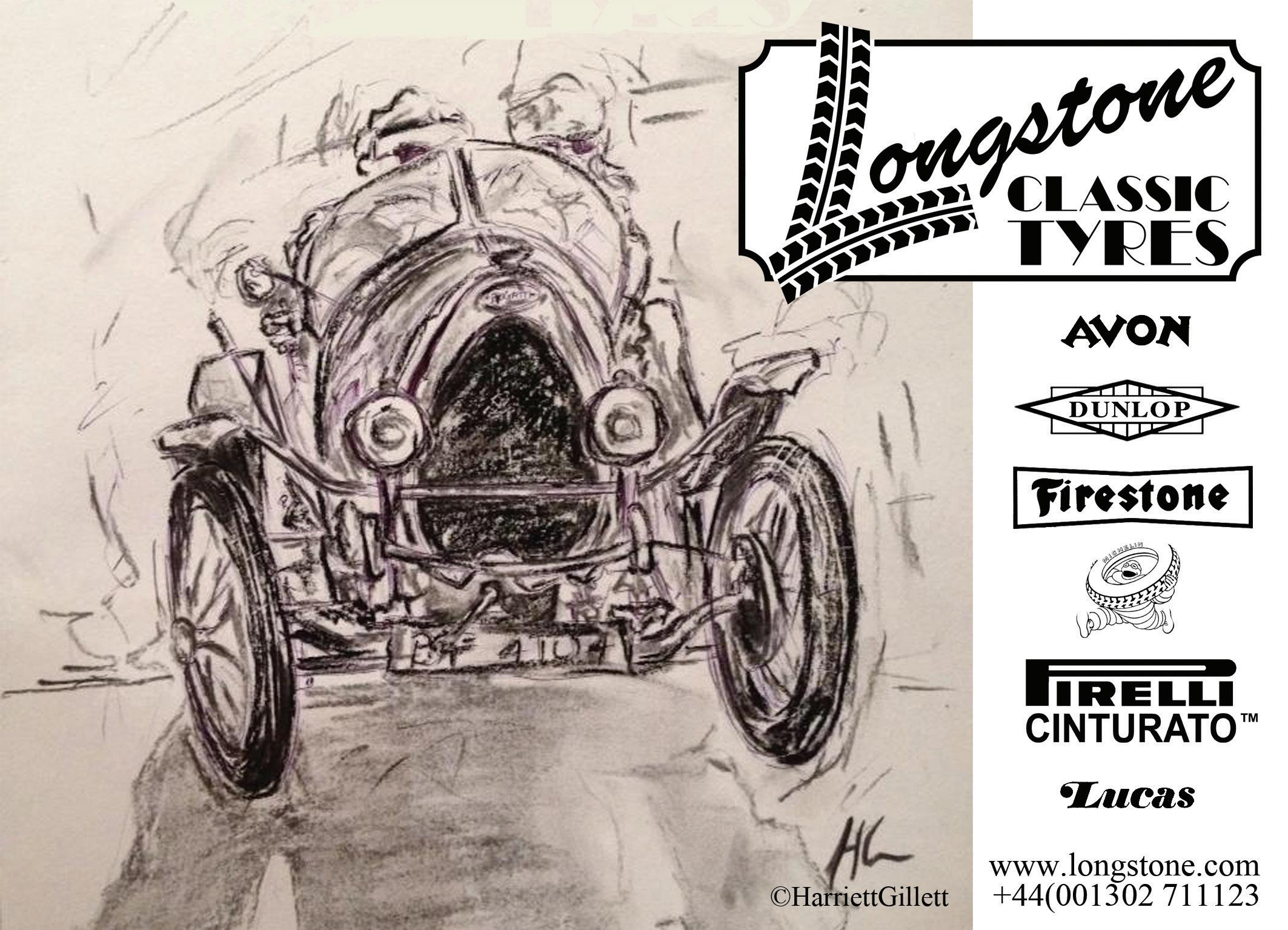
BROOKLANDS BULLETIN | MARCH - APRIL 2021 40 Built around classics. Authorised and regulated by the FCA AGREED VALUE UK & EU ROADSIDE ASSISTANCE CLUB MEMBERSHIP DISCOUNT TRACK DAY COVER LIMITED MILEAGE DISCOUNT
which housed the rate fixing, planning and tool room drawing office departments, I was given a desk 10 x 3-ft and slightly leaning towards you so you could see all of the larger drawings in one piece.
I was sat next to Harry Ottaway and it was his role to give me small jobs to plan for the machine shop. Most of these were electrical connections which had to be designed because of space and weight. I remember placing an order on SSL Engineering in West Byfleet for the throttle handles of the Vanguard because they had an overhead router which could machine the profile in one operation.
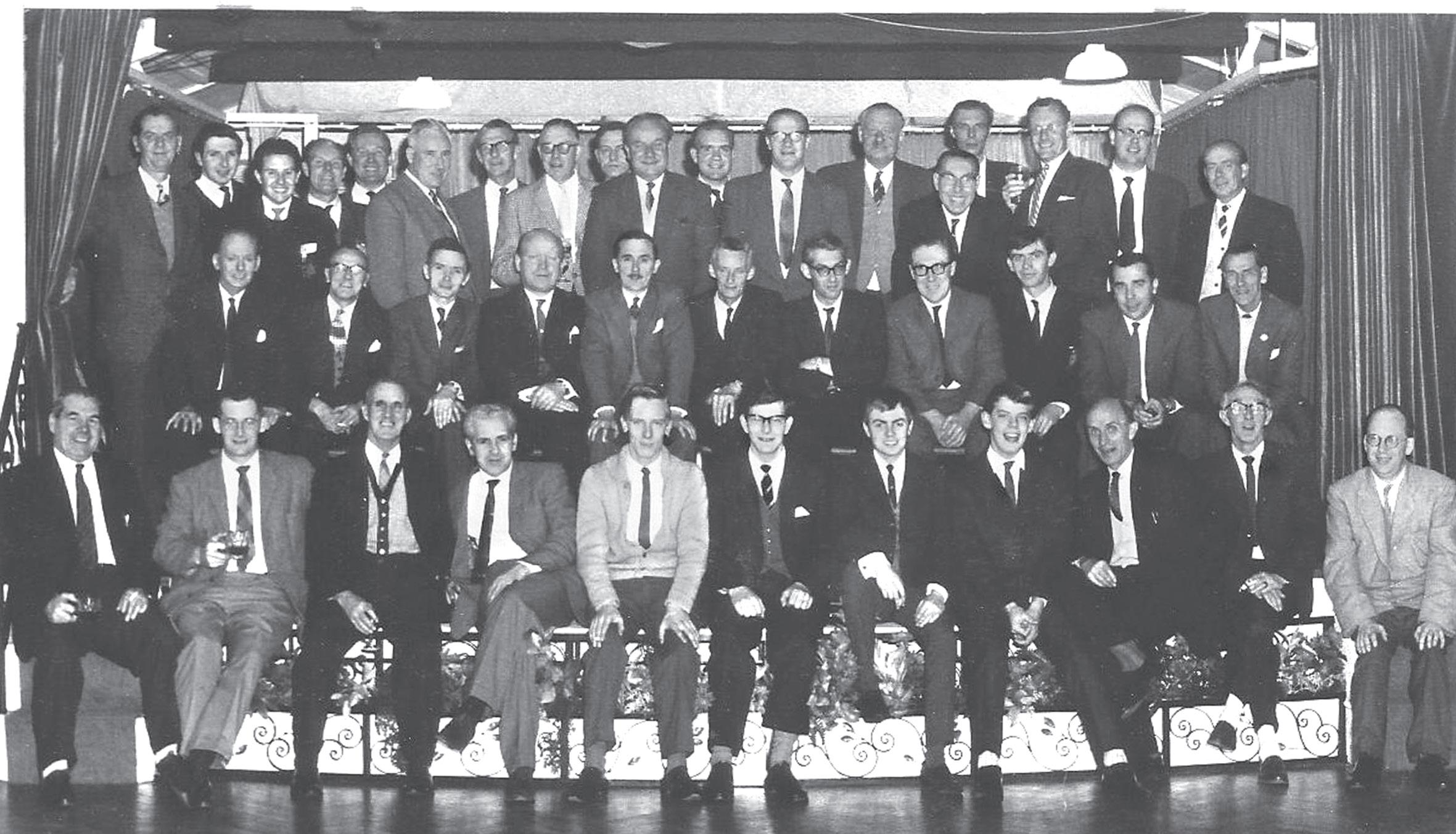
I eventually ended up in charge of all the machining for the flaps on the Vanguard, VC10 and gearbox spares for the older aircraft. The hydraulic driven gearboxes on the Vanguard and VC10 were manufactured by ABC Motors in Hersham who had been bought out by Vickers. Working in the planning office was a good education as I had always wanted my own business and it taught me how to plan and price jobs. During this period, I got married and bought a house in West Ewell with three garages, just right for our two cars and a workshop for my motorbikes.
Then along came the TSR2 and what an incredible aircraft it was. I remember my boss, Alf Fothergill, being furious at losing the manufacture of the undercarriage for the TSR2 to Dowty Engineering. Weybridge had always made the undercarriage’s for Vickers aircraft. When the TSR2 was cancelled, I decided it was time for me to leave and I found myself a Production Manager job at a small engineering firm in Addlestone called Morrell and Harvey Engineering which improved my pay from £17 per week including overtime to £27.00 per week plus car allowance. Martin Harvey took a shine to me because he was a Tool Room Apprentice at Vickers during the war and I still see him at 96-years old. I took him to Brooklands Museum a couple of years ago and when we got into the Wellington hanger, he walked straight up to the aircraft and said ‘See that Wish Bone Cleat in the geodetic construction? I made the tool for that.’ The Volunteers were amazed, but when he told them that he worked at Vickers from 1938 and he was now 95-years old they believed him.
Back to Brooklands
When Morrell and Harvey bought Ashtead Engineering, I found land in New Haw that was big enough for the two businesses. However, I still had a hankering for my own engineering business and, by this time, I had almost given up motorcycle racing and had a family. So, I bought some machines, put them in the third garage and started Burch and Clarke Engineering. Having left Morrell and Harvey, I set myself up as a Sub Contract Production Engineer working for a firm called Pactdrive and worked at home in the evenings. The business grew so big that I had to rent a factory in Sutton, employing 11 people including myself and my wife who kept the books. This was in 1982, the same year we moved to Banstead.
During this period, I purchased another business, Edward Holt Manufacturing and Marketing which made pig identification equipment, as all animals have to be identified with place of birth. We also manufactured Pig Rings which were placed in the pigs’ noses to stop them routing for food and digging up the fields. Then I was informed the factory estate would be closed. Luckily, an engineering business friend invited me to move my machines into his factory with the proviso that he would eventually buy me out, which he did.
My wife died in 2015 and, although I play a lot of weekday golf, I wanted something to do at weekends. Having been a keen motorcycle scrambler and trials rider in the 1950s and ’60s, I decided to try and buy the two bikes I had used. So, I bought a 1958 Greeves Scottish Trials bike from Vic Allan and a year later a 1957 James Commando from Steve at Villiers Services. The James needed a lot of money and time but today it is in almost showroom condition. I am often at Brooklands with my bikes and ride them up Test Hill any time I can, as Steve Castle will tell you.
Well, that’s my life as a Vickers-trained engineer and a jolly good training it was too as you couldn’t go to an engineering factory anywhere in the Surrey area without meeting somebody who had worked at Vickers.
MARCH - APRIL 2021 | BROOKLANDS BULLETIN 41
The staff of the Planning Tool Drawing Office pose for a group photo.


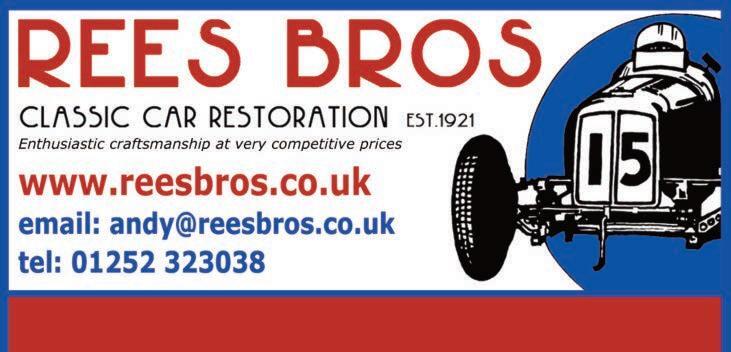


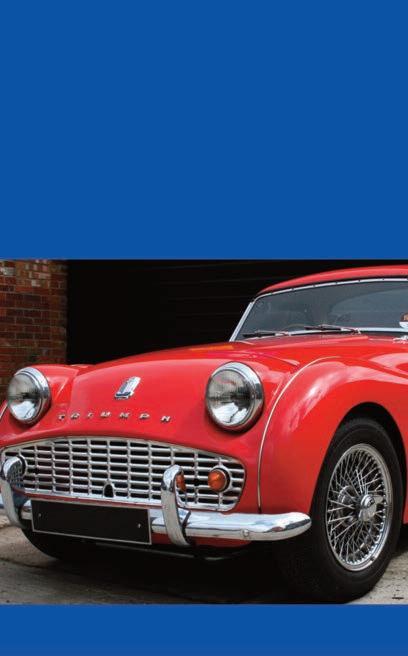


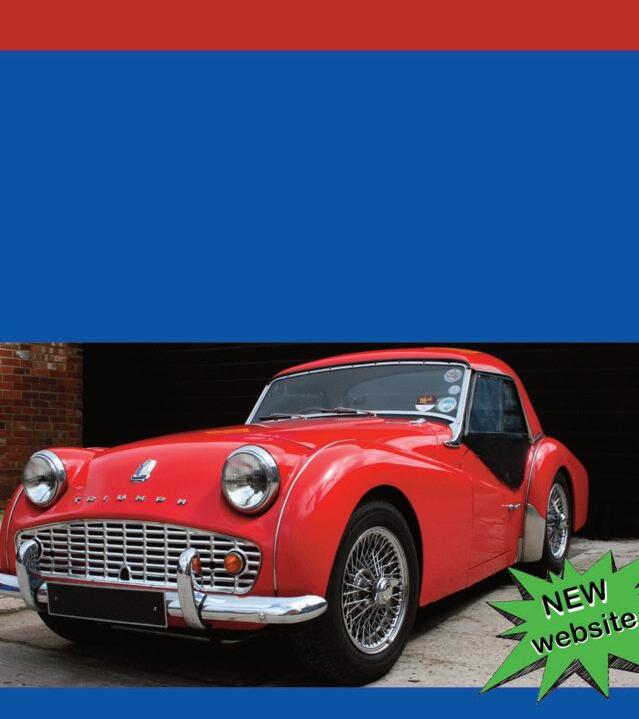



BROOKLANDS BULLETIN | MARCH - APRIL 2021 42 THE BEST MAGAZINE FOR CARS FROM THE DAWN OF MOTORING TO THE 1950S Subscribe online at www.theautomobile.co.uk Stemax ltd Performance engineers GEOFF HARRIS 07860 458 679 |01189 344 140 WWW.GEOFF-HARRIS.CO.UK Stemax ltd Performance engineers GEOFF HARRIS 07860 458 679 |01189 344 140 WWW.GEOFF-HARRIS.CO.UK
My favourite… aircraft



The Museum’s Concorde is Will Horgan’s favourite exhibit after working on the original design.
It was always known in the drawing office as ‘Concorde 02’ for the British-built production prototype. For a few months during the mid-1960s, I worked at South Marston, which had become an outpost of the main BAC design office at Bristol.


At that time, I lived at Didcot, had just taken out my first mortgage and money was tight with a young family to feed. I travelled into work over the Berkshire and Wiltshire lanes on my Triton motorcycle. When I came into the office for the first time, I was surprised to see everyone had a wooden board, mounted on a bench at a fixed angle of about 10-degrees to the horizontal, with a long T-square for drawing horizontal lines. I had last used one of these at school during the 1950s. These boards were ‘Double Elephant’ size, roughly the same as today’s A0 size. To draw lines at other angles, you had to use set-squares. If you were resourceful, you provided your own adjustable set-square.
When you consider that Concorde was the premier aerospace project in the world at that time, it seemed a bit primitive. To make calculations, you used your slide rule. A lot of the work was carrying out modifications, and all drawings were sent to the weightsman to be weighed by calculation, and stressed by the stressman. The analysis was done longhand and the numbers were put into an electrically driven mechanical adding machine. These machines made a rather loud whirring and clicking noise, and must have given rise to the expression ‘number crunching’. Eventually, the answer would arrive with a triumphal ring. Sometimes, a drawing would require alteration, but I do not recall ever being asked to make it from thicker material and it all seemed to work quite well in the sky.
One evening, my section leader asked me: ‘Are you going to be in on Tuesday?’ I replied: ‘Of course. Why?’ The answer came: ‘The liaison engineer has a special job for you.’ I was intrigued and it turned out they wanted a drawing for a conference at Bristol, attended by staff from both countries, and they needed a frontal view of the engine air intakes, drawn from reference drawings, but to as large a scale as a Double Elephant board would permit.
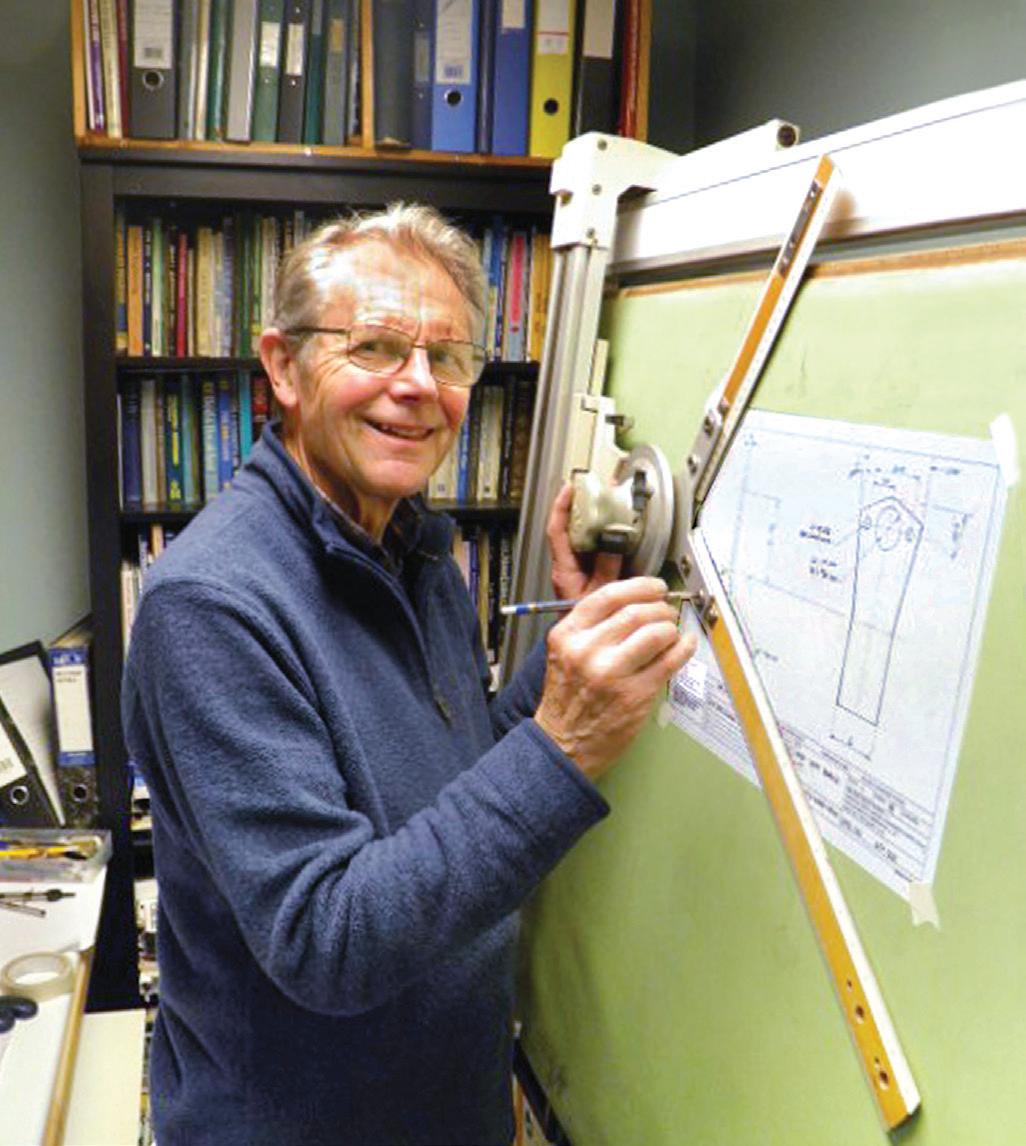

It was needed to help the aerodynamicists consider the problem
matters
of how to decelerate the incoming air stream from Mach 2 (around 1400mph) to only about 500mph in the few feet and fraction of a second available to suit the Olympus engine requirements. I read afterwards this was the most daunting problem for the top team at this stage. The penalty for getting it wrong would be pressure surges and big bangs. I don’t know how they did it, but it was solved.
In 1974, I witnessed 02 flying a few hundred feet above my head, in my garden in Isleworth, west London, on its first approach to land at Heathrow. The noise was phenomenal and the sight was awe inspiring, and we loved it.
When the Concorde fleet went into regular service, we had this twice-daily window-rattling experience. The family often asked to be taken up to Heathrow to watch the sensational take-off. Reheat on, bright red flames from the exhaust, just before a rapid rotation and steep climb into the clouds.
MARCH - APRIL 2021 | BROOKLANDS BULLETIN 43 members’


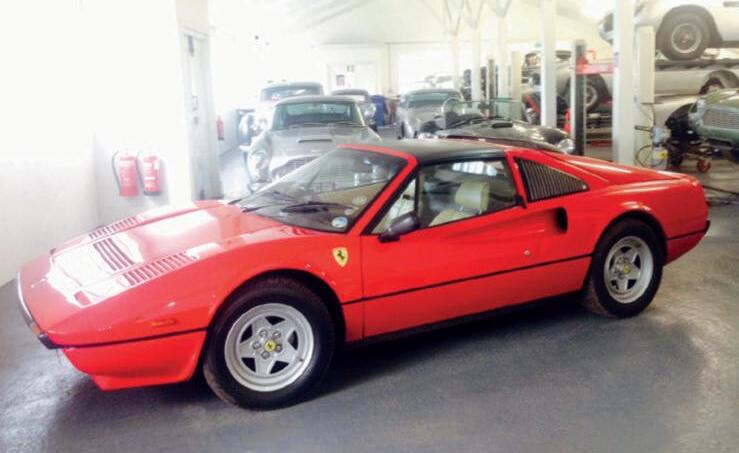
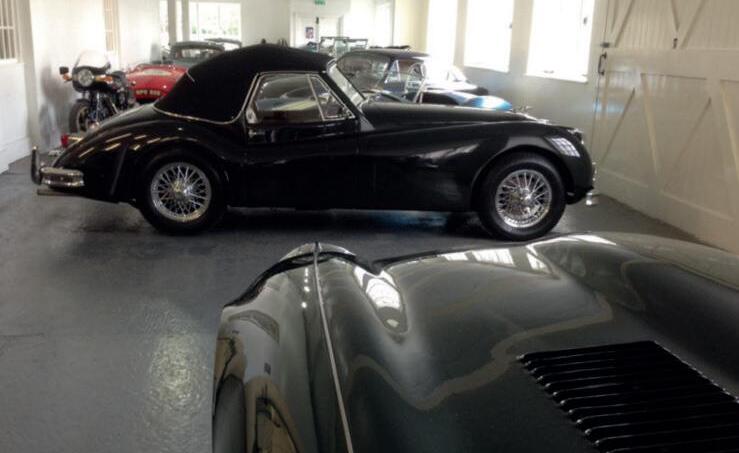

For many of us, this was not our first time at Llanerchindda Farm in beautiful Carmarthenshire, but it felt special as it was the first opportunity to get away during a challenging year. When we arrived, we received a proper family welcome with afternoon tea and a bubbly reception. Llanerchindda Farm has a reputation for amazing food and hospitality. Everything is prepared by the Hadleys from local produce and quality is the word.
After a proper farmhouse breakfast, we gathered for the tour briefing. Martin had considerately planned out two routes that kept us away from Covid hotspots. This first day was around 107 miles taking in the market towns of LLandovery and Lampeter. Llandovery has a rich history, where the Black Ox Bank was founded that became Lloyds Bank. Lampeter is a university town and home of the first Welsh rugby team formed in 1850 by Rowland Williams when he brought the game back from Cambridge.
Next stop was Cardigan and the coast. It was very quiet and a lovely place to find a small café for a coffee and Welsh cake. Our last stop of the day was Cenarth Falls. Home of the National Coracle Centre,

this natural attraction is a cascade of waterfalls and the first significant barrier on the River Teifi, famous for the salmon and migratory trout leaping up them in the autumn months. Cenarth is also home to Caws Cenarth who make artisan Welsh cheese, available online and every night at Llanerchindda. I can highly recommend the Perl Las, which means Blue Pearl.
Day two started with breakfast and many eyes fixed on the TV showing the Goodwood Speed Week. This second route of around 102 miles would see us take in the towns of Llanwrtyd Wells, Llandrindod Wells, Knighton, and Builth Wells via the glorious Hergest Croft Gardens.
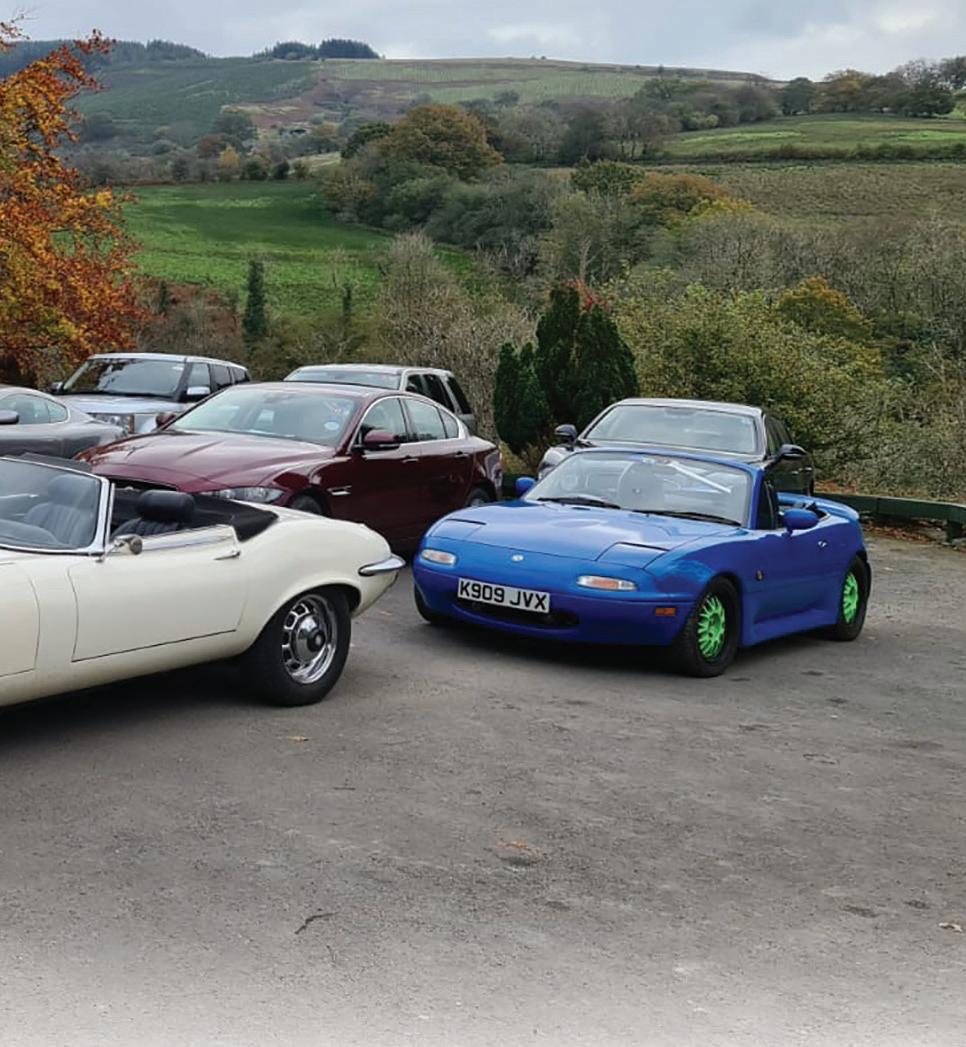

Llanwrtyd Wells with a population of 601 claims to be the smallest town in Britain and is also home to the World Bog Snorkelling Championship. Llandrindod Wells is also a spa town and gave us the opportunity to watch the local model boat club try out some of their skilfully constructed vessels.
We passed through Knighton, which houses Europe’s largest camera obscura and planetarium, and is part of the Spaceguard UK project which searches for asteroids.
Our lunch stop was at Hergest Croft Gardens. For over 120 years, four generations of the sameBanks family have created the gardens which extend over 70 acres and contain more than 5000 rare trees. It also holds the National Collections of maples and birches.
Looping back towards Llanerchindda, we drove through Builth Wells, where the river was around eight feet lower than on our previous visit thanks to no torrential rain this time. More fabulous fare from the Llanerchindda kitchen greeted us on our return, then all too soon we were packed up the following morning and heading home.
Many thanks to the Hadley’s for their unequalled hospitality and to Angela Hume for her tireless efforts to arrange events such as this, which on this occasion certainly provided a weekend of tranquillityy in a world of concern. We are already booked in for a return trip next year. If you too are interested in finding out more about this and other events organised by the Brooklands Driving Group, please contact Angela.
David Brockington-Hill



MARCH - APRIL 2021 | BROOKLANDS BULLETIN 45 members’ matters
Welsh Tour
members’ matters
Combe what may
It was a dark and rainy day for take two of the Castle Combe track day. Covid-19 couldn’t stop us this time from putting the pedal to the metal around the famous Castle Combe track, although the rain nearly did. The brave souls who attended turned up in their shining armour of raincoats and umbrellas, and a variety of cars.
Every track day that has been organised by the lovely Angela Hume and Malcom Grubb, I have been there with bells on. Castle Combe has always been my favourite track with its demanding corners and its fast straight to test your driving ability.
On the 21 October, the drivers certainly tested their mettle on track. From Caterhams to Volvos, Castle Combe supplied fun, smiles and education. Many people say that track days are all about speed and pushing your car to see how well they perform. However, my view is take the tuition lap, learn how to control your car at a faster speed, become confident and maybe you will be able to overtake the car in front on the next session.
Each driving session was roughly 15 minutes, making sure the drivers in front pushed enough water off the track ready for my go, until we were allowed an open pit lane. This allows you more time on track, though you will have more time afterwards in the garage replacing brake pads and fluid. Having only just had a competition clutch fitted to the MINI, I underestimated its
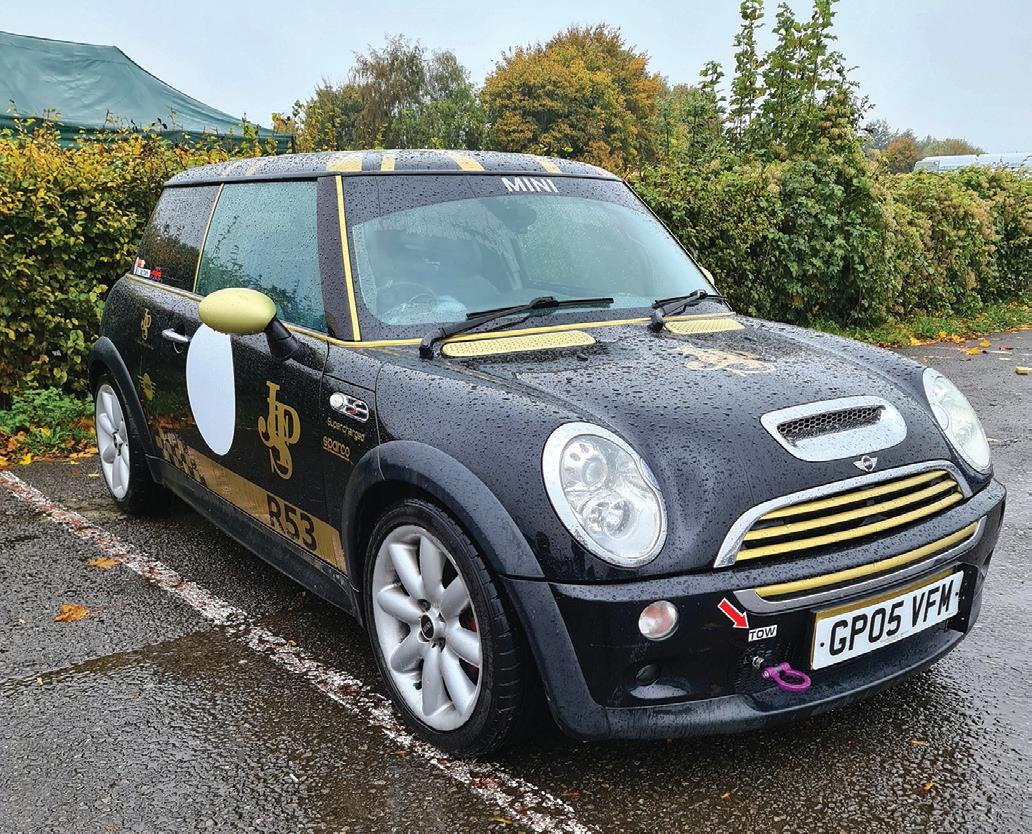
Tony Pitt 1940-2021
Tony Pitt was one of three jazz musicians brought together by Roger Ramage, former Brooklands Museum Marketing and PR Manager. They formed the Brooklands All Stars, entertaining Members at twice yearly sessions.
With his brother Vic on double bass and up to three others, including Bob Webb, Member and Volunteer, on saxophones, Tony entertained Members in the Club Bar and Bluebird Room.
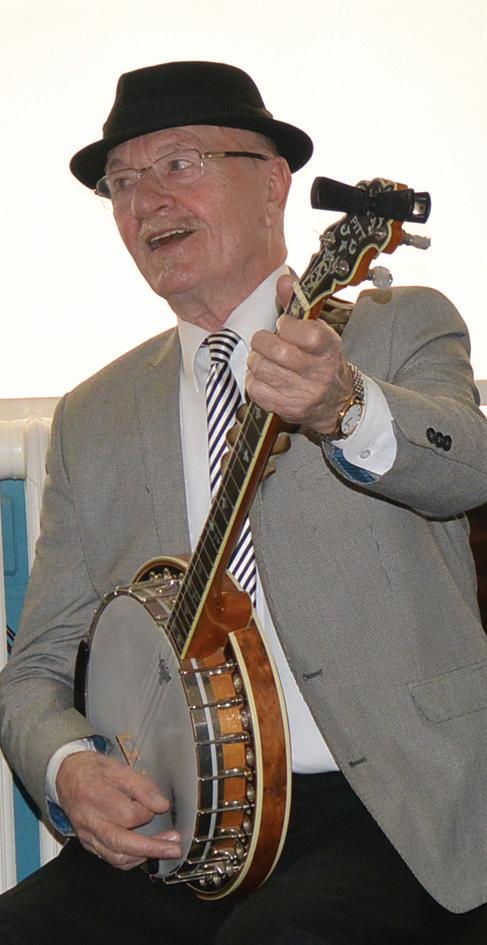
Tony had a long career spanning more than 50 years playing guitar and banjo with the likes of Alex Walsh, Acker Bilk, Mike Cotton, Kenny Ball, Alan Elsdon, and Laurie Chescoe. More recently, Tony was rhythm anchor for Terry Lightfoot and Phil Mason, and he continued this role in the Brooklands All Stars. His foot tapping was a feature of his spirited performances.
Tony died on 7 January, 2021 of Covid-19 and underlying health conditions. He leaves us with many happy memories and will be greatly missed.
Nigel Brecknell
In memory of…
Sadly, each issue we lose some of our Members and we’d like to pass on the condolences of the Brooklands Members, Chairman and Committee to the families of the following who we have been notified have recently passed away.
Joyce Phillips, passed away in January 2020. She was a Member for several years with her husband John, who continues as a Member.
Paul Evernden, a longstanding Individual Member of 20 years who was ‘proud to be a Brooklands Member’. Paul passed away in October.
Mrs M Rourke, who was a Club Level Member with her husband
performance and finished the day by limping home for a fresh set of brake pads.
Like every event, the more people who attend, the better the experience is. A special thank you goes to Old Farts Racing, who joined the Brooklands Members so this event could take place.
Cat Clark
Joe Finnis 1994-2019
As we head into 2021, we’d like to take a moment to remember the passing of Joe Finnis, who died suddenly just before midnight in a car crash on 31 December 2019, aged 25.
Growing up in Hinchley Wood, Esher, Joe was a regular visitor to Brooklands from an early age with his twin brother and parents, both keen Members. Inspired by the aircraft on display and the stories of those who flew them, Joe’s only dream was to become a pilot, and for a while helped the teams restoring the vintage aircraft.
When not flying with the Air Cadets or as a steward for British Airways, he could be found lending a hand to his Dad under the bonnet of their prized MGB or Triumph TR4, and routinely attended Brooklands classic car meetings together.
The Finnis family has chosen to donate proceeds from the BA Angels fund towards the ongoing restoration of the Vickers Viking in Joe’s memory.
Ben Finnis
John for nine years. John continues his membership.
John Hartridge, an Individual Member for eight years.
David Blackman, a Club Level Member with his wife Maureen since 1989, who passed away late last year.
Edwin Genet, a Club Level Member since 2001, who passed away in August.
Antony Oksien, an Individual Member for four years, who passed away in November.
Lonnie Pugh, who held a Double Membership with his wife Marian for five years, passed away in October.
BROOKLANDS BULLETIN | MARCH - APRIL 2021 46





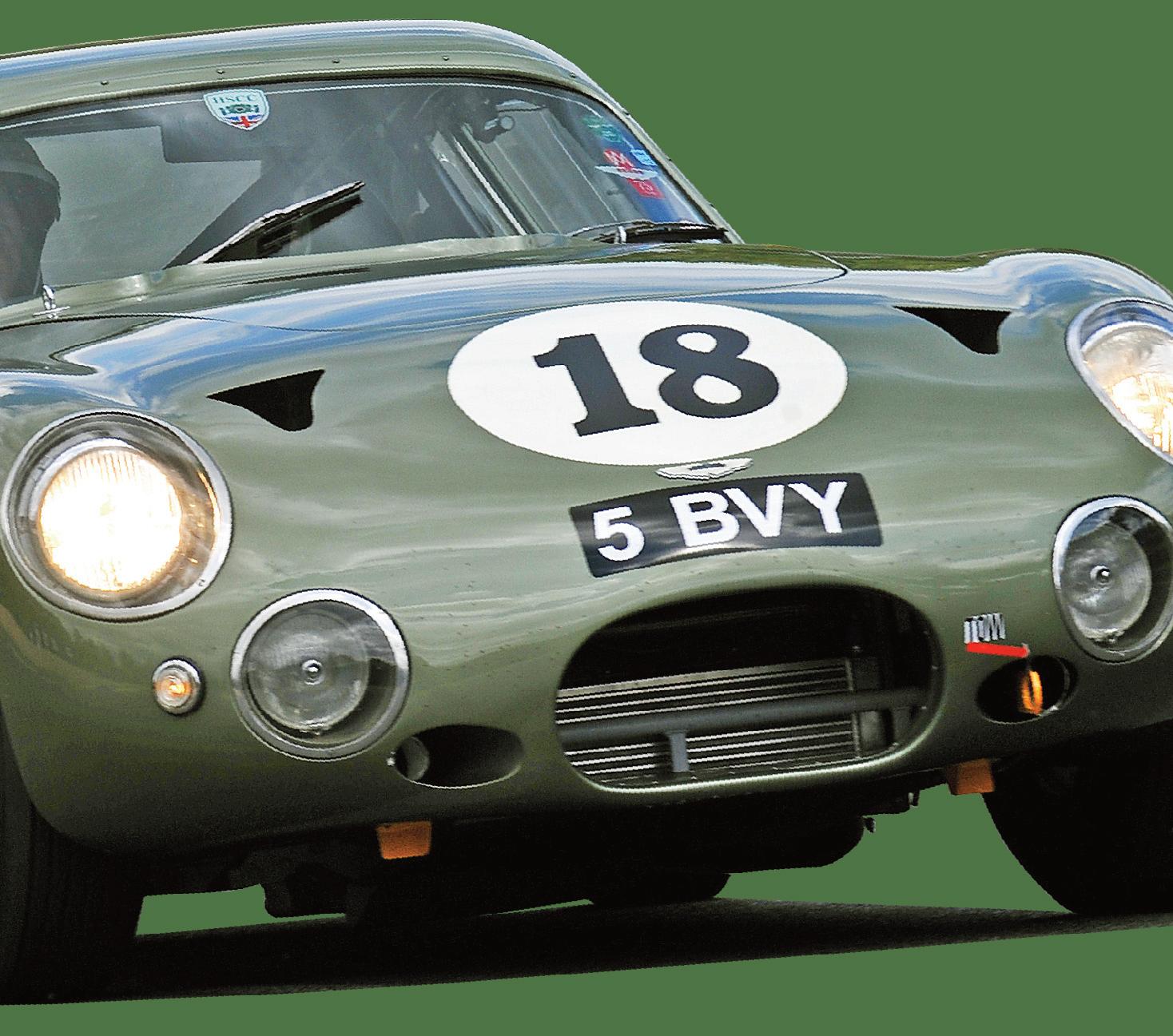




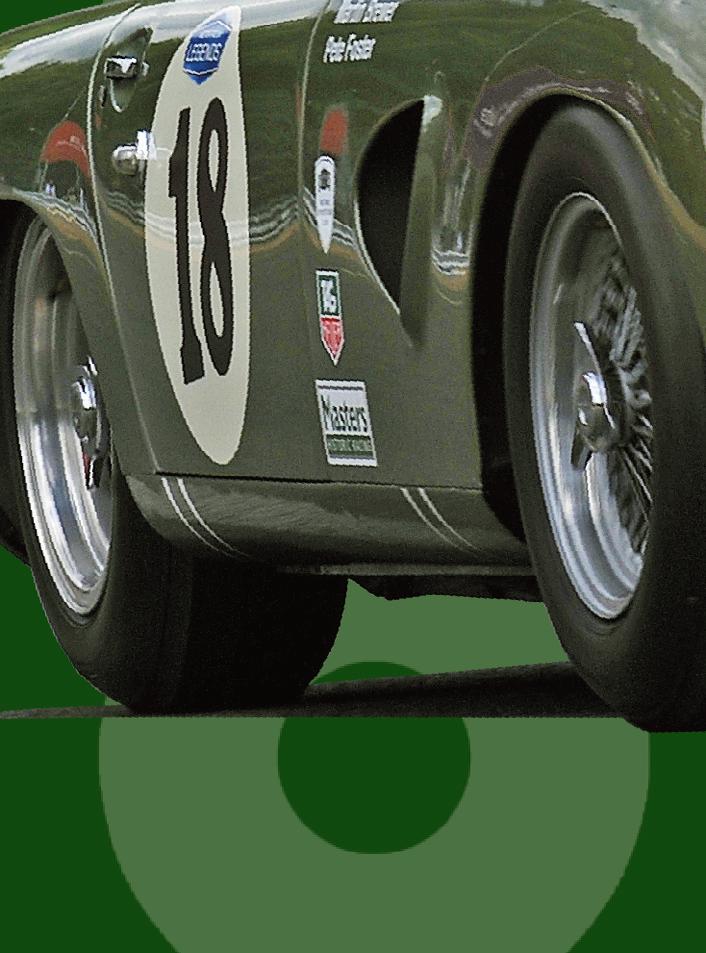
T HE FINEST CARS. THE BEST EXPERIENCE THE MONACO CLASSIQUE A MAJOR SALE OF 120 FINE COLLECTOR CARS Please visit the website for news updates, to view all entries, for bidder registration and to enter a motorcar to Monaco and a future UK Historics auction Entries include this celebrated 1999 ASTON MARTIN DP214 RECREATION Full FIA papers, impeccable credentials and excellent competition history Estimate: £925,000-£1,000,000 / €1,035,000-€1,118,000 ASCOT RACECOURSE 20th March MERCEDES-BENZ WORLD 15th May BROOKLANDS MUSEUM 25th September WINDSORVIEW LAKES 17th July MERCEDES-BENZ WORLD 27th November 2021 UK AUCTION CALENDAR + 44 (0)1753 639170 auctions@historics.co.uk www.historics.co.uk 23 APRIL CHAPITEAU DE L’ESPACE FONTVIEILLE, MONACO
Castrol Classic Oils +44 (0)1954 231668 sales@classicoils co uk









TQD TQF, RR363, Brake Fluids Greases, Semi-Fluid greases etc






l Small size from 500ml to Home Workshop sizesFree UK mainlandNext Day Delivery offers
























www.castrol.com/uk/classics


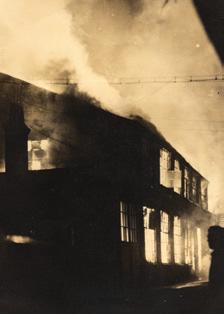


Classic Valvemaster™ +44 (0)1954 231668 sales@classicvalvemaster co uk www classicvalvemaster co uk














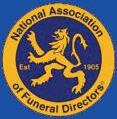

BROOKLANDS BULLETIN | MARCH - APRIL 2021 48 Alan Greenwood & Sons Quality Funerals at a Fair Price Please Visit Our Website for Full Details of Our Services and to View all Our Online Obituaries www.alangreenwoodfunerals.com Caring and Compassionate Service 24 hours 365 days Latest Jaguar or Mercedes Funeral Vehicles Golden Charter Pre-paid Funeral Plans Home Visit Arrangements and Memorials The Greenwood Family are directly involved in the running of the Company, ensuring that your wishes are carried out with the utmost dignity and a�en�on to detail. East Surrey Area Office 020 8546 3960 West Surrey Area Office 01483 210 222 We Have Branches Across Surrey and S W London K 9 0 d l Engine protection in all driving conditions l Octane Boost for all unleaded fuels l One bottle treats 250 litres of fuel l FBHVC endorsed - most effective additive Original Castrol grades: Castrol’s Classic Oils are produced to original viscosities and contain the necessary anti-wear additives to provide overall protection of veteran, vintage and classic vehicles Valvemaster™ & Valvemaster™ Plus Octane Boost Improves performance, protects against valve seat recession and fuel system corrosion Valvemaster™ Plu raises fuel by up to 2 octane Classic Valvemaster™ formerly branded as Castrol Valvemaster™ XL30, XXL40, GP50, XL20w/50 R40, 10w/60 syn., EP80, EP90 ST90, EP140, D140, LS, B373
s ™ 8 k k A Qu Please www. C The Company E 0 W Cynghordy Llandovery Carmarthenshire, SA20 0NB Tel: 01550 750274 e-mail: info@cambrianway.com www.cambrianway.com 2 Explore some of the best roads and scenery in the UK 2019 / 20 Club Tour Packages Looking for a venue for your club or friends in 2019 or 2020 contact us to discuss packages and dates. We already have 18 clubs booked in 2019 & 7 for 2020 Tours include dinner bed & breakfast, drinks reception on s e pack containin m t wee window sti ker n n Su id S o map, road b ks con the route h & entry to o t a n. 2.50 per per n 3 night tour. L M KE R D TES o ny ake & Age of Car 5th to 8th July – 11 cars booked, 2 rooms left 5th to 8th August – 4 cars booked, 7 rooms left brooklands bulletin TO ADVERTISE IN THE NEXT ISSUE OF BROOKLANDS MUSEUM 187,000 VISITORS PA (2018) • A4 • FULL COLOUR • 10,000 MEMBERS • 6 ISSUES PER YEAR • 52 PAGES SEPTEMBER-OCTOBER 2020 brooklands bulletin Brooklands is back on track! Brooklands September-October 2020.indd 1 18/08/2020 CONTACT NICK ON 01452 730770 OR EMAIL nick@hinemarketing.co.uk T Allan Winn used to driving the rival, the Barnato-Hassan Special. Here are his impressions of this Bentley-powered racing car. DRIVING THE DREAM Eighty years ago, Brooklands came under attack. We find out what happened in these air raids and BROOKLANDS UNDER ATTACK ABC IN THREE B I Earlier this year we described how Jack Emmerson won the first race back at Brooklands after World
Indian – a full history



This officially licenced anniversary edition is an updated issue of America’s First Motorcycle Company originally published in 2016. It charts the history of Indian Motorcycle from its inception to the release of its latest models for 2020.


The Indian Motorcycle Company was founded in 1901 as a result of a collaboration between bicycle manufacturer George Hendee and young Swedish engineer Oscar Hedstrom, who had developed improved carburetion for the De Dion-Bouton engines in his motorised motorcycles used for pacing bicycles. Carburetion improvements had made these pacers very popular and very soon Hendee suggested Hedstrom’s powerplant would make a successful form of transportation for the masses when combined with the Hendee company’s frames. The Indian name came from Hendee’s successful range of export bicycles. Native American imagery was made popular at this time in the US and abroad from the success of Buffalo Bill’s Wild West Show.
This is a well-researched book written by Darwin Holstrom, former Midwest Editor of the Motorcyclist Magazine and former Senior Editor at Motorbooks. It contains a level of detail that will appeal to enthusiasts while not overwhelming the casual reader. The large size of the book provides ample room for many large photographs, at least one on each of the 223 pages.
Having recently researched the motorcycles of ABC, I noted that Indian were also pioneers of leaf spring suspension. It was also an early adopter of mechanical oil pumps, electric lighting and even a less than effective electric start. The book is understandably American-centric, but it does fully represent the sporting highlights of the marque at the TT and successes at Brooklands between 1911 and the early 1920s with the Powerplus and Scout V-twins.
Fast forward to the 1940s and ’50s and this great American firm came under the control of British company J Brockhouse and Company just after they had produced a number of attractive lightweight bikes which seemed to owe much in design to their British counterparts. We also learn the end of the true Indian Motorcycle came in the early 1960s, after which it underwent a number of evolutions similar to that of Norton in Britain. The brand was purchased by snowmobile pioneer Polaris in 2011, which saw an opportunity to build on the success of its own Victory
Indian at Brooklands
In 1911, Indian was winning races across the world, including the top three places in the Isle of Man Senior Tourist Trophy. Indian’s British racing effort was masterminded by its British agent WH ‘Billy’ Wells. Indian rider Charlie Franklin quickly became noticed after gaining third place in his fi rst Brooklands appearance, where he was regularly up against the V-Twin Matchless of the Collier Brothers. Canadian-born Jake de Rosier
motorcycles. From this point, the author takes us in detail through the development and production of the revived Indian Motorcycle models until the present day. This section contains many concept and CAD drawings, showing how the models progressed prior to production.
Initially, I was sceptical this was just another coffee table book, but I was impressed with the level of detail and imagery set out in an accessible format. I learned so much about a marque that had previously only remained in my peripheral vision.
Martin Gegg
also rode an Indian to success in a match against Charlie Collier in 1911.
The First World War saw racing stop at Brooklands, but the American marque was represented in the 1915 Service Meetings by CP Marcel RNR on his own 994cc Indian. Later, in August 1920, Herbert LeVack made his first Brooklands outing for Indian. He failed to score on this occasion but achieved a second place in the Senior Open Handicap later the same day on the legendary 998cc V-Twin.
MARCH - APRIL 2021 | BROOKLANDS BULLETIN 49 reviews 120 Years of America’s First Motorcycle Company by Darwin Holmstrom is priced £35. Published by Motorbooks: ISBN 978-0-7603-6653-0
AROUND THE COLLECTION
Brooklands Members
Members’ Administrator
Sarah Dover 01932 857381 ext 226 Mon-Fri members@brooklandsmuseum.com
Chairman
Neil Bailey 07970 206778 chairman@brooklandsmembers.co.uk
Secretary Kevin Lee 01932 562246 kevin@abbeywalls.com
Tours and Trips
Angela Hume 07884 184882 Angelahume@brooklandsmembers.co.uk
Outreach
David Norfolk 01372 373929 david@davidnorfolk.wanadoo.co.uk
Talks
Steve Clarke 07860 355525 steveclarke@brooklandsmembers.co.uk
BM.tv
Mark Jarman 07710 783536 nonesuche@gmail.com
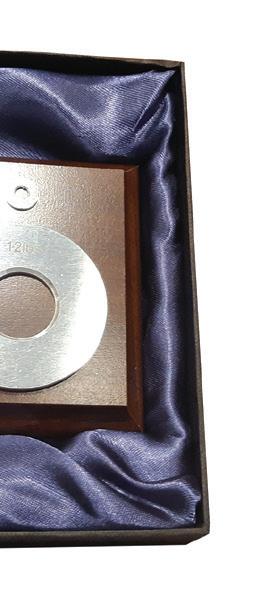
Bulletin Editor
Alisdair Suttie 07768 372440 brooklandsbulletineditor@gmail.com
Contributors
Katherine Allen, Morag Barton, David BrockingtonHill, John Burch, Cat Clark, Steve Castle, Steve Clarke, Debbie Crawt, Malcolm Day, Sarah Dover, Julian Grimwade, Anna Jackson, Mark Jarman, Martin Gegg, Angela Hume, Stefan Lange, Andrew Lewis, Tim Morris, Alex Patterson, John Philips, Gareth Tarr, Mike Venables
Advertising, Design and Production: Hine Marketing, Tel: 01452 730770

Hill Farm Studios, Wainlodes Lane, Bishops Norton Gloucestershire GL2 9LN
E-mail: nick@hinemarketing.co.uk
Address change and Bulletin distribution
queries
01932 857381 ext 226 members@brooklandsmuseum.co.uk
Brooklands Museum, Brooklands Road, Weybridge, Surrey KT13 0QN 01932 857381 Fax: 01932 855465 www.brooklandsmuseum.com
Brooklands Museum
Chairman Sir Gerald Acher CBE LVO gerryacher@brooklandsmuseum.com
CEO Tamalie Newbery ext 243
Director of Collections, Interpretation and Heritage
































Alex Patterson ext 247
Visitor Experience Manager
Jenny Pettit ext 302

Volunteer & HR Manager
Aimee Nelson ext 303
Learning Officer
Laura Barclay ext 257
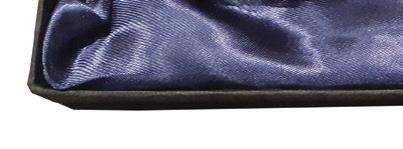
Curatorial and Archive Enquiries

Andrew Lewis ext 246
Chief Operating Officer
Amanda Squires ext 255
Head of Track and Air Events
Steve Castle ext 244
Concorde Bookings
ext 266
flyconcorde@brooklandsmuseum.com
Hospitality Sales Manager
Joanna Rodgers ext 251 hospitality@brooklandsmuseum.com
Marketing Director
Sam Hart ext 225
Email addresses are available on the Museum website www.brooklandsmuseum.com/about/ contact-us
In a new display in the Clubhouse sits an oldstyle driving licence in the name of Beatrice Naylor. It’s one of the artifacts telling the story of women with Brooklands connections who forged careers in engineering.
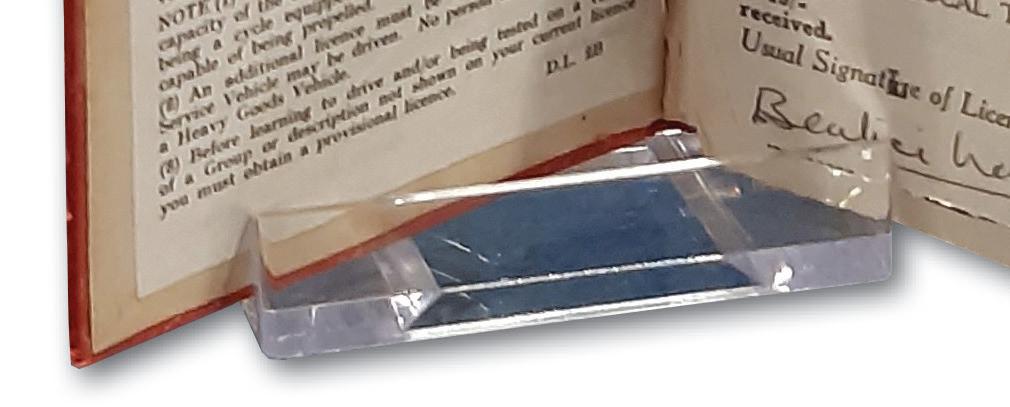


Beatrice Naylor, better known under her maiden name of Beatrice ‘Tilly’ Shilling, was born in Waterlooville, Hampshire in 1909 and bought her first motorcycle aged 14. After leaving school in 1926, she became an apprentice electrical engineer before studying Electrical Engineering at Victoria University of Manchester, graduating in 1932, and completing a Master of Science in Mechanical Engineering degree in 1933.
The following year, Beatrice was sixth in her first race at Brooklands on her selfprepared 490cc Norton after only three practice laps. She went on to win a Gold Star for lapping at over 100mph later that
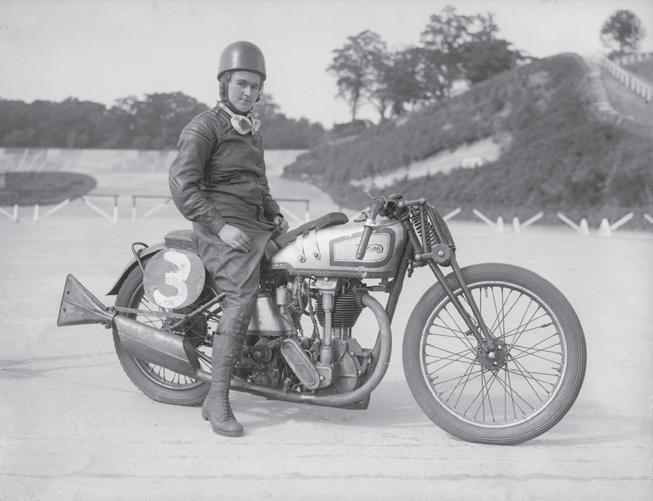
year.
Parking arrangements
Parking arrnagements for other weekend events are:
at Farnborough, where she became the leading specialist aircraft
investigated why Hurricane and Spitfire Merlin engines would in a
In 1936, Beatrice started work at the Royal Aircraft Establishment (RAE) at Farnborough, where she became the leading specialist in aircraft carburettors. During the Second World War, she investigated why Hurricane and Spitfire Merlin engines would stall in a steep dive. She discovered it was due to momentary fuel starvation and could be overcome with the addition of a small washer-type disc inserted into the SU carburettor. This modification saved many lives.
Beatrice Shilling worked for the RAE until her retirement in 1969, reaching a senior post and receiving an OBE for her work during the war. She held a doctorate from the University of Surrey, a CEng and was a member of the Institution of Mechanical Engineers and the Women’s Engineering Society. You can read more about women who raced motorcycles at Brooklands in a future edition of the Bulletin.
Please note that for all events marked ‘Parking in The Heights’, designated vehicles only can enter via the Campbell Gate, off Brookland’s Road. All other Members including Club level and visitors please park in The Heights or main public car park unless otherwise specified.
Club level Members: entry via Campbell Gate and parking outside the Paddock. Period and classic vehicles only inside the Paddock by invitation. Please abide by staff directions.
All other Members and visitors: entry via main public entrance off Brooklands Drive.
This issue of the Brooklands Bulletin (incorporating The Spirit) is published on behalf of Brooklands Members, supporters of Brooklands Museum Trust Ltd, by Hine Marketing, Hill Farm Studios, Wainlodes Lane, Bishops Norton, Gloucestershire GL2 9LN. The statements and opinions expressed in the Bulletin are not necessarily those of the Brooklands Members’ Committee or Brooklands Museum Trust Ltd.
While every effort has been made by the Publishers to include correct information, they are unable to accept responsibility for errors or omissions. The Publishers, Brooklands Members and Brooklands Museum Trust Limited cannot accept responsibility in the event of misinformation or lack of source relating to images supplied by a third party by electronic or other means.
Charity number 296661. Please quote this if making donations or requesting them via a funeral director.
BROOKLANDS
| MARCH - APRIL 2021 50
BULLETIN






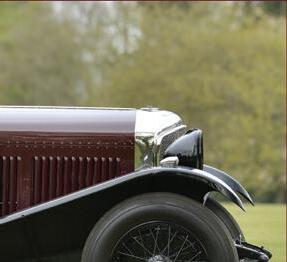



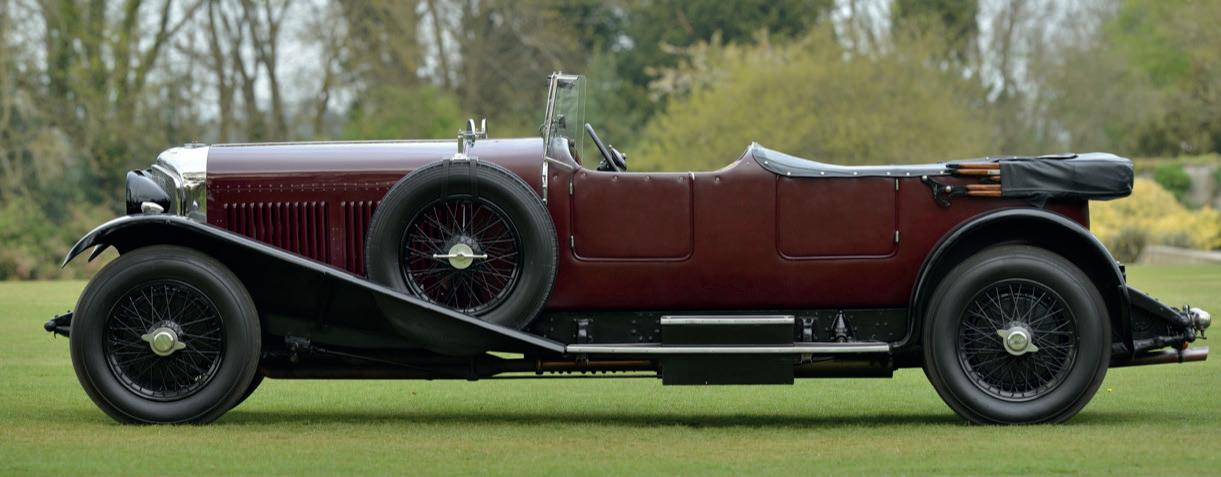

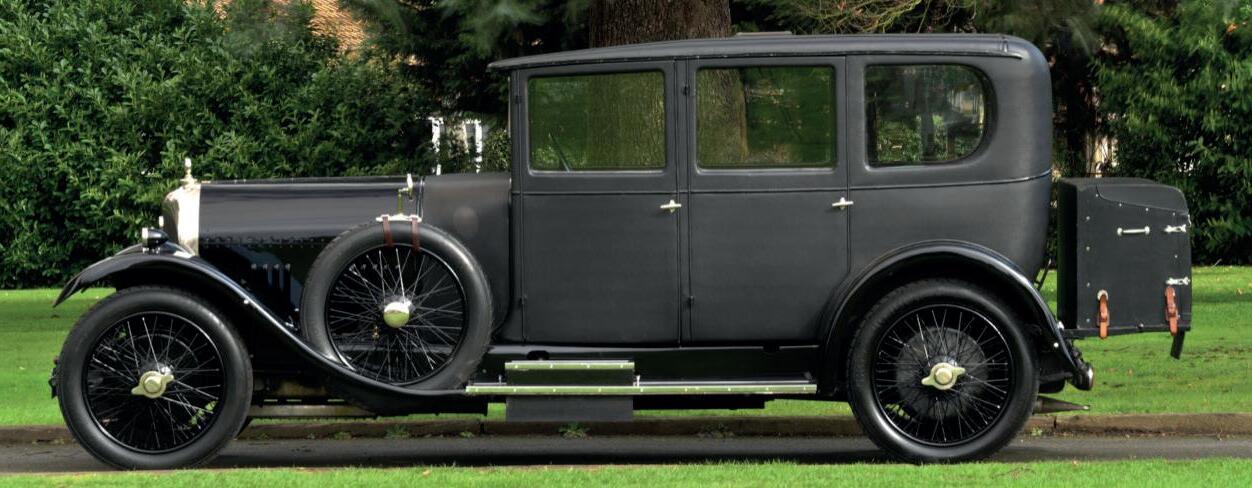

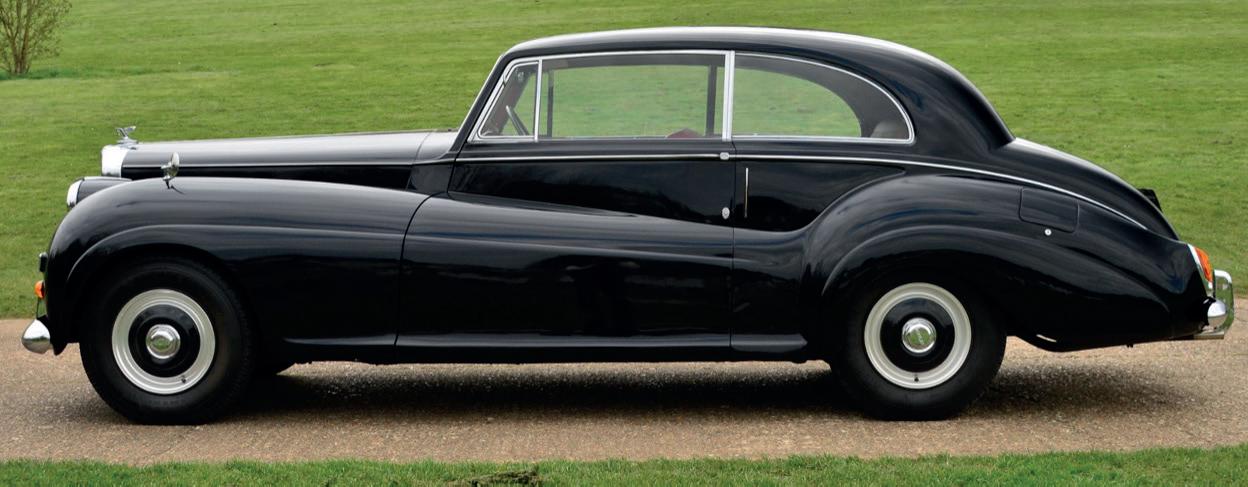

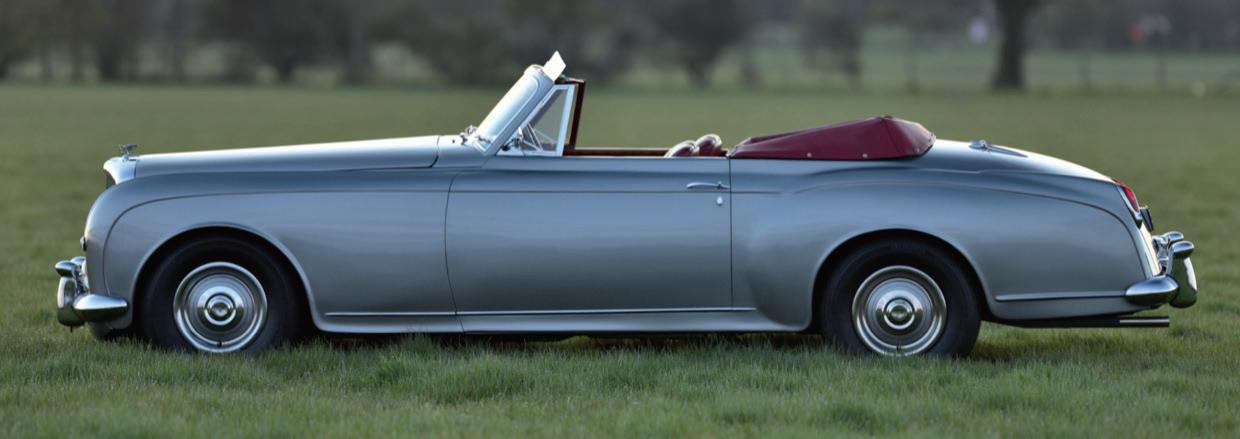
 1931 Bentley 8 litre Tourer. £920,000
1931 Bentley Speed Six Tourer £850,000
1926 Bentley 3 Litre Weymann Saloon by J. Gurney Nutting. £320,000
1932 Bentley 4/8 Litre Supercharged Racer. £885,000
1954 Bentley R Type Coupé By James Young £150,000
1931 Bentley 8 litre Tourer. £920,000
1931 Bentley Speed Six Tourer £850,000
1926 Bentley 3 Litre Weymann Saloon by J. Gurney Nutting. £320,000
1932 Bentley 4/8 Litre Supercharged Racer. £885,000
1954 Bentley R Type Coupé By James Young £150,000
WE WANT YOUR BENTLEY
1998 Bentley Continental Sedanca Coupe £178,000
1957 Bentley Park Ward Drop Head by Park Ward. £1,100,000
14 Bentleys sold so far this year. 29 sold last year! 2 Ryehill Ct, Lodge Farm Industrial Estate, Northampton NN5 7UA
1957 Bentley S1 Fastback by H.J. Mulliner £450,000

020 7933 2200 Performance-quotes@uk.lockton.com locktonperformance.com Leading specialist insurance advisor for classic and performance cars. We make good decisions on your behalf and develop the right solutions for you. First-class service, expert protection, let’s go. start your adventure THE RIGHT WAY Lockton
Financial
Performance is a division of Lockton Private Clients, both trading styles of Lockton Companies LLP. Lockton Companies LLP is authorised and regulated by the
Conduct Authority.



































 Sarah Levine
Sarah Levine





















































































































































































































































































 1931 Bentley 8 litre Tourer. £920,000
1931 Bentley Speed Six Tourer £850,000
1926 Bentley 3 Litre Weymann Saloon by J. Gurney Nutting. £320,000
1932 Bentley 4/8 Litre Supercharged Racer. £885,000
1954 Bentley R Type Coupé By James Young £150,000
1931 Bentley 8 litre Tourer. £920,000
1931 Bentley Speed Six Tourer £850,000
1926 Bentley 3 Litre Weymann Saloon by J. Gurney Nutting. £320,000
1932 Bentley 4/8 Litre Supercharged Racer. £885,000
1954 Bentley R Type Coupé By James Young £150,000
